WATER CITY Milwaukee pioneers a freshwater future

RESCUE AND RELEASE
Injured wildlife get a second chance Track the rise of electronic dance music
TURN IT UP




Injured wildlife get a second chance Track the rise of electronic dance music


Every minute of our lives, our pulse is constantly fluctuating. Whether we are standing up or lying down, moving around or sitting still, stressed or relaxed, our heart rate is constantly changing — just like our lives. Scientists say that our heart rate adapts to our body’s need for energy throughout the day, just as we as a society adapt to the changes life throws at us.
To say the last two years have been hard is an understatement. We have lived through one of the worst pandemics forcing us into an international shutdown while facing an increasingly polarized political environment that has further divided our country. The situation has forced our society to revamp and reevaluate the way we live.
Through all of the hardships, we often find ourselves asking: What does it truly mean to be alive? While for some it might mean living every day to the fullest and striving to become an elevated version of themselves, for others it means doing what has to be done to make it through to the next day.
This year, the Curb team took the “Pulse” of Wisconsin. We dug into what drives the heart that beats and propels us forward. In this issue, we explore the passions, hardships and discoveries that shape the people of Wisconsin.
We traverse the state through stories of how both people and businesses have fought to survive these difficult years, what they have done to continue to thrive and how they strive for greatness, bettering themselves and the surrounding community. It’s only up from here.
All the best, Editor In Chief
There’s more to love!
Visit us at curbonline.com
Curb is published through generous alumni donations and administered by the UW Foundation and in partnership with Royle Printing in Sun Prairie, Wisconsin.
©Copyright 2022 Curb Magazine
Brooke Messaye, Editor In Chief
Gina Musso, Managing Editor
Erin Gretzinger, Lead Writer Christy Klein, Lead Writer
Erin McGroarty, Lead Writer Charlie Hildebrand, Copy Editor Allyson Fergot, Copy Editor Zehra Topbas, Copy Editor
Ann Kerr, Business Director
Emily Rohloff, PR Director Jake Rome, PR Director
Samantha Benish, Marketing Representative Jamie Randall, Marketing Representative Robin Robinson, Engagement Director
Zoe Bendoff, Art Director Anica Graney, Production Editor Annabella Rosciglione, Production Associate Thomas Hill, Production Associate Perri Moran, Photo Editor
Nicole Herzog, Online Director Mason Braasch, Online Producer Matt Blaustein, Multimedia Editor Braden Ross, Multimedia Editor
Stacy Forster, Publisher

Unless otherwise noted, all photos are attributed to Perri Moran

 By Zoe Bendoff
By Zoe Bendoff
We all have things that make us tick and fill our hearts with joy. Curb Pulse is all about diving into the lives of the people of Wisconsin to find out what drives their experience in the state. Here are some items to help you fuel the things that excite you. Whether you’re an avid music lover, a health nut, a connection seeker or simply enjoy the thrill of a racing heart rate, these products are sure to match your rhythm.
For the ones who just can’t stop the beat Happy Face Throw Pillow Bluetooth Speaker urbanoutfitters.com Listen to your favorite jams with quality sound technology from the comfort of your favorite spot in your home with this multifunctional pillow and Bluetooth speaker.

Game That Song amazon.com Test your knowledge of your friends’ and family’s favorite beats and build connections as you groove to the rhythm.


JBL Tune Wireless On-Ear Headphones 510BT target.com These lightweight, wireless headphones featuring JBL’s Pure Bass Sound make for an elevated music experience whether you’re getting your blood pumping or relaxing.

For the thrill seekers
Meta Quest 2: Advanced All-In-One Virtual Reality Headset - 128GB target.com Skydive, walk the plank or get in a bar fight from your living room with this virtual reality headset guaranteed to make your heart race.

“The Woman in the Window” by A.J. Finn amazon.com Anna Fox, who is suffering from agoraphobia after a car accident, thinks she witnessed a murder in her neighbor’s apartment. This psychological thriller will keep you on the edge of your seat.

For the heart healthy Avocado target.com Incorporating just two servings of avocado in your weekly diet can lower your risk for cardiovascular disease and heart attacks.

BlendJet 2 16 oz. Portable Blender bedbathandbeyond.com Whether you throw in hearthealthy leafy greens, fresh fruits or vegetables, this portable blender makes the perfect pulse, even on the go.

For those curious about what makes others tick We’re Not Really Strangers target.com Take your relationships to new depths and challenge your assumptions with this thoughtprovoking conversation game.
“I Never Thought of It That Way: How to Have Fearlessly Curious Conversations in Dangerously Divided Times” by Mónica Guzmán amazon.com Guzmán’s book teaches us we can find common ground to connect from the heart, even during the most polarized times.
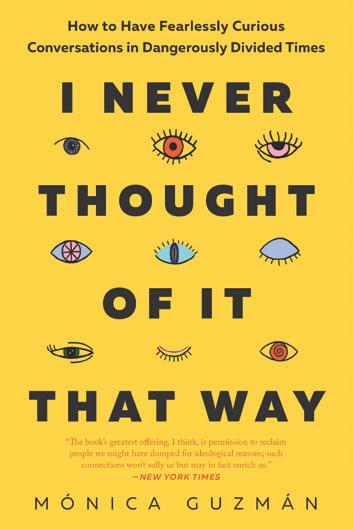
1. How do you feel about the outdoors?
Find out where your next Wisconsin thrill should be! B. C.
A. Nothing’s better than fresh air I like it, but indoor plumbing is nice Eh, not for me
2. How much money are you comfortable spending on a trip?
A. Honestly, I need to save money I have to buy some souvenirs I’m treating myself! B. C.
3. Do you like roller coasters?
A. They’re alright I LOVE THEM! I get motion sickness B. C.
4. How do you feel about crowds of people?
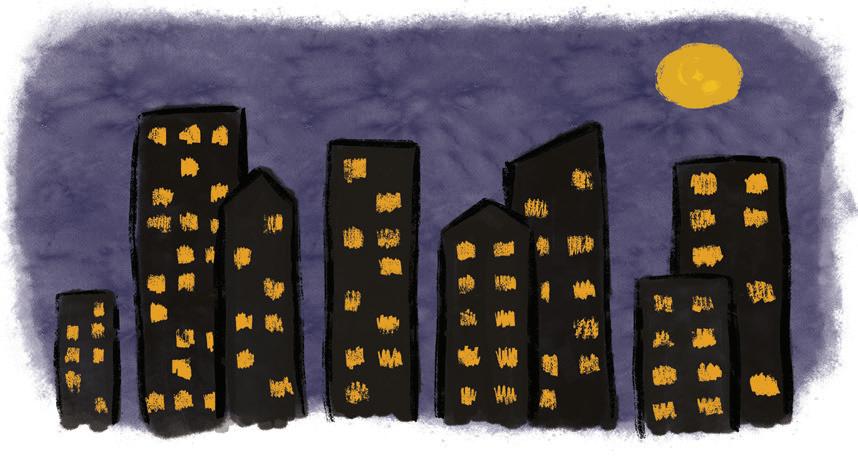
A. Solitude is my sanctuary I can live with them I like getting lost in the crowd B. C.

5. Who are you taking on this trip?
A. Me, myself and I Looking for some family fun Just my S.O. and me B. C.
6. What would you rather do?
A. Fish for a musky Go on a ghost tour See a live band B. C.
7. How do you prefer to spend your weekends?
A. Hiking People watching at the farmers’ market Exploring museums B. C.
8. What are you packing for the trip?
A. The book on my nightstand A camera Headphones B. C.
9. You feel your best in...
A. Athleisure
Tee and blue jeans Anything that says “fashion” B. C.
10. Why do you want to travel?
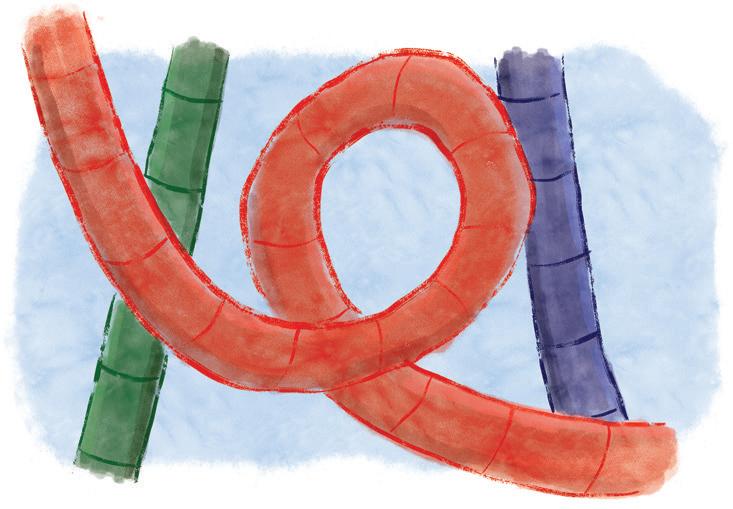
A. To escape day-today stress
To have as much fun as possible To explore the city I’m visiting B. C.
The Northwoods offer an opportunity to disconnect from technology and reconnect with nature. Night fishing, waterfall chasing or snowmobiling are sure ways to get your blood pumping.
The “Water Park Capital of the World” has a little bit of something for everyone. Tall roller coasters and water slides will keep an adrenaline junkie satisfied. If those aren’t your thing, magic shows, haunted houses or riding in one of the Wisconsin Ducks will give you the excitement you seek.
Between great food and cool museums, Milwaukee is a great place to visit if you’re looking for a thrill. Don’t forget to listen to some live music or visit the Milwaukee County Zoo while you’re there. Being around the buzz of Wisconsin’s biggest city will make you feel alive.
Wisconsin’s economy thrives on the inventions founded here. Many places that you pass by every day have been the birthplace of groundbreaking new technologies.

In 1924, Carl Eliason created the blueprint for the first snowmobile. In the Northwoods of Wisconsin, Eliason was in a garage behind his general store in Sayner when he thought of the idea of a motor toboggan. This idea sparked the invention of the snowmobile.
American Girl Doll Pleasant Rowland developed the concept for American Girl dolls in 1986. The dolls were created to help teach girls important moments in history and aspects of girlhood, and each was built with her own unique story. The dolls were manufactured in the Madison suburb of Middleton by The Pleasant Company.

Christopher Latham Sholes worked as an apprentice for a printer, but after four years, he quit to join his brothers who published a newspaper in Green Bay. In 1864, Sholes saw the initial patents for a writing machine and decided to see if he could do something similar. In 1868, Scholes was granted his initial patent for his “letter-printing machine” in Milwaukee, and in the following years, he was granted two more patents.
As the days become shorter and the temperature drops, finding activities to keep busy can be a challenging task. Though Wisconsin is often known for its summer spots, there are a wide variety of both popular and hidden gems throughout the Badger state that offer ideal winter activities for all ages. Grab a hat and gloves, and start exploring!

Snowshoe, hike and ski your way through the picturesque scenery of Copper Falls State Park. Located in Mellen in northern Wisconsin, the park contains more than 15 miles of winter trails. Experience mystical frozen waterfalls and snow-covered views in this real-life winter wonderland. Whether you prefer an active adventure or a serene day trip, Copper Falls is the perfect winter destination to add to your itinerary.
Explore
While the Apostle Islands feature beautiful scenery in the warmer months, the mainland ice caves at the Apostle Islands in northwestern Wisconsin are also a breathtaking sight in the winter. When Lake Superior freezes over, the sea caves are laden with icicle formations. This is an ideal destination for winter sightseeing as the magnificent landscape can serve as an exciting opportunity for photos and an appreciation of nature.
Farmers’ markets are not just a summer activity — from freshly baked goods to satisfying soups, the Milwaukee Winter Farmers Market offers delicious treats for all to enjoy this winter. Visitors can support local vendors while tasting the best seasonal goods in Wisconsin. This is also a great place to purchase holiday gifts, such as jarred spices, jams and artisanal oils. While your heart (and stomach) may be full afterward, a break from the freezing cold temperatures at this indoor farmers’ market will keep your body satisfied this winter season.
BY ANICA GRANEY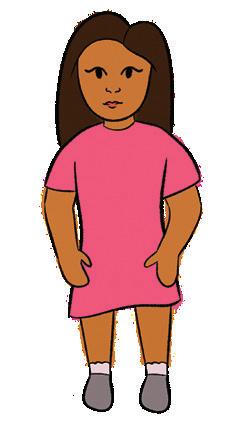
Even in the bitter cold, these dreamy destinations thrive with possibilities
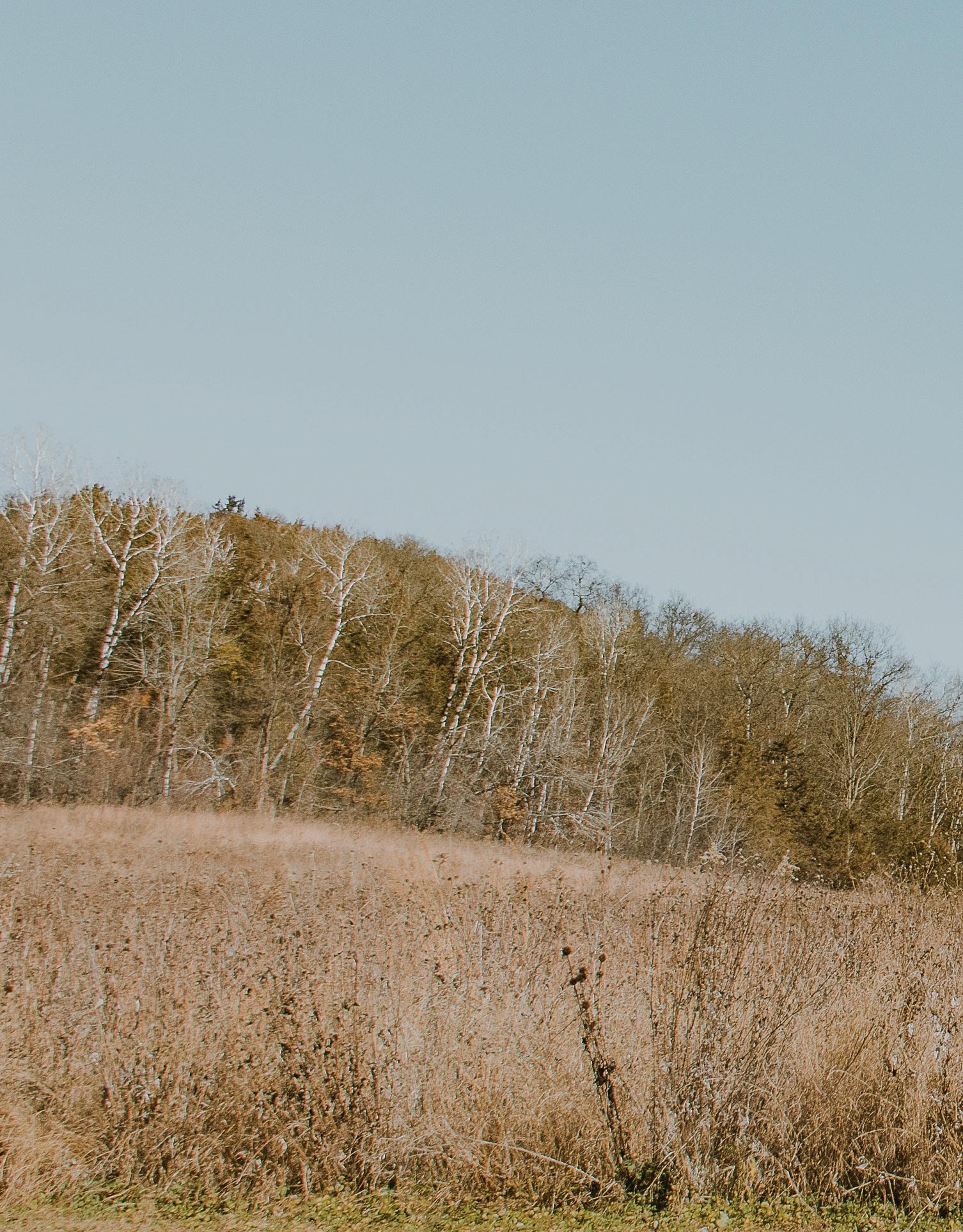 By Allyson Fergot
By Allyson Fergot
On the edge of a neighborhood park in La Crosse sits a dense prairie. Its tall, browning plants stand in stark contrast to the freshly mowed, dark-green grass that surrounds the park. It’s a clear line between careful control and self-suf ficient freedom.
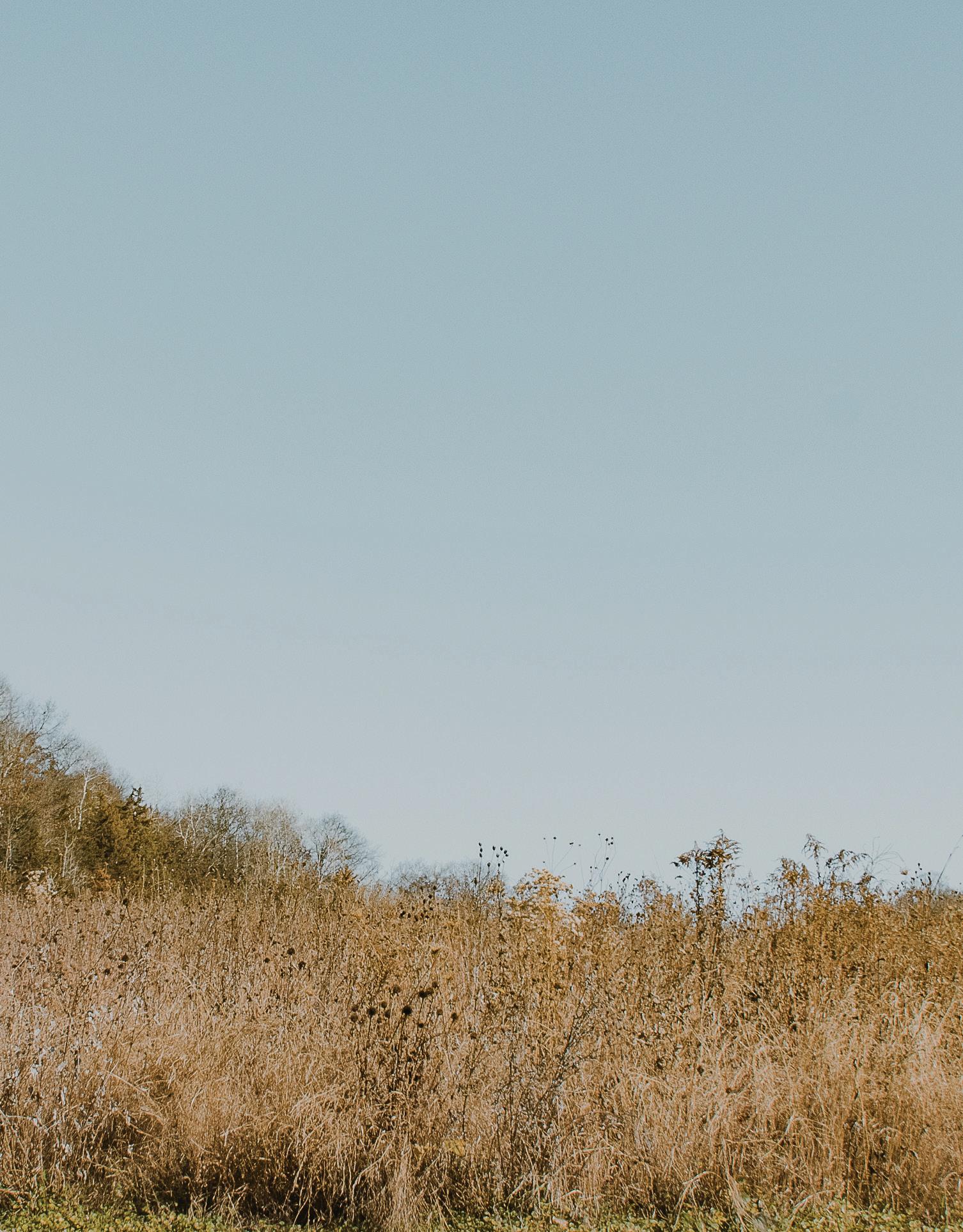
When you approach the boundary between the manicured lawn and the native landscape, you realize how thick the prairie is. Thatch from the plants conceals the ground, mak ing the soil something you can only imagine. The winding yellow-green grasses 10 yards from the border block your view to the other side. The prairie is only four acres from one end to the other, but you could easily get lost in the thicket.
There’s a soft but constant buzz in this ecosystem alive with various insects and birds. The purple, yellow and white flowers visible to an out sider are dotted with the few remain ing pollinators. It’s autumn now. Soon the sound will dull, the flowers will lose their color and the birds will migrate south.
This prairie, a sanctuary for wild life and virtually impenetrable by humans, was not here 15 years ago. It was brought into existence in the late 2000s by a group of amateur conservationists who were interested in bringing Wisconsin’s native land scape into the future.
Before European settlement, prai ries were an essential tool for the well-being of Wisconsin’s habitants. The prairies’ ability to create nutri ent-rich soil led Europeans to con vert them into agricultural land. When Europeans first settled in Wis consin, prairies took up 2.1 million acres. Today, less than 10,000 acres of native prairie remain. In their place stand houses and farmland, shopping centers and schools, and miles and miles of interstate. This modernization left prairies as one of the most decimated landscapes in the U.S.
Now, some Wisconsinites have dis covered a passion for restoring Wis consin prairies.
“It’s progress and whatnot, but I think you have to have a good imagi
nation to think back prior to Europe an movement here ... to see the native grasses and plants and trees,” says Gregg Erickson, one of the amateur conservationists that reconstructed the prairie by the park.
Erickson, now retired, used to work as a science teacher at Central High School in La Crosse. About 15 years ago, Erickson wrote a grant for seeds to grow a prairie containing native plants where he could take his students for educational purposes.
Erickson’s friends, including my dad, helped him prepare the land, plant seeds and burn away weeds in order to establish the new prairie. Now, whenever I walk through my neighborhood or play volleyball in the park with my little sister, I get to see a sliver of what Wisconsin used to look like.
Since restoring the prairie in my neighborhood, Erickson has recon structed more prairies, including one in his backyard. A prairie brings with it a whole ecosystem, and Erickson says there has been a clear change in the wildlife behind his house.
PHOTOGRAPHY BY ALLYSON FERGOT The author’s father helped restore this prairie in La Crosse in 2020.“Turkeys love to eat grasshoppers, and because we have so many grass hoppers around, there’s turkeys all over the place laying their nests in our grasses,” he says.
Jack Buswell, an attorney in Spar ta, a half hour east of La Crosse, first got involved in prairie restoration and management in 1997 when he took over his family farm.
“The real reason I did prairie res toration was to create upland habi tat for birds such as pheasants and quail,” Buswell says.
Prairie restoration is not for the faint of heart, though. The prepara tion process and continuous weed removal can be tedious, and it can take years before the first native plants sprout. A prairie requires lit tle maintenance once established, except for a routine cleansing every few years to clear dead plants and any invasive weeds that have sneaked into the area.
One of the best ways to effective ly get rid of weeds is through one of Earth’s most feared elements: fire.
There are other ways to maintain a prairie, like spot treating weeds using herbicides or by mowing, but Neil Diboll, president and owner of Prairie Nursery in Westfield, in the central part of the state, says fire is the best method.
Although starting out can seem overwhelming, conservationists agree the benefits associated with re storing a prairie outweigh the initial investment of time and money. Not only do restored prairies add natu ral beauty to a landscape and create habitat for pollinators and endan gered species, they’re also a crucial component to fight climate change and mitigate its effects.
Prairies can store carbon deep into the earth because their root system stretches multiple feet into the soil. This makes prairies incredible car bon sinks, which means they absorb more carbon than they release.
The soil structure and root system of prairies also absorb water quickly. This water absorption mitigates the effects of flooding.
Because of habitat creation, envi
ronmental impacts and sheer beau ty, people working in prairie res toration have noticed an increased interest toward it.
“I think things have really been picking up momentum and picking up steam... in the areas of prairie conservation, protection and man agement,” says Armund Bartz, a con servation biologist at the Wisconsin Department of Natural Resources.
The DNR has partnered with private landowners to restore and manage properties. Darcy Kind, a private lands biologist with the Wisconsin DNR, focuses on resto ration and management to benefit at-risk species. Since she started working on the program in 2005, there has been a steady increase in people looking to restore prairies.
“Some people feel like they need to create this habitat because they really want to see monarch butter flies,” Kind says. “Then some people know the history of the property, know that they once had a prairie on their property, so they’re trying to get it back.”
Other groups across Wisconsin are working toward improving the status of prairies in the state. The Grasslands 2.0 project is educating farmers on how agricultural land can be converted into future grass lands and native prairies, which can be grazed by cattle; much like how Wisconsin’s native prairies were once grazed by bison.
Despite the steady increase in in terest, Bartz is hoping more people across the state become involved in prairie restoration. “It’s an under dog habitat that really needs help,” he says. “Prairies are a part of our history, part of our culture, a link to the past and a potential resource for the future.”
This prairie in La Crosse is starting to die as winter approaches. The plants will be back in bloom by summertime.
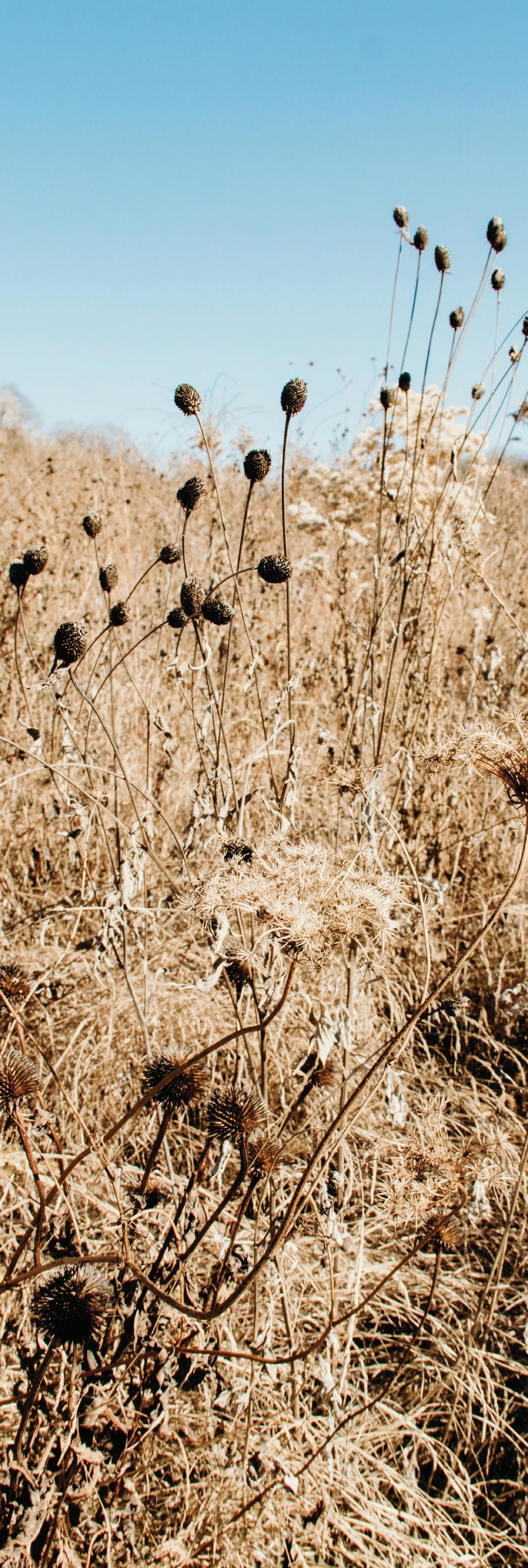
The morning fog covers rush hour on Reiner Road in the unincorporated community of Burke.

It is not uncommon for one to be curious about the in-between.
The homes, farms and play grounds that we see in a passing blur as we zoom by on the county high ways and interstates.
For much of Wisconsin, these are unincorporated towns and commu nities. They’re tucked in between cornfields quilting central Wiscon
the unincorporated town of Burke offers residents the quieter, smaller community feeling they were look ing for. Burke — sandwiched be tween Madison and its largest sub urb, Sun Prairie — was founded in 1851 after its separation from the nearby commuity of Windsor.
Burke quickly became a popular layover spot for travelers as early settler Horace Lawrence established The Prairie House, a hotel located on the road from Burke to Portage.
While The Prairie House no lon ger exists, Burke is still a common travel pit stop. Many people take advantage of the gas stations located along the interstate in Burke.
“That’s an opportunity that wouldn’t be available if it were a larg er community because it’d be such a higher population,” he says.
In 2036, Burke is slated to be an nexed by the surrounding towns of Madison, DeForest and Sun Prairie.
Berg explained that Burke’s bigger neighbors could annex any land they wanted as long as it was adjacent to their own borders.
In 2004, the people of Burke worked with lawyers to create a boundary agreement between these three municipalities to allow the town to remain unincorporated.
PHOTOGRAPHY BY ANN KERRsin, resting below a series of lakes and filling the sprawling root of the peninsula. These places narrate the story of the state’s rich history.
In Wisconsin, there are 1,246 un incorporated towns spanning all 72 counties. These towns provide fun damental services to about 95% of Wisconsin’s geography and 30% of its population.
Even though these communities don’t have typical municipal gover nance, they have a heartbeat of their own that means something to the people who live there, and they are fiercely loyal as a result.
For Steven Berg and Lisa Rubrich,
“It’s kind of a funny thing that people stop here on their way to somewhere else,” Berg says.
Rubrich has lived in Burke since 2003 and now serves as a supervisor on the town board.
She initially moved to Burke be cause her kids could be bused to nearby schools. In addition, the lot sizes were large and she could pay for and manage her own well and sep tic systems, making her yearly taxes lower. The town was also quiet and neighborly.
Berg moved to Burke in 2004 to be closer to his job in Madison. Since living there, he’s served on four dif ferent commissions, as well as the town board.
While this agreement freed Burke to prosper for the last 18 years, its expiration date is set for 2036, when Burke expects to be taken over by Madison, DeForest and Sun Prairie.
Rubrich wants people to remem ber Burke for the same reasons she moved there — a welcoming and friendly community that has operat ed smoothly on its own and served its people well.
Rubrich believes that the annex ation of Burke will change its per sonality “from a quiet hamlet to a quite different style of community,” she says. “We want to leave a legacy for people who are going to get an nexed so that they remember that ... Burke was Burke at some point.”
“That’s an opportunity that wouldn’t be available if it were a larger community because it’d be such a higher population.”
In January 1992, a single call for ever changed the lives of, Yvonne Wallace Blane and her husband, Steve Blane, co-founders of Fellow Mortals Wildlife Hospital.
In the days after that first call, around 150 sick Canada geese would be brought to Yvonne and Steve to be treated. There was no facility — only two bedrooms, a living room, a kitchen, a basement and a porch in
their little log cabin home located in the southeastern town of Delevan. Neither Steve, Yvonne nor their team knew what was wrong with the geese or if they could treat them. Fellow Mortals’ experiences treat ing wildlife involved dealing with fractures, head trauma, orphaning, starvation and dehydration, but never this.
Today, 31 years later, Fellow Mor
tals Wildlife Hospital is in a new lo cation near Delavan, in Lake Gene va, and takes in about 2,000 injured or orphaned wildlife patients annu ally at no charge. Yvonne and Steve, along with their team, have become the heartbeat of wildlife care, provid ing a place full of second chances for Wisconsin wildlife.
The nonprofit’s 52 acres and 10,000-square-foot facility includes
The owl, Darby, a permanent resident of Fellow Mortals Wildlife Hospital, rests on a perch at the rehabilitation facility.
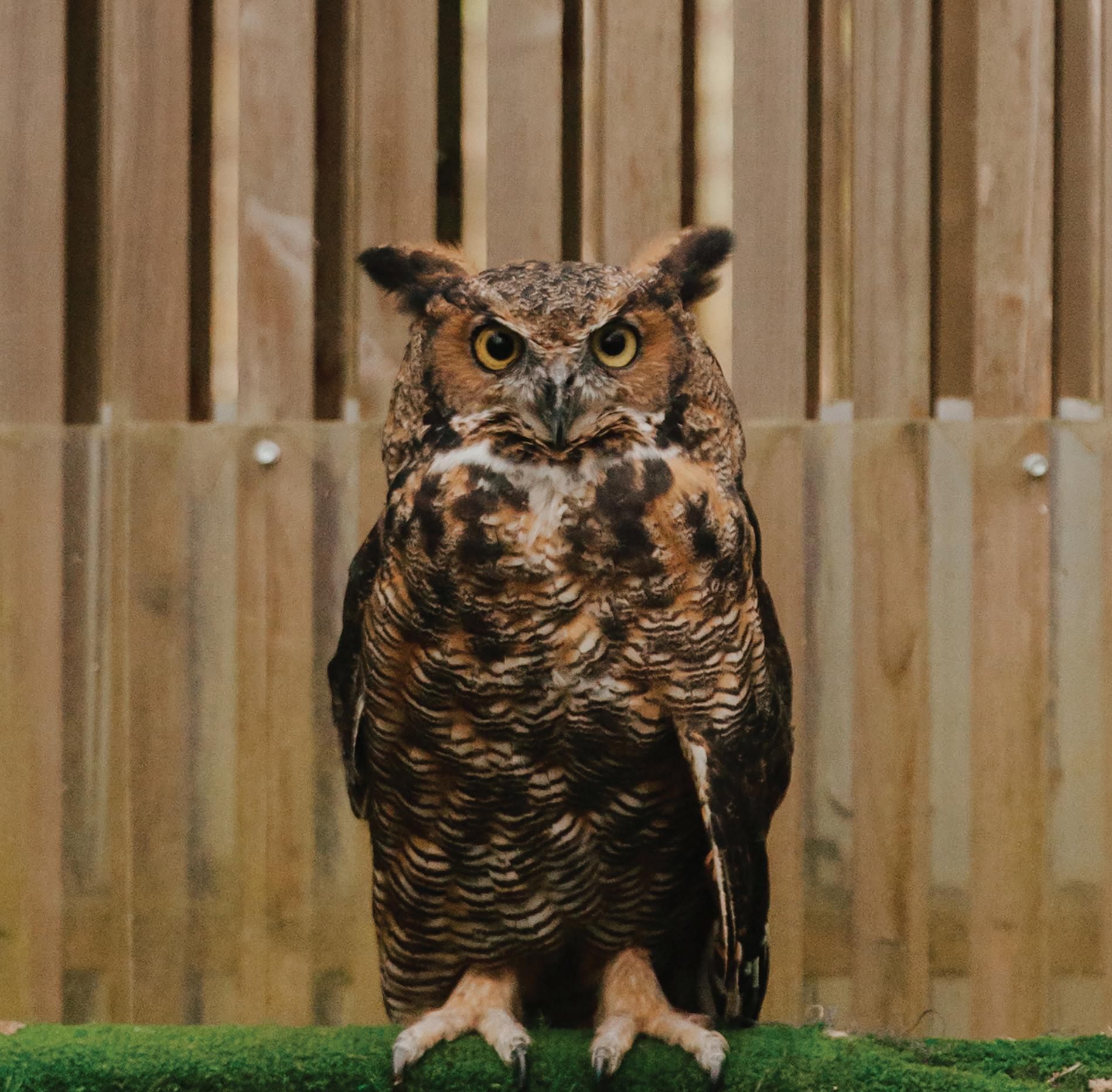
The heartache and joy of the people who nurse Wisconsin’s wildlife back to health
a state-of-the-art hospital, heated in door habitats, large flights, a critical care wing and isolation wards.
Fellow Mortals relies entirely on donations. The organization receives some of their funding through a monthly donation program called Team Hope. Here, members can choose to donate anywhere from $1 to $500 a month. Donors for this program also receive quarterly email updates on how their donations are being used to provide direct care to injured and orphaned wildlife.
When tending to the sick geese in 1992, the Blanes sent the geese to be tested by the staff at the Nation al Wildlife Center in Madison, who confirmed the geese were contami nated with lead poisoning.
Yvonne, Steve and their team be gan treating the geese through lavag es, which is the removal of lead from the gizzard. They also called for help from local and state federal agencies, such as the Wisconsin Department of Natural Resources and the U.S. Fish and Wildlife Service.
Yvonne, still heartsick about the event, remembers dreading each morning having to walk in the cold over to the holding areas to collect the dead bodies of the geese and bring those dying inside her house for warmth.
The geese in critical condition stayed in Yvonne and Steve’s small kitchen and living room to keep warm. The other geese were kept in kennels, set up hastily in their back yard, tarped against the bitter cold and wind with bedded straw and heat lamps.
Today, it is the memory of the 74th bird, who acted as a totem during that horrible time, that stays with the Fellow Mortals’ staff. To the Fel low Mortals’ team he represented all of the birds who were rescued, fought to survive, and lived or died. The team was able to release him on Easter Sunday of that year, and with him, release the horror of those few months. The state and federal agen cies’ belief in the Fellow Mortals’ staff and their assistance with per sonnel, advice, caging and evidence collection is what is helping make their effort a success.
The cause of the sickness was not dealt with until several years later, in October 1996, when the U.S. Envi ronmental Protection Agency began removing more than 28,000 tons of contaminated soils and sediments from the site where the Canada geese, and hundreds of other wild life, had been exposed.
It was the worst case of lead poi soning in southeastern Wisconsin’s history, and it was the first time the EPA ever got involved in a case that resulted solely in the loss of nonhu man life.
“I think we had about 300 animals maybe that year,” Yvonne says. “Our numbers pretty much doubled over night. That was really the turning point I think for us where we knew, or we realized, we had to make a de cision.”
And make a decision they did.
Gail Buhl, program coordinator for the Partners for Wildlife at the Raptor Center in Minneapolis, says Yvonne and Steve have brought high standards to the field of wildlife re habilitation in Wisconsin by creating Fellow Mortals Wildlife Hospital.
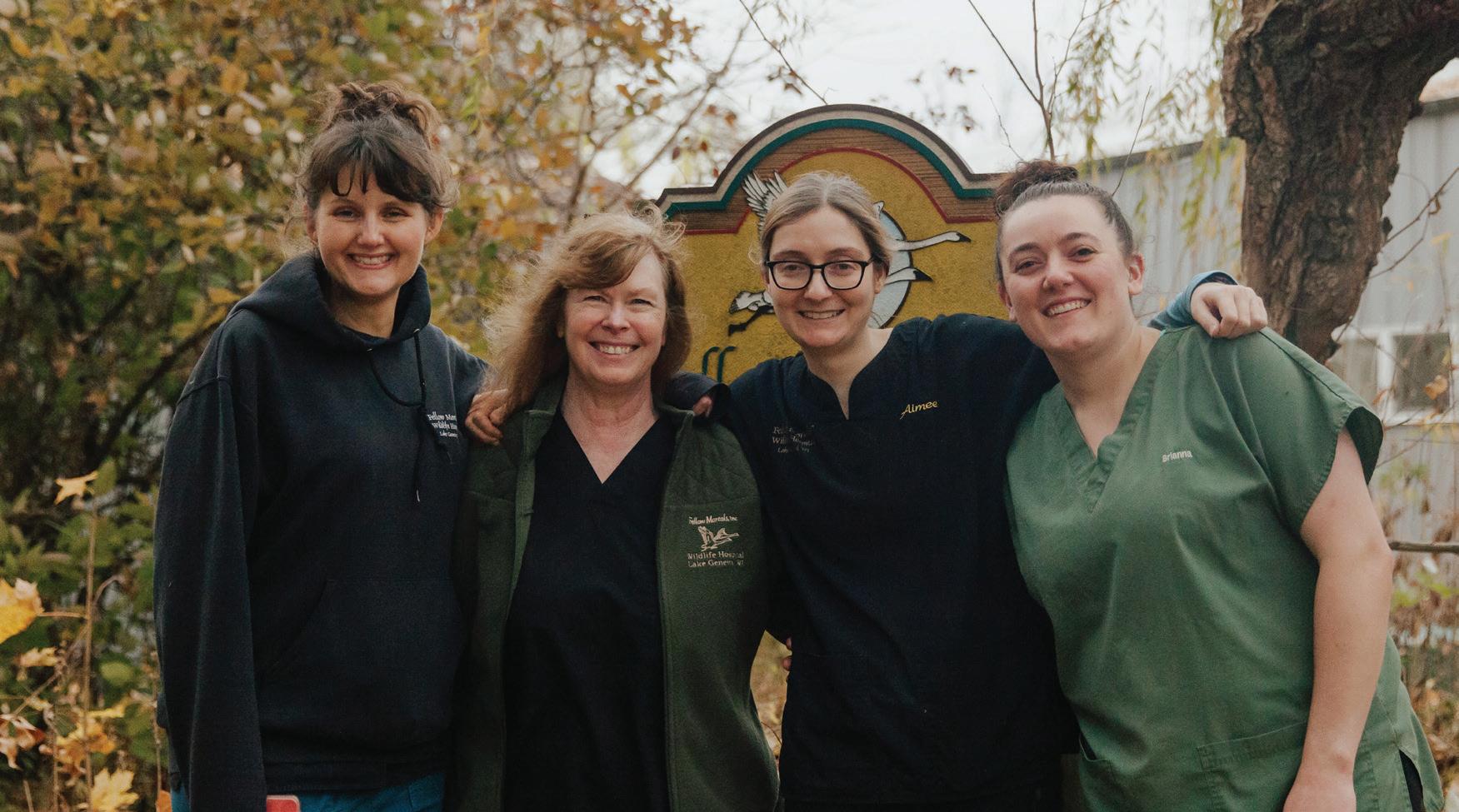
“They have the best practices in mind all the time. Yvonne and Steve working together to design build ings, caging, or whatever it is, is magic to watch,” Buhl says. “And that partnership is what really built Fel low Mortals.”
Their most positive experiences are the ones where the staff of Fel low Mortals can see the animals’ care come full circle.
“They heal very quickly and they
have a great will to live,” says Dr. Scot Hodkiewicz, a volunteer veterinari an at Fellow Mortals. “The goal of all these animals is to be able to get released.”
Last October, a goose was dropped off at the Fellow Mortals facility. She had been shot, had a broken leg and could not stand because of the tissue damage from the pellet embedded in her foot. However, she fought and fought, and she refused to give up. The goose accepted the care of the Fellow Mortals staff and eventual ly made a full recovery. The team was able to release her back into the
wild, an emotional moment for all the staff.
“She gets out and she walks up to the water, she spreads her wings re ally big, she does a little tail feather wiggle, and she’s so happy,” says Jes sica Nass, an advanced wildlife reha bilitator and biologist at Fellow Mor tals. “Those are the little gems that keep us positive and keep us feeling like we are doing the right thing.”
The Wisconsin public also appre ciates the effort and education pro vided by the nonprofit.
Nass recounts how in September 2022 a gentleman brought in an owl to the Fellow Mortals facility after he’d been watching it sit on a log for a long time. The man was nervous to help, but Nass and other Fellow Mortals’ staff talked to him on the
Wallace
co-founder
the Fellow Mortals Wildlife Hospital (second from left) and the core team of caretakers and specialists at Fellow Mortals Wildlife Hospital.
“It means a lot to us that one life is saved, because it’s a life.”Yvonne Blane, of
phone and guided him through the process of how to safely capture and bring the owl into the hospital.
The man, upon bringing in the owl, explained to the staff that he had recently lost his wife, who was an avid lover of owls. He believes the owl is her spiritual animal and his wife was trying to reach him.
“We, as humans, have the capabil ity to interject ourselves into these things and do the right thing,” Nass says. “It means a lot to us that one life is saved, because it’s a life.”
The respect for wildlife and all liv ing things propelled the idea of Fel low Mortals to flourish.
Its foundation dates back to when Yvonne and her husband managed a mobile home park. As Yvonne was mowing the lawn one day, she accidentally ran over a nest of baby rabbits. Yvonne, upset and unsure of what to do, called several animal hospitals, but none of them had a solution to help besides advising her to let nature take its course.
Unsatisfied with this answer, Yvonne and her husband took the
baby rabbits into their home and cared for them, nurturing them back to health and then releasing them back into the wild.
“For me, it is mostly a matter of respect, appreciation and a feeling of duty that these other species that share our space are being impact ed by human activities every single day,” Yvonne says. “They have no one to speak for them. They have no one to help them. They have no where to go. And so that’s really why we’re still here today.”
Fellow Mortals’ impact continues to grow. She and her husband want to convert Fellow Mortals’ 52 acres of land into a permanent home for wildlife that can no longer be re leased back into the wild.
They envision having local com munity, school and church groups come into a controlled environment and letting them interact with and learn about the different wildlife of Wisconsin, while making sure the animals still have privacy and space to retreat.

The team at Fellow Mortals Wild
life Hospital is passionate and com mitted to helping the wildlife of Wis consin, no matter the condition, size or species that comes to them.
“We really do run on faith and hope,” Yvonne says. “I sometimes say one promise, one purpose, one life at a time.”
An array of wildife can be found at Fellow Mortals Wildlife Hospital, including this baby squirrel who is a current Fellow Mortals resident.
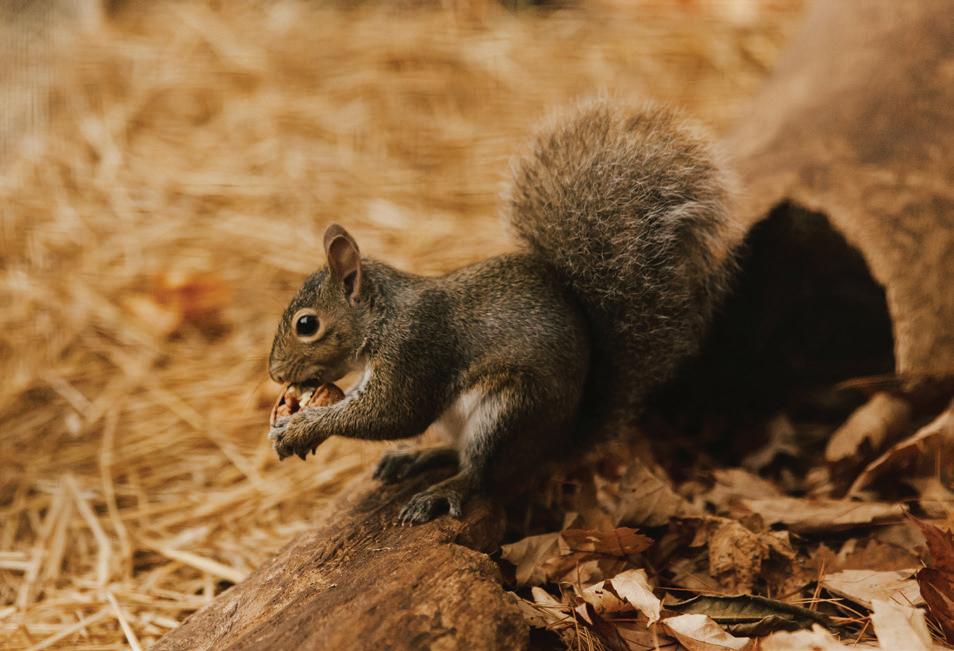 By Erin Gretzinger
By Erin Gretzinger
The first time Emerson Boettcher cried about the cost of college, she was only in sixth grade.
It was the height of the Great Re cession. Then, her mother started to lose her vision — and eventually her job. As her family’s finances tight ened under the strain of unemploy ment, the dreaded question arose in Boettcher’s mind.
“I remember so clearly: That message is just like, ‘You need to go to college to get a job,’” Boettcher says. “And at the [same] time, I was just being told no to new basketball shoes; being told no to go to the movies; being told no to like literally any normal child experiences.
“And I was like, ‘Well, I’m having an abnormal life because of money. What if it doesn’t change, and I can’t go to college like everyone around me,’” she says.
But there was one thing that Boettcher’s younger self didn’t yet understand about paying for college: “Obviously, I didn’t know what the heck a loan was when I was 11.”


Boettcher, now a 24-year-old high school teacher in Minneapolis, says she feels like she is in a “pretty de cent boat” compared to others with student loan debt — with about $25,000 still remaining.
“This is defining the rest of your life,” Boettcher says of her student loans. “Not just the next four years,
nation’s borrowers, including more than 300,000 eligible in the state.
But the road to debt relief remains unclear as borrowers are stuck in definitely waiting to see if Biden’s plan will withstand legal challenges. Amid this period of uncertainty, ex perts have pointed out a blind spot in Biden’s plan: the danger of a onetime debt “jubilee.”

Regardless of whether Biden’s plan comes to fruition, experts and bor rowers will continue to grapple with how to combat the student loan crisis at its sources to sustainably address debt for borrowers today — and the next generation.
According to UW–Madison’s Stu dent Success Through Applied Re search Lab, an estimated 715,800 Wisconsin residents have federal student loan debt, which represents about one-fourth of the state’s labor force. Wisconsin borrowers owe $23.1 billion, putting the average balance at about $32,230 per person.
Cliff Robb, a UW–Madison expert in college student financial behavior, says the number of borrowers and the amount students borrow has in creased in the last decade. Account ing for inflation, tuition at public four-year institutions has more than doubled since the early 1990s.
According to Helen Faith, a stu dent loan expert who works as UW–Madison’s director of student finan cial aid, the university’s tuition costs over 22 times more than it did five decades ago.
“When you talk to folks who may be went to college quite a while ago ... [they] will say, ‘Well, you know, when I went to school, we just worked part-time and we covered our costs,’ and I think oftentimes there’s a failure to realize that the cost of education has gone up sub stantially,” Faith says.
Federal programs like the Pell Grant — a means-based award that doesn’t need to be repaid — were designed to help make college more affordable. But Robb and Faith say those support systems have not kept up with predictable rising costs. The Pell Grant, for example, used to cover nearly 80% of tuition at pub lic four-year universities. Today, it is worth one-third of its original value.
The result: Students take on more debt than previous generations.
Boettcher’s concerns about pay ing for college never faded after her epiphany in sixth grade. Despite be ing admitted to Georgetown Univer sity in Washington, D.C., Boettcher
instead left her northeastern Wis consin hometown of Two Rivers to attend UW–Madison and save some money with in-state tuition.
During college, she worked 20 to 40 hours a week and spent her spare time on scholarship applications. After graduation, Boettcher joined an AmeriCorps program, a non profit that provides service-year op portunities, in part because of grant assistance that offers some student loan forgiveness.
Following a similar path to Boettcher, fellow UW–Madison graduate Justine Mischka worked for AmeriCorps to help pay off part of her student loan debt. Still, she is unsure of when she will get out of debt.

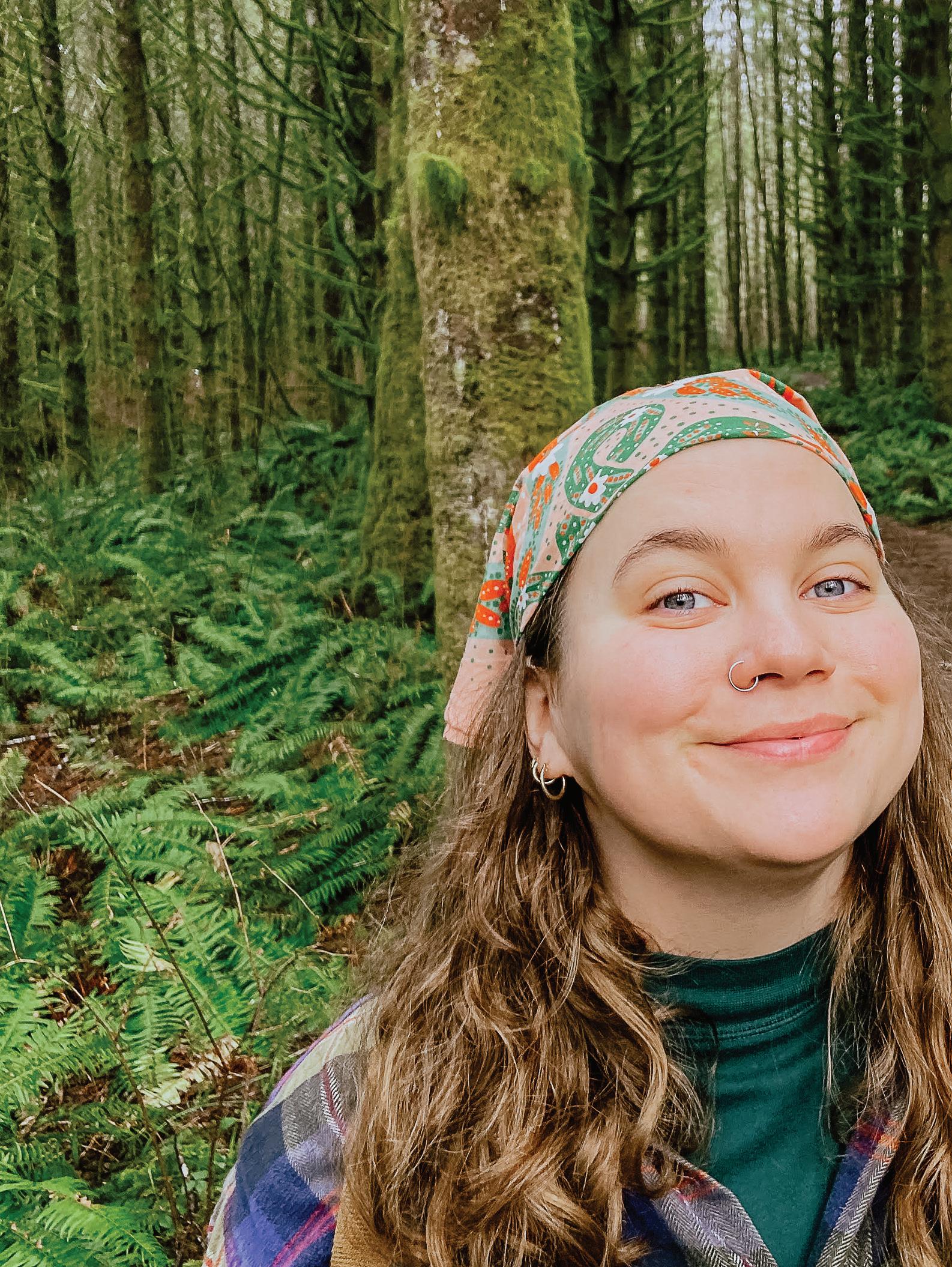
“I work at a nonprofit, and we’re all 20-somethings with college debt,” Mischka says. “None of us have any sort of short-sighted goals of paying off our student loans.”
Significant at the Margins
Robb and Faith note that the av erage borrower can successfully pay off their student loan debt since college degrees often lead to high er-paying jobs. However, one-third of all borrowers don’t actually finish college. Other issues, such as mas sive interest accumulation or cer tain aggressive loan packages, can further hinder borrowers.
“It’s not like every person is in a bad situation because of student loan debt,” Robb says. “It’s more at the margins, but it’s still significant at the margins.”
Complicating the process, Robb says young people don’t always un derstand the magnitude of debt.
This was certainly the case for Mischka, a Whitewater native, lo cated in southeastern Wisconsin. In high school, as Miscka worked for pocket change at Rocky Rococo and her single mother provided the necessities, even college application fees felt daunting to her.
So when she got her financial aid back and saw she qualified for loans and grants, a 17-year-old Mischka jumped at the chance.
Despite receiving the Pell Grant, Mischka, now 25, still has about
UW–Madison graduate Emerson Boettcher (right), who has over $20,000 in student loan debt, worked between 20 to 40 hours a week during college to help assauge her concerns about debt after college.$35,000 left in debt. She wouldn’t have done anything differently, but she wished she knew more when she said “yes” to loans.
“It’s just like this one button on a website that you click, and then they put money in your bank account,” she says.
For Faith, a debt forgiveness pol icy must balance precise targeting and easy implementation. Biden’s plan, she thinks, accomplished both of those feats.
Considering people who struggle the most with debt borrow less than $10,000, Faith says that number is addressed by offering relief of up to $10,000 for non-Pell Grant recipi ents. The boosted forgiveness of up to $20,000 for Pell Grant recipients also provides means-based relief.
But debt relief today doesn’t ac count for the big-picture problems in the student loan system — or future borrowers’ inheritance of it.
“A one-time forgiveness — it is problematic,” Faith says. “It’s hard for me to imagine a situation in which that could happen again.”
Robb says a one-time relief could also create perverse incentives — leaving people waiting for more debt forgiveness or causing them to take out more loans in hopes of addition al debt cancellation.
For borrowers like Mischka and Boettcher — who both received Pell Grants — Biden’s plan would be a game changer. Mischka would have her debt at least cut in half.
Under Biden’s plan, Boettcher would be debt-free. But if it gets axed, she would have to “rethink teaching entirely” — whether she could afford to do what she loves. Despite benefit ing from the forgiveness, Boettcher recognizes the long-term solution is not simple. All she has to do is think about her students to realize that.
“I look at my students now as they are prepping for college, and while I have this really amazing blessing, it’s like kids are still getting themselves into debt that they don’t know how to pay off.
“When’s the next solution? Is the next solution just another big for
giveness?” Boettcher says. “When are we going to really get to the eco nomic part of what’s causing this trouble in our system?”
The answer to Boettcher’s ques tion is, unsurpisingly, complicated.
Faith admits it is not a perfect analogy, but she asks people to think about the student debt crisis as a health care situation.
“We can stop the bleeding, but if we still have this wound, we need to figure out better ways to address emergency care and preventative care,” she says. “If we can do more on the front end to be more preven tative, then we can reduce the need for emergency care.”
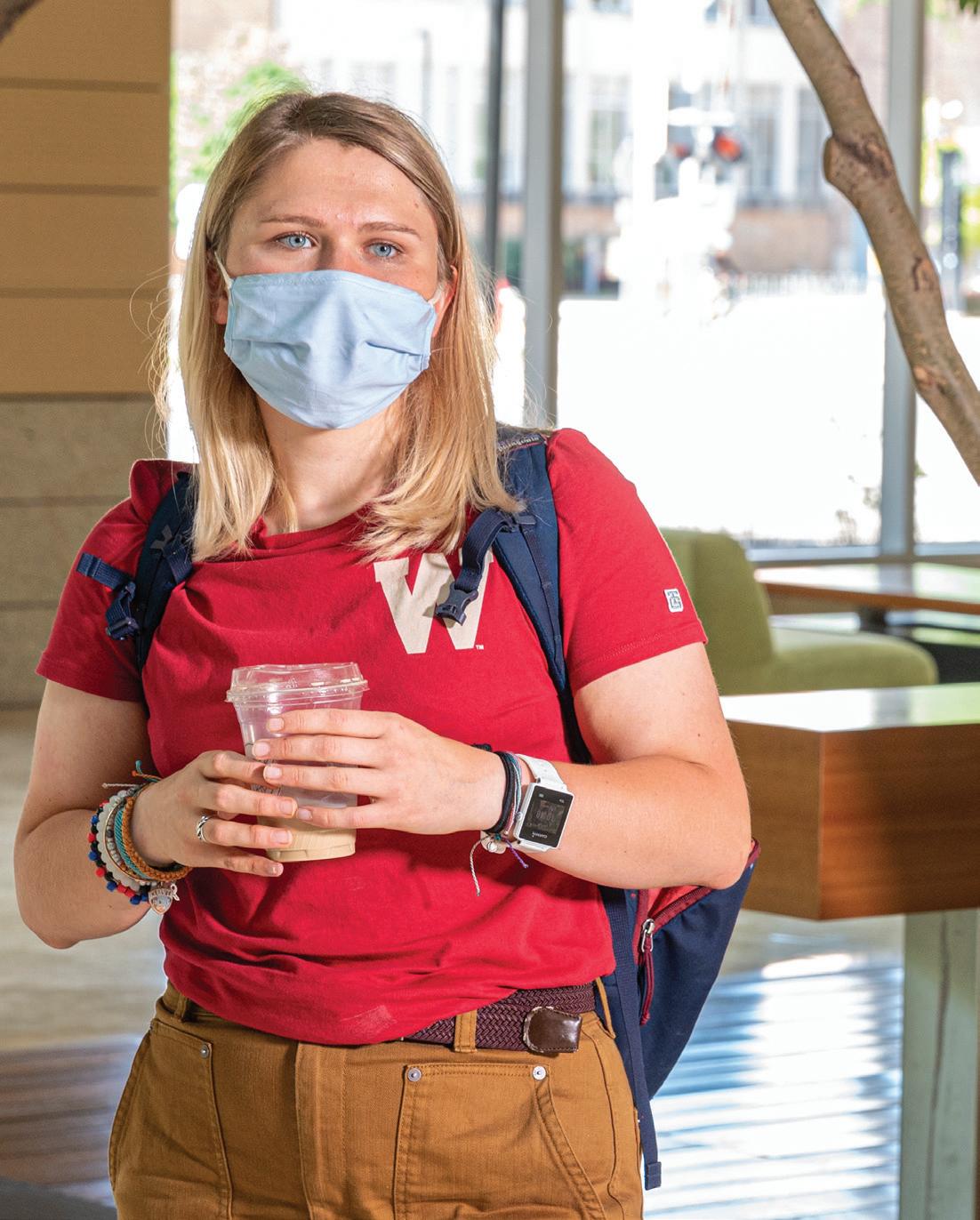
For Faith, this means making stu dent aid more straightforward and reducing the amount that people borrow. Medicine number one, Faith says: increasing the value of the Pell Grant to help students better cover college costs.
Robb says making community college free would pave the way for people to start at cheaper two-year schools and transition into high er-cost institutions later — decreas ing students’ overall debt.
Additional means-based grant programs could also help minimize debt. For example, under the re cently implemented Bucky’s Tui tion Promise at UW–Madison, both Boettcher and Mischka would have graduated debt-free.

As the nation wrestles with the best ways to address student debt, borrowers hold their breath, waiting for Biden’s promise of relief.
But until her balance is down to zero, debt will remain on Boettcher’s mind and in her actions — like pick ing out a birthday gift for her 2-yearold nephew.
“I’m setting up a college invest ment fund for him,” she says with a chuckle. “I’m not giving him toys.”
Wisconsin native Justine Mischka (left) moved to Washington after her graduation from UW–Madison for an AmeriCorps job. She has about $35,000 left in student loan debt and joined AmeriCorps to help offset her debt through its grant program.Ulysses Williams takes a puff of his cigarette before he begins to speak.
“I was born and raised in the in ner city of Milwaukee,” he says. “I left and came here, was middle class for 27 years, and then I got divorced and everything went downhill.”
We’re sitting at a picnic table in front of the house where he’s been living for the last seven years. But before this place, Williams was liv ing on the streets of Madison.
“I was homeless. That was 2011,” he says. “I stayed homeless for 14 months, got a place and then, like usual, I lost my job. Back out on the street again, and that was 15 months out on the streets.”
Williams knows firsthand the hardships of being unhoused. It was those experiences that led him toward working on a solution that he hopes will make life better for those who are experiencing home lessness. It’s an idea that would give people who already have very little an extra bump, a step beyond mere survival to a place where they are protected and even given a chance to get ahead.
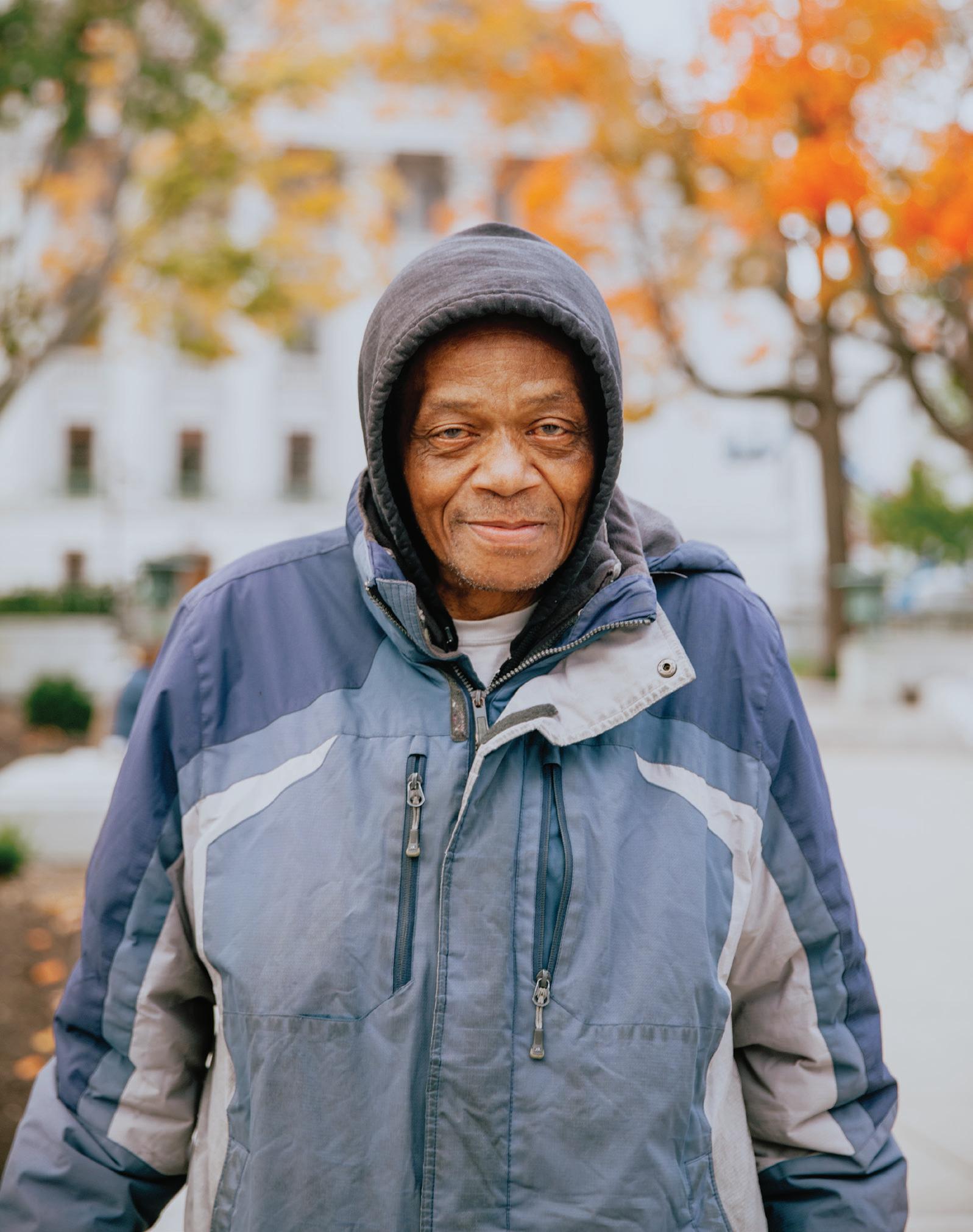
In May, Williams introduced a Homeless Bill of Rights to the City-County Homeless Issues Com mittee, a local government body made up of Dane County super visors, Madison alders and people tied to the area’s homeless commu nity. The document lists nine rights he hopes to protect, including the right to use and move freely in pub lic spaces, the right to vote, a rea sonable expectation of privacy of personal property, and the right to pray, meditate or practice religion in public spaces, among others.
The idea of a Homeless Bill of Rights is not unique to Madison or Williams; it’s something that activ ists across the country have cham pioned for years. In drafting his own Homeless Bill of Rights, Wil liams drew inspiration from legisla tion that has been passed in other cities and states. The proposal was recommended by the City-County Homeless Issues Committee and
Ulysses Williams, member of the Madison Wisconsin Homeless Union, is one of the leaders pushing for a Madison Homeless Bill of Rights.Williams says it’s under consider ation by the Dane County Board of Supervisors.
“The original goal for a lot of them was to protect people from being criminally punished for try ing to survive in public spaces,” says Eric Tars, legal director at the Na tional Homelessness Law Center.
In 2012, Rhode Island became the first state to pass a Homeless Bill of Rights, followed by Illinois and Connecticut. Other states like California and Oregon have passed more specific homeless rights legis lation.
In 2021, U.S. Rep. Cori Bush, a Democrat from Missouri, intro duced the Unhoused Bill of Rights, the first ever federal resolution for homeless rights. If passed, the bill would signify a federal commitment to solving the issue of homelessness.
Tars says these policies are a step in the right direction, but many had most of the stronger protections stripped out of them during the leg islative process.
Homeless Bills of Rights are de signed to protect people experienc ing homeless from discrimination based on housing status, something Williams says is common.
“America unfortunately has a history of discrimination,” he says. “Firstly Indians, then African Americans, then Jewish and Irish. They do have that history, and right now, it’s homelessness.”
He says he’s witnessed and expe rienced discrimination due to hous ing status many times, from see ing people being denied service at businesses to being removed from certain street corners. On one oc casion, Williams says he was hand ing out water on State Street when he saw a police officer clear out an entire group after seeing one person drinking alcohol.
“The police officer came up and of course he poured it out and start ed talking to them about, ‘Hey you guys come down here, you start fights down here, how about you guys start moving it out of here?’” Williams says.
He says he specifically included No. 8 on the list, the right to engage in lawful self-employment, because of discrimination he says he and others faced while trying to make some extra cash by collecting and recycling aluminum cans.
“The city made an ordinance that you cannot take it out of any trash containers,” Williams says. “Then all of a sudden, the recycling places, you cannot walk up and bring cans. You gotta be in a car, which, boom, it’s no longer possible to do.”
The other and perhaps more dire goal of a Homeless Bills of Rights is to eliminate the criminalization of homelessness by getting rid of laws against illegal camping and pan handling, among other things. In Dane County, an average of 13% of the annual bookings into the Dane County Jail are people who are pre sumed to be homeless.
“We all sleep, we all eat, we all go to the bathroom, we all enjoy being able to shelter ourselves when it’s too hot or too cold outside,” Tars says. “But those activities that all of us take for granted can become criminal acts if they’re done outside in some places.”
Offenses that begin with a fine can land someone who can’t afford to pay them in jail, which then be comes a barrier to finding housing and a job. On top of that, jail time
can trigger mental health issues.
“Even long after you might have been arrested, these fines and fees can follow you and make it impos sible for you to get housing or stay housed for potentially years after,” Tars says.
Pearl Foster, a volunteer, advo cate and member of the Madison Wisconsin Homeless Union, also recognizes the harm in criminaliza tion and says even small steps are impactful.
“We need as many things to pro tect our homeless population as we can,” Foster says. “So if that’s a Homeless Bill of Rights plus home lessness as a protected class and any other laws such as overturning some of the ones that already crimi nalize homelessness. We just need it all out there.”
Advocates agree that these poli cies are not working to solve the is sue and hope that a Homeless Bill of Rights will both provide protections and push policymakers to rethink how they approach homelessness.
“The hope is that by creating this new floor of rights, that the solu tions that communities will turn to will be actual constructive solutions that work for everybody, rather than just allowing public officials to push the problem out of the public view for their own convenience,” Tars says.
Ulysses Williams and Garrett Olson set up their Homeless Union stand at the farmers’ market in Madison to hand out free coffee and hot chocolate as a thank you to those who sign their petition for the Madison Homeless Bill of Rights.
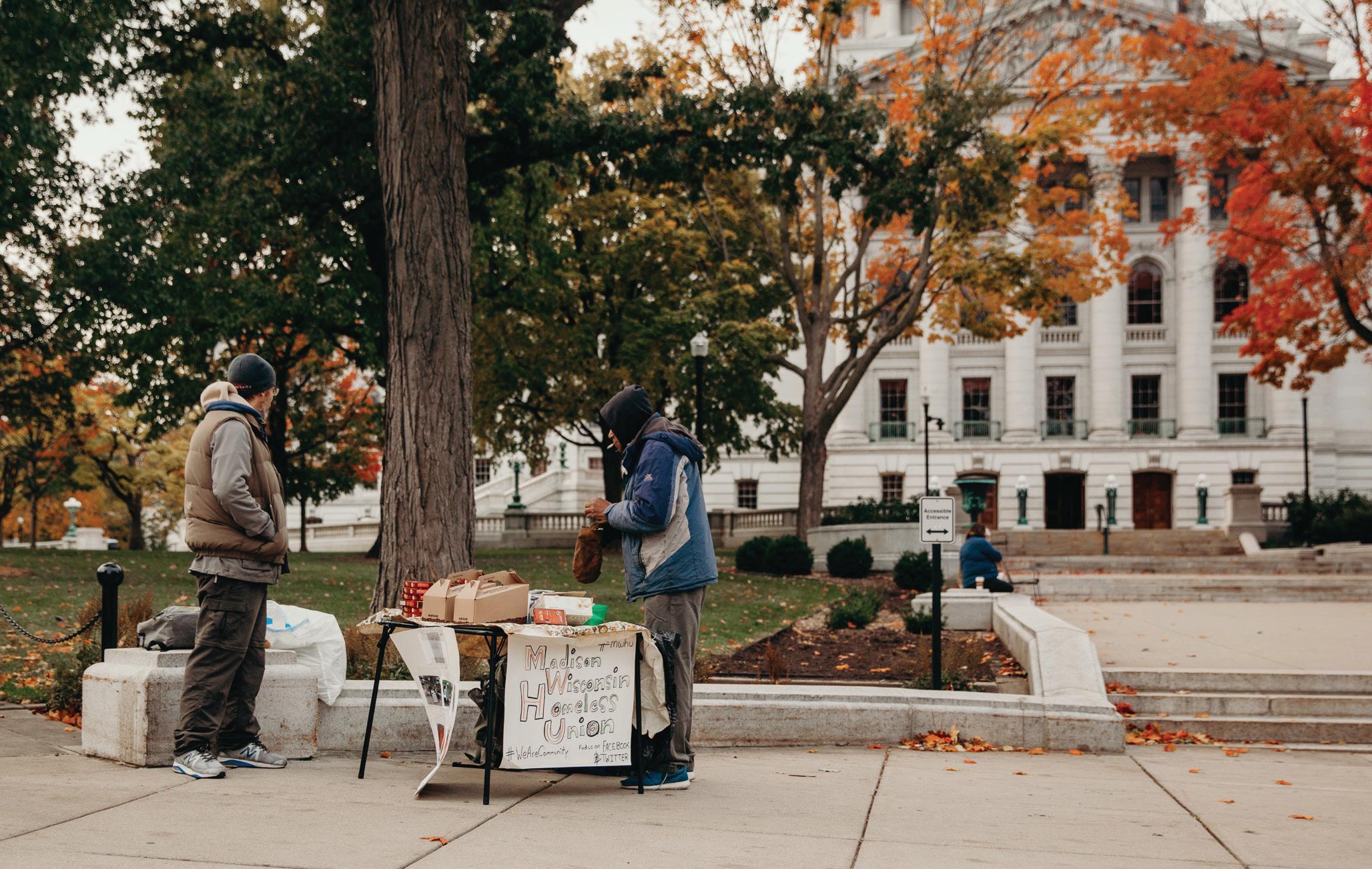
Originally “Mekonsing” or “River Running Through a Red Place” the state is named for the Wisconsin River that cuts through the center of our state.
Our wetlands are abundant and our rivers run deep. Wisconsin holds more than 15,000 lakes while its rivers and streams cover more than 84,000 miles of terrain. To the east, Lake Michigan holds over one quadrillion gallons of water. Lake Superior’s three quadrillion gallons — the deepest and largest of the Great Lakes — sits to the north, while the Mississippi River follows the southwestern border.
As climate change, contamination and population continue to endanger the global fresh water supply, Wis consin’s freshwater becomes increas
ingly valuable. Places with fresh water will flourish as climate change shifts weather patterns and droughts become more common.
The state’s forward-thinking, cen turies-long connection to water has led Wisconsin to emerge as an unexpected leader in the fight for survival in the national water crisis. Leaders across Wisconsin are mov ing forward to keep the state at the forefront of water technology for decades to come.
Much of that work is happen ing in Milwaukee, located on Lake Michigan at the confluence of three rivers: the Milwaukee, Menomonee and Kinnickinnic. “Minwaking,” the Potawatomi word for “gathering place by the water,” brought Native
Americans to the area due to its rich land and location. The city’s proxim ity to water drew in water-intensive industries like brewing, tanneries, meatpacking and transportation — all of which drove water innovation in the 1800s.
Now, the city is home to more than 150 water-related companies like A.O. Smith, Badger Meter and Pentair; The Water Council; and the country’s only School of Freshwater Sciences at UW–Milwaukee.
The Water Council, a nonprofit or ganization in downtown Milwaukee, is dedicated to freshwater innovation and water stewardship.
In 2009, the same year the organi
Milwaukee’s Lakefront Walk follows along the shoreline of Lake Michigan. Approximately 1.6 million Wisconsin residents get their water from the Great Lakes Basin.
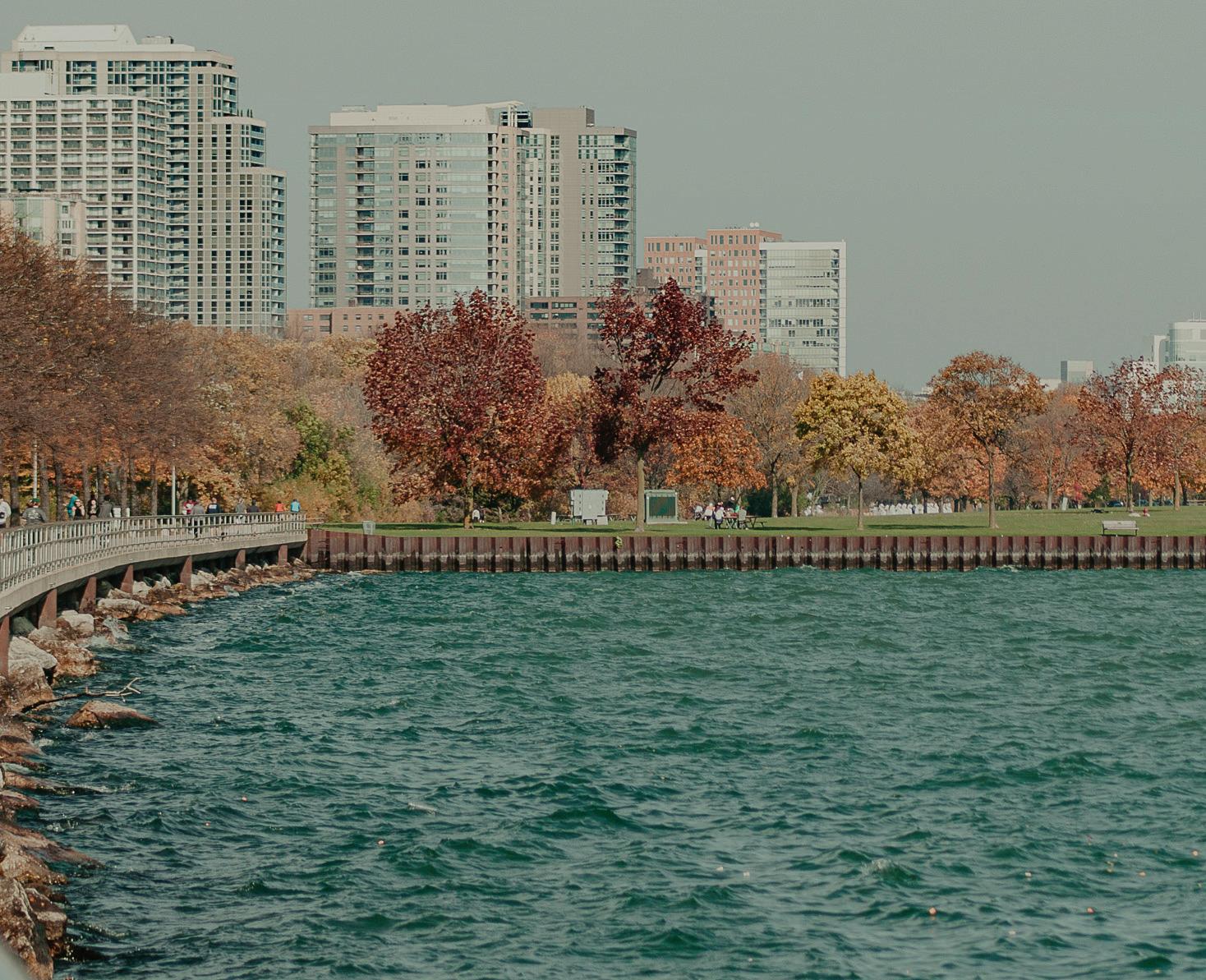
zation incorporated into a nonprofit, the United Nations designated Mil waukee a U.N. Global Compact City — one of 13 cities in the world at the time selected for its concentration in a topic related to global health and development. The Water Council es tablishes a network of water industry go-getters by connecting businesses, utilities, government and innovators to bring water users into the future.
“It goes back 150 to 160 years ago,” says Dean Amhaus, president and CEO of The Water Council. “The breweries came in because of the access to the water, to the rivers, to the grains and the farms, and those breweries needed companies to help them process water ... It really goes back to producing beer.”
The UW–Milwaukee School of Freshwater Sciences found its home here for a similar reason: Milwau kee’s long-standing connection to water. Originally founded in 1966 as the Center for Great Lakes Studies, it is the only school in the entire country dedicated to the study of fresh water.
“Milwaukee has really been a force in research for a while and in educa tion and outreach on the Great Lakes,” says Rebecca Klaper, interim dean of the School of Freshwater Sciences.
The School of Freshwater Sciences has been a source of groundbreaking research in fresh water. Its program in Great Lakes Aquaculture research specializes in urban aquaculture. As ag riculture in the west becomes increas ingly endangered, the development of urban aquaponics has the potential to play a significant role in a new and expanding food revolution.
The school’s Great Lakes Genom ics Center is internationally known for its expertise in using genomics to address pollution concerns in fresh water. Their research consists of mea suring ecosystem health, identifying invasive species, sequencing corona virus strains in wastewater and more.
While Milwaukee has built a rep utation in the water industry, Wis consin itself can stand alone as a giant in fresh water. According to Todd Ambs, former deputy secre tary at the Wisconsin Department of Natural Resources, Wisconsin has 1,110 miles of Great Lakes shoreline and 5.3 million acres of wetlands. We have enough groundwater that if it were laid evenly over the state, it would be 100 feet deep.
For Ambs, what sets Wisconsin apart in water is our ability to man age it effectively.
“We’ve got some leaders in terms of how water management is done,” Ambs says, pointing to the Madison Metropolitan Sewer Districts, Green Bay’s wastewater treatment system and Milwaukee Metropolitan Sewer District’s work with both wastewater and habitat preservation and resto ration. “People that do this work for
a living will look to Milwaukee for some of the leading technology and efforts that are underway nationally.”
Ambs led negotiations for the state as the eight Great Lakes states creat ed the Great Lakes Compact, which bars any large-scale water diversions outside the Great Lakes basin. With Congress’s approval, former Presi dent George W. Bush signed it into law in 2008.
Shaili Pfeiffer, staff specialist at the DNR Bureau of Drinking Water and Groundwater Water Use Section, explains the heavy-handed policy as a means of water management.
“You can’t manage water if you don’t know what the water is that you have, and you don’t know who is using it,” Pfeiffer says. “So you need to know who’s using it, what they’re using it for and then how much they’re using.”
In Wisconsin, however, water pro tection policy has been common place throughout its history.
The state enacted the nation’s first shoreland protection law in 1965 and tackled the issue of pollution from lawns and farm fields in 1977, filling a gap in the 1972 Clean Water Act. In 1983, by achieving secondary treatment for all wastewater facilities in the state, Wisconsin was the first to meet the Clean Water Act’s interim goal for wastewater standards.

To keep waterways clean and ac cessible, water stewardship and water policy are critical. Dedication to free and public access to waterways is woven into the state constitution, declaring that all navigable waters are “common highways and forever free” to be held in public trust.
Wisconsin’s reputation for wa ter innovation and stewardship has primed the state as a leader in the fu ture of water. At The Water Council, the two go hand-in-hand.
Matt Howard, The Water Council’s vice president for water stewardship, stewardship means determining what needs attention, implementing the technology and then using the technology purposefully.
“We want to start working with businesses on the internal operation
... ‘So what are the best practices for operating a facility?” Howard says. “Then go out and find the right technology and right innovations to help you address those challenges or opportunities that we’re facing.”
One of the challenges that the country faces is the water shortage in the West. As a result of a 20-year drought the Colorado River is drying up, putting seven states, 29 federally recognized tribes and northern Mex ico all at risk of losing drinking water and electricity.
Howard points to the Colorado Riv er Compact, an agreement settled between the seven states and various tribes regarding water allocation, as the beginning of the end. While there have been technology implementations like smart meters and dams, the American
West has grown overly reliant upon innovation but ignored stewardship.
“If you don’t marry any of that with practice, you get yourself in a situation that they’re in right now,” Howard says.

There are several movements stirring in the West in response to the drought and water scarcity, but Wisconsin will likely have a hand in leading the country as a whole into a freshwater future. With Wisconsin’s leadership in pioneering water policies for centuries, The Water Council has had its eye on the West for some time.
“It’s around the quantity, but it’s also the quality of water,” Amhaus says. “So those companies [out West] have been doing that, and they will continue to do that as well. And we see ourselves as a solution provider.”
“People that do this work for a living will look to Milwaukee for some of the leading technology and efforts that are underway nationally.”
Debra Conway, a school psychologist at Vel Phillips Memorial High School, isn’t planning on leaving. But several of her colleagues have considered it.
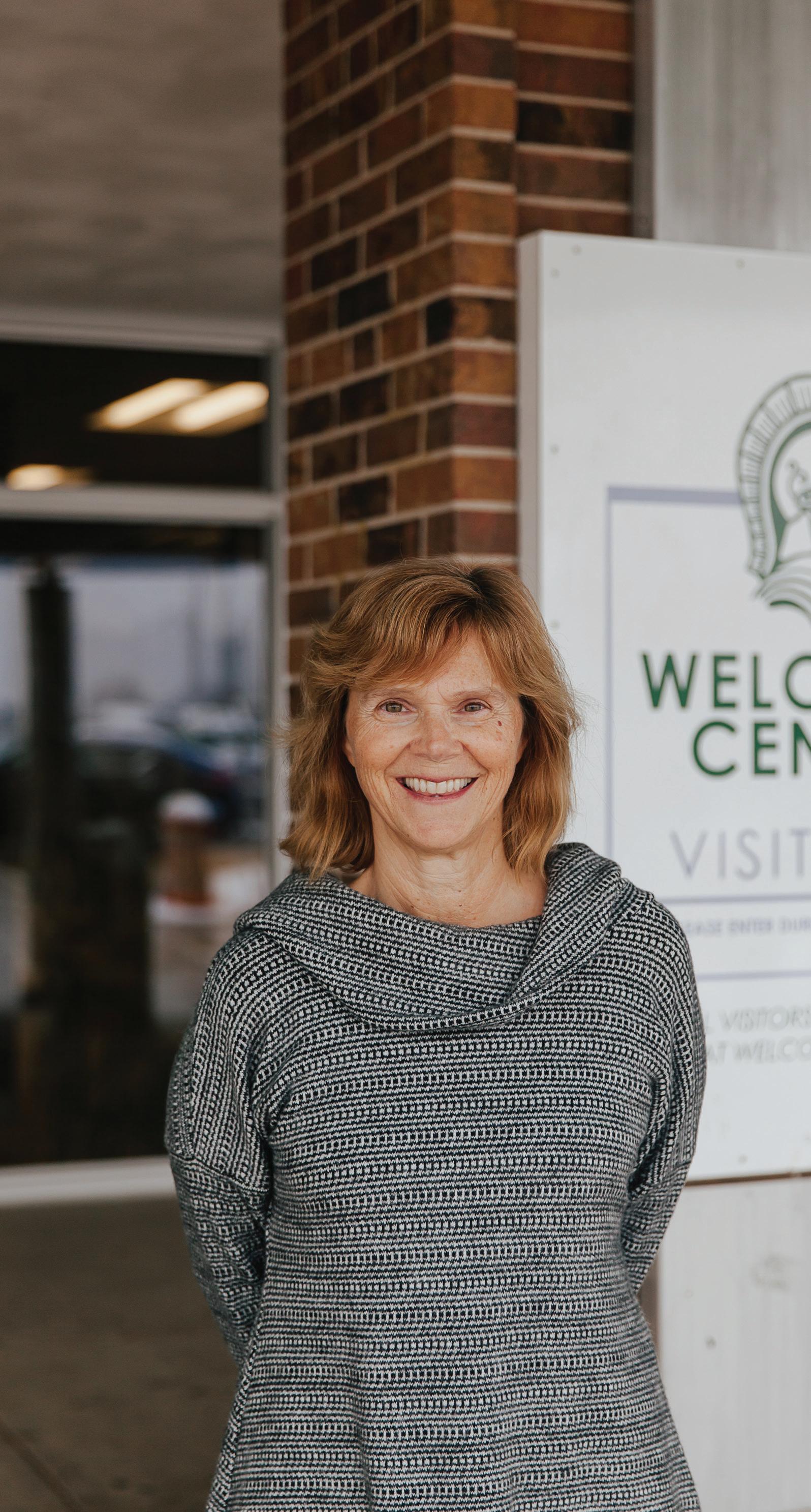
The day starts for teacher Sally Watson before the sun rises. In the dark winters of Wis consin, it can be hard to rise before the sun, but this is what Watson’s been doing for 24 years. She’s used to it. She arrives at the high school over an hour before her students arrive to get organized for her day.
Watson teaches five classes a day. The remaining hours of her time at school are spent adjusting lesson plans, attending meetings and call ing parents whose kids are strug gling. By the end of the school day, she’s tired from wrangling ninth graders, who she often thinks act more like elementary schoolers than high schoolers.
She leaves school around 4 p.m. and spends the next two hours work ing from home: planning lessons, grading, reading and responding to emails. She spends from 6 p.m. to 8 p.m. with her young children, and once they’re in bed, she spends about two more hours working.
The next morning, the cycle re peats. She’s thinking about quitting.
Watson, who asked for anonym ity because she’s not allowed to speak publicly about her role, is not alone. Teachers across Wisconsin are in difficult positions and are faced with hard decisions — they’re trying to endure and persist in the profession, but each day, the chal lenges seem harder to withstand. Many have already left their careers in education behind, contributing to the growing teacher shortage.
Teachers have always been valued community members, appreciated for their role of educating the next generation. Today, their roles have expanded, but the respect and sup port that was once provided by their communities has all but vanished.
Thomas Burkhalter, superinten dent of Viroqua Area Schools, has seen this trend over his time in ed ucation. At one point, teachers were revered in their communities and thanked often for their work, Bur khalter says. Now, he says things have completely shifted.
Many parents and other com munity members feel emboldened to criticize teachers and teach ing methods. Public school board meetings often give a platform to community members who are an gry with teachers.
“Some of the other things that are said at those meetings are just hurt ful,” says Amy Menzel, who was an English teacher at Waukesha West High School. Menzel, along with many colleagues, left Waukesha public schools after the 2021-2022 school year. “They say that they de mand respect in those [meetings], but I don’t see enforcement of that,” Menzel says.
Many politicians haven’t been supportive either. For several weeks in February 2011, thousands of teachers protested the budget repair bill at the state Capitol building in Madison. Act 10 became law not long after the protests. When Act 10 was passed, teachers and other public sector employees lost much of their ability to collectively bar gain. Teachers are still affected by it today.
Additionally, gerrymandering in the state has made change nearly impossible when it comes to elect ing politicians who prioritize school funding, according to Watson.
“ We have not properly funded public education,” Watson says. “We’ve kept things static even though inflation has gone up.”
With lack of funding for edu cation comes lack of resources in schools. Teachers are often left to pick up the slack.
At Vel Phillips Memorial High School in Madison, school psychol ogist Debra Conway frequently sees student needs that require more re sources than the school has to offer. To her, that’s the biggest challenge of working in a comprehensive ur ban high school.
“It can be a mental health need, it can be an academic need, it can be a social-emotional need, it could be a feeding need, it could be a housing need, it could be a clothing need,”
Conway says. The lack of resources doesn’t stop teachers from trying, though. It can be exhausting, but many teachers really care — enough to take work home and continue trying to meet student needs. Wat son does this almost daily.
“That’s what I’ve been doing for two years,” Watson says, “and that’s becoming unsustainable.”
Conway agrees. “It’s hard because you want to be the be-all-end-all for
Menzel says. “It put a lot of stu dents’ safety in jeopardy, perceived or otherwise.”
Even in more progressive dis tricts like the one in which Watson works, teachers are seeing a trend of identity being politicized.
“Books and things being pulled are often books that deal with issues of equity, whether it’s LGBTQ+ identity or racial identity or reli gious questioning,” Watson says.
Kids are already having these con versations about race and gender, and Menzel says it’s her job to help them do it in more effective ways so that they feel seen and heard.
“I don’t think we get better at talking about tough subjects by not talking about tough subjects,” Menzel says.
everybody, but you can’t,” she says.
Teachers, like students, are expe riencing their own mental health crises. Working more than 40 hours a week in an environment where teenagers are screaming at you and throwing things — yes, really, ask Watson — is draining, and no one allows teachers the time to recharge.
In fact, teachers say they have less time than ever these days. The time they don’t spend with students is also monopolized by administrative tasks, such as filling out forms or creating online lessons.
“My struggle with it is that it’s al ways a little more, a little more, a lit tle more,” Menzel says. “Now we’re at the point that it’s overwhelming.”
While teachers are being given more responsibilities in their class rooms, at the same time they are being stripped of their autonomy. Not only are books being pulled from the curriculum and libraries, but some districts have gone as far as to require teachers to take down any signage in their classrooms that could be deemed “political.”
At Menzel’s former school, staff were told to remove pride flags from their walls. According to Menzel, many teachers took issue with that request, including herself.
“I think it emboldened students to say things that were hateful,”
What does a community do when teachers are leaving? The consensus is simple: Trust teachers again.
It can be hard to trust even a qualified individual when everyone feels like they’re an expert.
“I think we’re one of the most unique fields because everybody went to school, so everybody thinks they know how it should be done,” Burkhalter says.
What the criticism of teachers is doing, Burkhalter says, is down playing the amount of training, ef fort and time that professionals in schools have gone through.
“Districts don’t trust teachers,” Watson says. “School boards, fami lies, voters don’t trust teachers.”
Menzel speaks similarly about trust. “There’s a lack of trust in what [teachers] have dedicated their lives for,” Menzel says.
Even Conway, a school psycholo gist, says “It’s hard, and it’s real. It’s hard not to take it personally.”
“We’re expected to provide for those needs and it can be overwhelming and hard to do.”
Royle Printing is proud to support the University of WisconsinMadison School of Journalism and Mass Communication and all contributing students who produced Curb Magazine.
If you’re looking for a challenging and rewarding opportunity to grow, look no further. As part of our growth, we’re looking for recent graduates to join our team! The neat thing about us is we’re an independent, family-owned business with zero debt. Visit www.royle.com for more information!
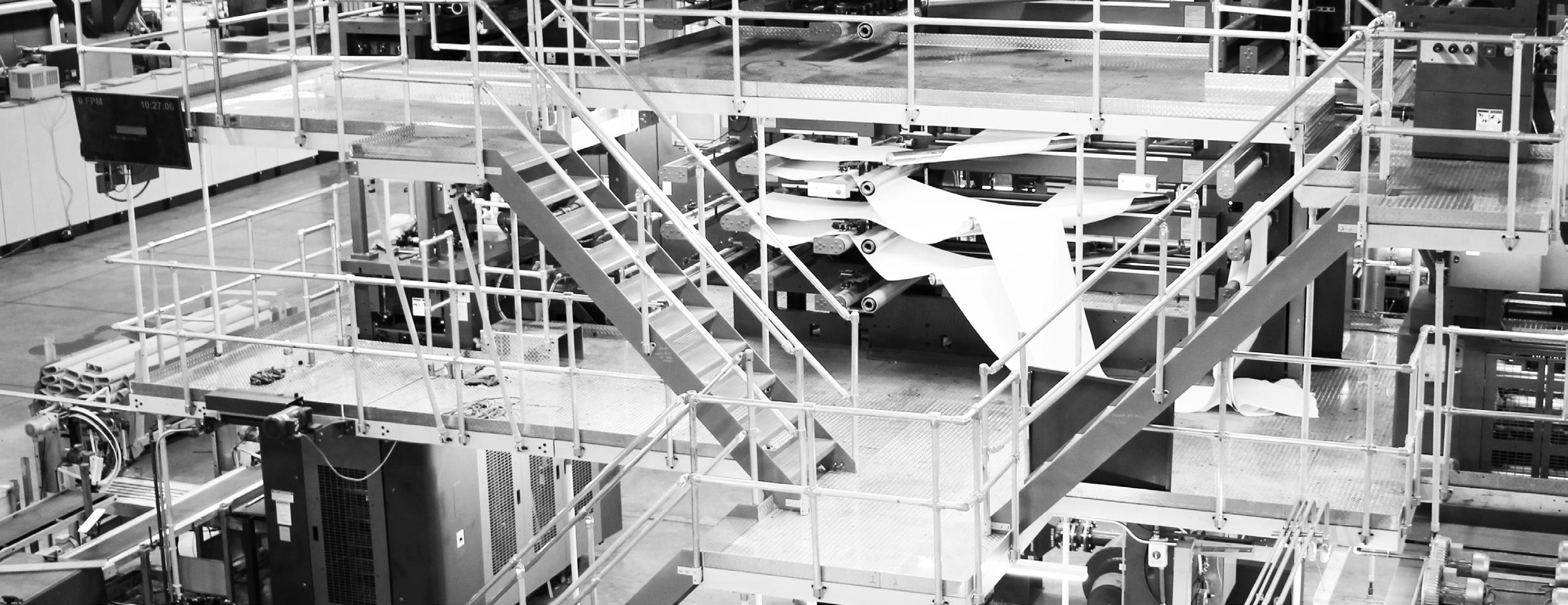
There’s something about art that makes you feel warm and enlightened — even when it’s 8 degrees below zero.
Art can be viewed from anywhere by anyone. It propels the human ex perience by telling a story in many forms, leaving us with perspective, appreciating what we knew before and what we just learned.
“Art is a wonderful educational tool that aids in the understanding of ourselves and the world around us. Art provides the viewer with new perspectives on life and new ways of thinking and seeing. It serves as a jumping-off point for inspiration and new ideas. Art enriches and en hances the soul,” says Avery Pelek oudas, Warehouse Art Museum pro gramming coordinator.
Exhibitions around Wisconsin offer various pieces that can be en joyed this winter.
Olbrich Botanical Gardens, locat ed on the north shore of Madison’s Lake Monona, includes 16 acres of outdoor display gardens and a 10,000-square-foot conservatory. It also features year-round art exhibits.
Olbrich’s annual Holiday Express, Flower & Model Train Show will be open from Dec. 3 to Dec. 31. The ex hibit is unique as it involves special designs with plants and a new theme every year — this year’s embodying carnival. In addition, the exhibit cre ates tradition, welcoming back fami lies and visitors.
“It’s a great place for anybody to just get away and relax, whether it’s from school, work or other life stresses,” says Missy Jeanne, Olbrich Gardens’ special projects manager. “We see familiar faces all the time of people enjoying [our] classes and workshops for all ages. Some are more art based, some are based on plant biology, it’s just kind of end less, all the different ways that you can learn and engage.”
A barber chair with leather and gold plating on display at the Madison Museum of Contemporary Art is part of Faisal Abdu’Allah’s exhibition called “Dark Matter.”

The Madison Museum of Contem porary Art, known as MMoCA and located in downtown Madison, dis plays the work of a variety of artists and professors from UW-Madison. MMoCA has an exhibition of pieces from UW–Madison professor Faisal Abdu’Allah known as “Dark Matter.” It portrays cultural representation and shows Abdu’Allah’s most cele brated works.
Along with “Dark Matter,” which will be on exhibit until April 2, 2023, art by Wendy Red Star, an Apsáa looke (Crow) contemporary artist, made its way to the museum on Nov. 12. Red Star’s work offers accounts of American history that rectify the frequently flawed narratives about Native American people.
“It’s really about starting conver sations and having more meaning ful conversations with children that may not know how to approach the conversation of the histories that are missing in our textbooks, but this is a supplement that will give kids that moment with their families,” Brun gardt says.
In the winter, Lake Geneva hosts the annual Winterfest, which runs from Feb.1 to Feb. 5.
“[There is] a lot of communi ty pride in hosting this event,” says Deanna Goodwin, vice president of marketing, communications and development for VISIT Lake Gene va. “It’s so incredible. The crowds of people that come here and how hap py everybody is when they’re here. It’s a lot of work leading up to it, but it’s fun work.”
For nearly three decades, Lake Geneva’s Winterfest has hosted the annual U.S. National Snow Sculpt ing Championship. Fifteen teams of three people from around the U.S. participate in three days of craft, where they create 10-foot sculptures along the lakeshore. After sculpting, the final result is an art gallery of lakefront sculptures for the commu nity to enjoy.
“Winterfest is so larger-than-life when it happens. And to see so many smiling faces and kids in awe of how big these sculptures are because you get up really close to them,” Goodwin says. “You’re just within a couple feet of them actually working and doing the sculptures. And then when you see it all said and done in the detail, in the artwork, it’s just phenomenal.”
The Warehouse Art Museum, called WAM, opened its doors in 2018. Located in a historic ware house in the Menomonee Valley, the mostly woman-run museum show cases three to five exhibits every year. The artwork on display is all from the private collection of the co-own
ers and co-directors of WAM, Jan Serr and John Shannon.
“They have been collecting for about 40 years or so, and that’s essen tially why they created WAM, was to display their collection because they had so much work sitting around,” says the museum’s programming co ordinator Avery Pelekoudas.

From Jan. 13 to March 31, WAM will showcase art by Ruth Groten rath, a Milwaukee local.
“It’s gonna be super bright, col orful, fun ... we like to do that for the harsh gray Wisconsin winters,” Pelekoudas says. “So having a fun, colorful show during that time is always nice. Yeah, that’s one of the main draws for the exhibition during the winter.”
The difference between au thentic and imitation vin tage clothes depends on one thing: the stitching.
A single stitch at the hem and shoulder was the standard up until the mid to late ’90s, while a double stitch is the standard of today. It should be no surprise that Singles titch in Madison is the top shop for authentic looks of the past.
Mitch Hammes, also known as Single-Stitch Mitch, is the 22-yearold from a small town right outside of La Crosse on a mission to redefine how we shop and dress. Hammes opened Singlestitch in Madison in 2021, and it already sticks out from the rest.
Sales and hard work made Hammes successful, but his passion for recycled fashion and community is what has made him Madison’s king of vintage.
Vintage wear and secondhand shopping have exploded in the past 10 years.
“Whether it’s skateboard culture, sports culture or any of that ... it kind of all just stems from vintage,” says Joel Bergquist, manager and creative consultant at August, another State Street shop.
Another factor in the appeal of secondhand pieces is their individu ality. Many vintage items or clothing lines are either discontinued or are limited-release pieces. To many, this drastically raises the value of a piece.
This is the background to Hammes’ success. He has been thrifting since
he was a little kid, when his grand ma would take him to garage sales on Fridays and Saturdays.
Hammes is certainly the guy to rule over Madison’s vintage-wear market, but the timing is what made it work. The market wouldn’t have been ready for his passion just five years ago.
After high school, Hammes start ed selling clothes at garage sales. He says he had to “lug probably 800 to 1,000 pieces of clothing up and down a flight of stairs, plus all the clothing racks. And it got to the point where I was like, ‘It was either a storage unit or a store.”
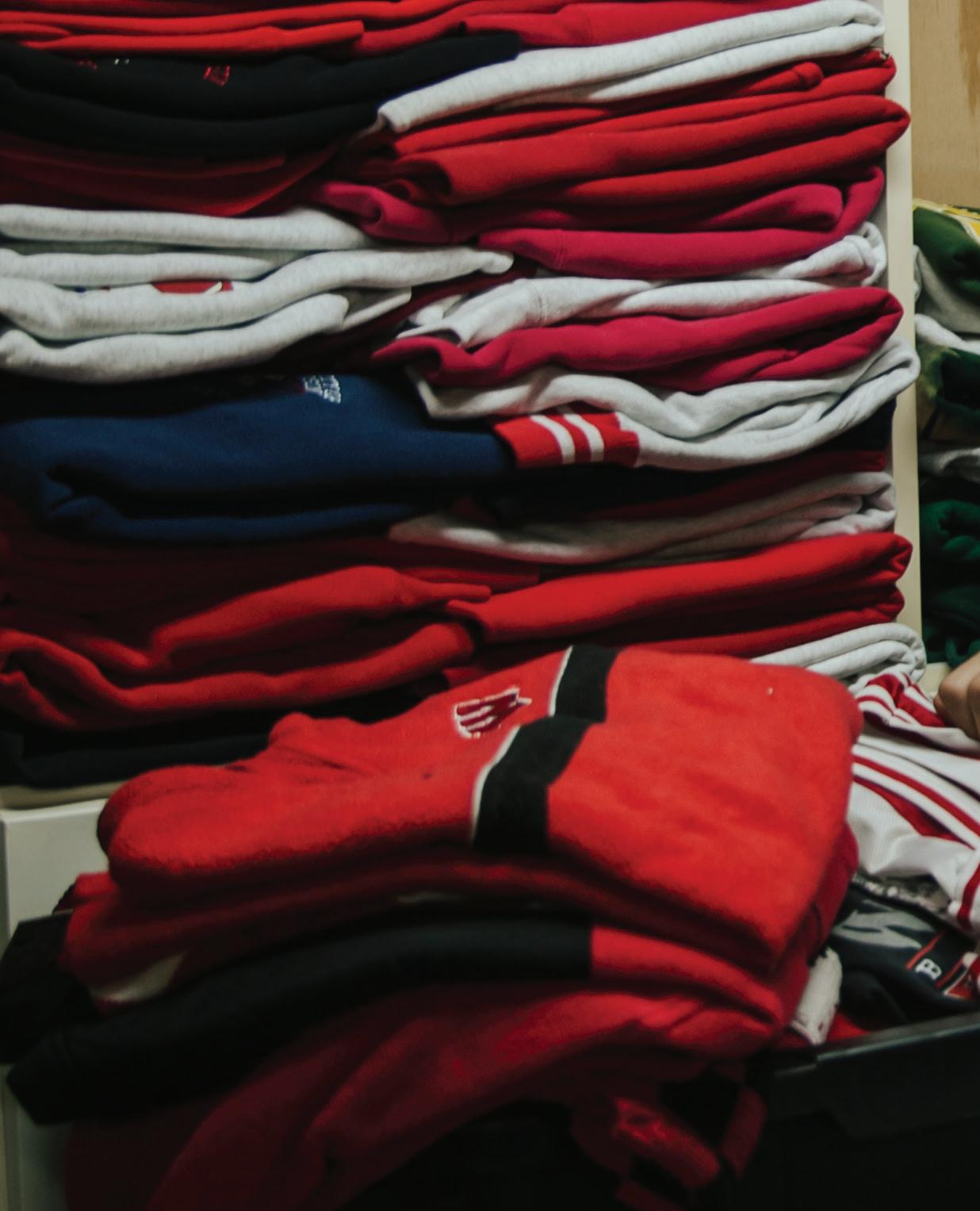
Hammes chose the store.
A small space in La Crosse, on a remote street with just a gym next to it, was home to his very first store front, Lax Vintage, which did not match the ornate, hyper-detailed layout of Singlestitch.
“When we opened we had plastic hangers, Walmart clothing racks,”
he says. “Racks would fall down and break. It wasn’t a pretty sight at all, but it just worked.”
This is funny because Singlestitch’s design has incredible attention to detail. Every inch of the store, floor to ceiling, is covered in colorful vin tage trinkets, hats, shoes, T-shirts, jackets, pants, beanies, vinyls, maga zines, VHS tapes, overalls, sweaters, toys, banners, coats, video games and more. To a vintage lover, it is an adult candy shop.
Every rack that lines the walls and middle of the store is color coded and organized by garment. Above every rack is seemingly a collector’s item from the 1980s to the early 2000s, and just about anything you see in the store is for sale — if the price is right.
Hammes’ attention to every detail and to the curation of a timeless ex perience keeps people coming back.
Though Singlestitch is an upgrade from Lax Vintage, people will go
Mitch Hammes, owner of the Madison vintagewear shop Singlestitch, sits atop his throne of unreleased inventory. His neatly organized basement storage is home to nearly double the amount of items on display up in the store.
wherever Hammes is. Grace Paar, a senior at UW–Madison, is one of the few who have been to both store fronts. Even with the plastic hang ers and Walmart racks, Paar says, “People that were in there were very trendy ... and I was like, I need to dress nice to go in there.”
Hammes sets the tone wherever he is. Instead of creating competition between other stores in Madison, he made professional companions. Take Supra Sneakers, a “hypebeast” store selling high-end, street footwear just three doors down from Singlestitch as an example.

Jason Foss, who runs the store, says he and Hammes are friendly with each other and share ideas for their customers.
“We bounce off each other a lot,” Foss says. “A lot of times people look for shoes, [and] whenever they don’t like some of our shirts, we send them over there.”
The two even talked about setting
up a side-by-side shop in a new place.
Hammes does not only show compassion to his competitors, but his customers as well. His goal is to break away from the hierarchy of the producer over the consumer found in traditional retailer spaces.
“If you’re talking to somebody else who’s behind a counter, they will al ways be up on a podium,” Hammes says. But, “when you can sit down with somebody on the same couch and talk ... it’s totally different.”
This philosophy goes into Hammes’ plans for future expansion. Singlestitch is closing a deal on a sec ond shop in La Crosse and Hammes hopes to upsize his Madison loca tion. While expansion is necessary for Hammes’ incredible amount of inventory, he also wants to do it in order to provide a comfortable space for the community.
Another feature that would accom pany expansion would be a space for styling, which interests Hammes.
“Once I get to realize what people are collecting, what people are into, then I can kind of like go out and purchase items for them that I prob ably normally wouldn’t have picked up,” Hammes says.
Hammes and Singlestitch are al ready thriving after just one year, and it seems the passion and care he feeds into his business will only make this success more sustainable. His work is for the community, just as much as it is inspired by it.
“That’s why I do this, still, to this day. I do this to see other people,” Hammes says. “That’s probably my style ... It’s just stuff that I see throughout the day, it’s just seeing how people dress and trying to put my own twist on it.”

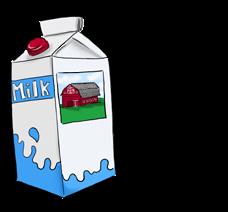 By Brooke Messaye
By Brooke Messaye
Being from California and choosing to come across the country to Wisconsin for college means I am con stantly being questioned about why I chose UW–Madison. After spending the last three and a half years in Wisconsin, I have fallen in love with this state and proudly respond to all the typical questions.
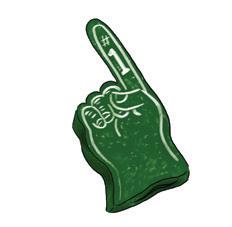
When I first thought of Wisconsin, I can admit my mind went to the typical country view of an expansive field with a red barn, like what you see on the side of a milk carton. While there is plenty of that, Wisconsin is so much more. With Madison’s four major lakes and a vast number of state parks, such as Devil’s Lake, the views are amazing. The Wisconsin Dells is also the “Water Park Capital of the World.” And let’s not forget that Milwaukee is a huge city with tons of opportunities and experiences at the tip of your fingers.

Yes, yes I do, and being in the cheese state has both expanded my cheese palate and provided me opportunities to do some really cool things, like milk a cow at Hinchley’s Dairy Farm. After living in Wisconsin, my favorite food is now fried cheese curds. That’s something anyone who visits must try. I am a proud cheesehead — and yes, I do own that cheese hat.
Ranked as one of the top five party schools, I can admit that UW–Madison students definitely “get lit,” but they also know how to pick themselves up and show out in the classroom. Drinking is a part of the culture in Wisconsin, so of course that carries over to the university. But just as we rank well on the party scale, we also rank well academically as the No. 10 public school in the nation, according to U.S. News.

As a huge sports fan, Wisconsin sports always hype me up. With the recent success of the Bucks as the 2021 NBA champions, the notoriety of the Packers with the most NFL championships in the league and the Badgers as a POWER HOUSE for college volleyball, it is no surprise that people who may not know much about Wisconsin immediately think about sports.
“UW–Madison, you must be a partier.”
“Go
My first encounter with race was at the age of six years old while attending elementary school in the Milwau kee Public Schools system.
Sitting in my kindergarten class room, I watched a group of girls rush towards a pile of dolls during playtime. After all the dolls were taken and the only Black doll was left in the corner, I walked over to grab the doll and asked one of the girls if I could play.
She said no; that the Black doll was on timeout because she was be ing bad just like me. The only thing was, I had never been on timeout before, and I was not bad.
The pulse of Wisconsin is traced with the controversial history of race relations that have been skewed by the lack of documentation and mis information across the state. Black Wisconsinites have been at the fore front of racial injustice, segregation and voting discrimination since the mid-1800s and continue to address
these matters through resistance.
To really understand this past and how it will affect our future, I set out to find where the pulse of history in Wisconsin for marginal ized individuals truly comes from. My journey began at the Wisconsin Historical Society in an interview with Lee Grady, the senior refer ence archivist.
Grady’s work in the archives in cludes providing access to legisla tive papers, photographs, business documents and personal, govern ment and public records from peo ple with local to elite status that dates back to when the state was established in 1848.
“We’ve tended to do a better job of documenting underrepresented communities and people of color, and it’s been better and better as time goes on, but we were not very good at it for the first 120 years of our history as an organization,” Grady says.
Over its nearly 175 years, Wis
consin history has been told from a narrow white male perspective.
“Most of the records are the per spectives of missionaries of govern ment officials, French fur traders and not from Indigenous peoples themselves,” Grady says.
Grady shared the story of Ezekiel Gillespie, an African American man who attempted to register to vote in Milwaukee in 1865 and was denied the right to vote by county officials. He challenged the courts under the provisions of the constitution and won a state Supreme Court case al lowing Black men in Wisconsin to vote in 1866.
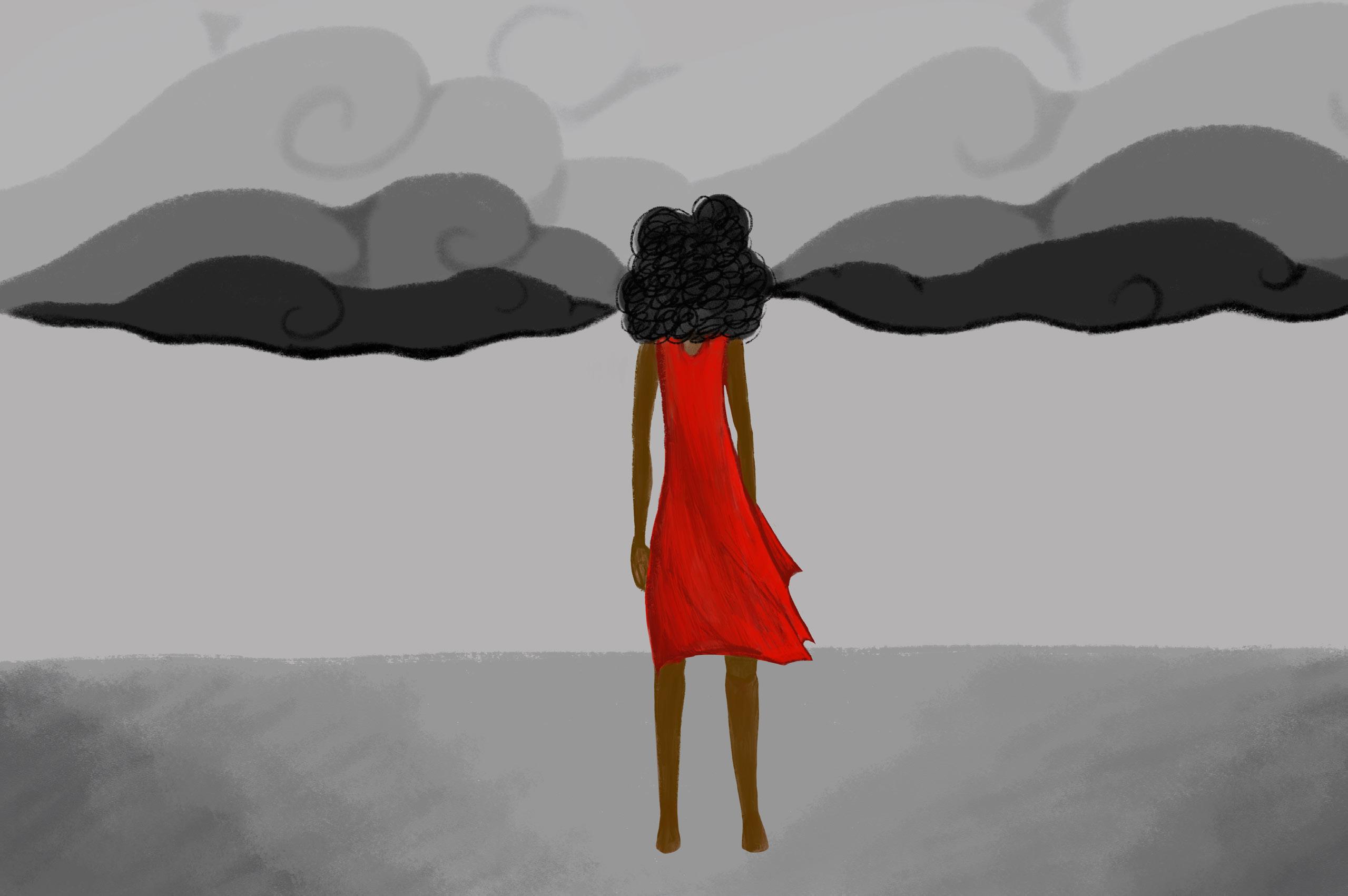
UW–Madison’s Public History Project opened its exhibit “Sifting & Reckoning: UW–Madison’s His tory of Exclusion and Resistance” on Sept. 12, 2022, at the Chazen Museum of Art.
The exhibition recognizes gener ations of students at UW–Madison
who have been involved in move ments on campus and addresses the university’s history of racism and exclusion of its minority students.
Kacie Lucchini Butcher, the di rector of the Public History Proj ect, explains how engaging with the university’s history impacts her and everyone residing in Wisconsin.
“It’s gonna be really important for us as a university and a campus community to think not only about the role that these histories play in Wisconsin, but really in our com munity, where we live, how we’re going to make sure that we don’t repeat these histories in the future,” Lucchini Butcher says.
The exhibition spans over 175 years of history in Wisconsin and highlights hundreds of stories of struggle and resistance at the uni versity and in the Madison com munity. Through archival material, photos and oral histories, the exhib it showcases what students of color have been going through at the uni versity from the past to the present.
Standing in the exhibition sur rounded by the university’s dark past of discrimination and racism, I felt displaced in my identity of what it truly meant to be a Badger.
As my peers gathered around the exhibit, exposure of generations of injustice in UW Housing, athletics, Greek life and student engagement reflected years of students at odds with the university and its policies.
“Madison believes itself to be the mecca of Wisconsin, in that the folk in Madison think they’re so woke and so educated and they know ev erything there is to know about rac ism, but I think this will show them that they have a lot more learning to do,” says Grace Ruo, a native of St. Louis and First Wave Scholar at UW–Madison.
The next stop on my hometown and discovery tour was Milwaukee — one of the most segregated metro areas in the United States in 2022 and my hometown.
As a result of redlining and hous ing discrimination residents live in separate sides of the city divided by
race, class and violence hazard.
My grandmother Geraldine Nev els, a Milwaukee native since 1967, moved to the city during the Great Migration. She was the first person I spoke with about her entrance into what many call “old Milwaukee.”
“My first encounter coming to Milwaukee was the riots in 1967. So I was terrified. I got on the Grey hound bus,” Nevels says. “So I got as far as Chicago, and they wouldn’t let me go any further because they were under martial law at that time.”
On July 30, 1967, violence erupt ed around the country, including the Milwaukee riots in response
historians argue was an intentional miscalculation of votes from state legislative officials, African Amer icans living in Wisconsin officially received the right to vote in 1866.
Today, not much has changed in Milwaukee. According to members of the community, residents of the city are still facing housing discrim ination, voting prevention, redlin ing tactics and segregation from the neighboring areas.
“I don’t need to tell you that we’re still living in this segregation bub ble right now,” Benson says. “Go outside and look at the neighbor hoods. Look at the buildings, look at housing, and you can go to the white community like Shorewood ... Look at those communities and look at development and growth. You can see the difference.”
The disenfranchisement of Af rican Americans across the state of Wisconsin has led to the unfair treatment of residents.
to restrictive housing laws and un equal treatment.
Milwaukee’s history of voting prevention, segregation tactics and control management have caused the resistance of Black Wisconsin ites. An example of resistance can be seen through the investments made by many members of the community for the development of fair and equal housing.
Clayborn Benson, a historian and the executive director of the Wis consin Black Historical Society, ex plained how Bernice Lindsay, Ardie Clark Halyard and Vel Phillips led initiatives to challenge the housing discrimination faced by Black Mil waukee residents.
Benson recalls the story of the miscalculation of the referendum vote that denied African Americans the right to vote in Wisconsin.
“They cheated on the calculation of the 1849 vote,” Benson says. “We had the right to vote from 1849 to when the Supreme Court said you can vote in 1866.”
After over a decade of being de nied suffrage as a result of what
“I see women and men who go against the grain, who are not ac ceptors of racism and fight to make a difference. People who don’t ac cept ‘no,’ who rise above that cur tain of racism and make a difference in our community,” Benson says.
By the end of this journey, I found that without the people who are dedicated to making a difference in their communities, Black voices and history in Wisconsin would be silenced forever.
The pulse of this state has been deeply aligned with the fight and resistance of Wisconsin’s dark past of exclusion by the marginalized groups of people of color across the entire state.
“I see women and men who go against the grain, who are not acceptors of racism and fight to make a difference.”

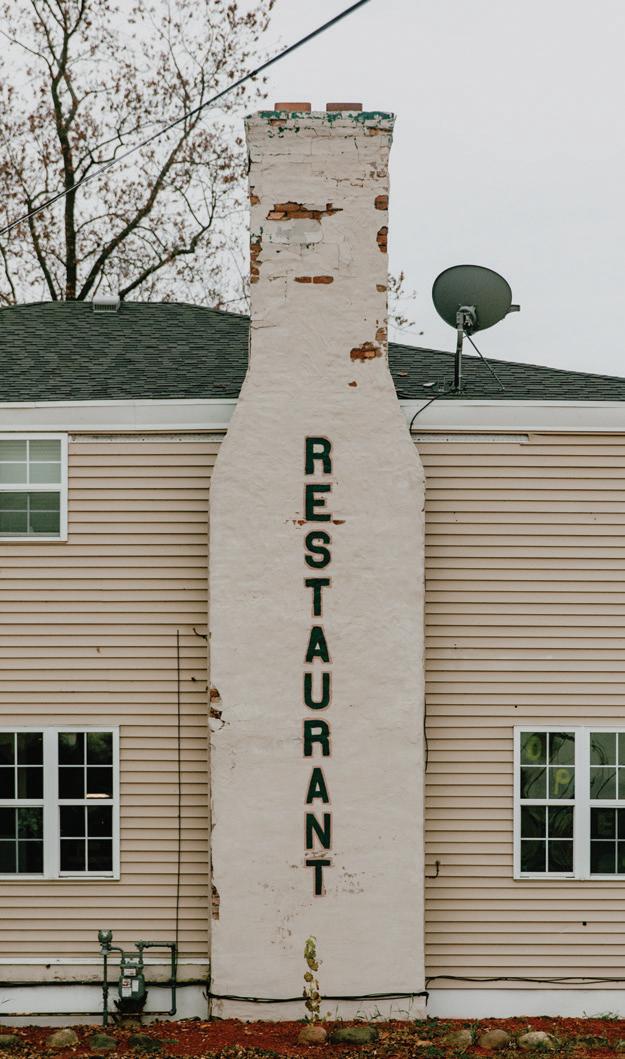
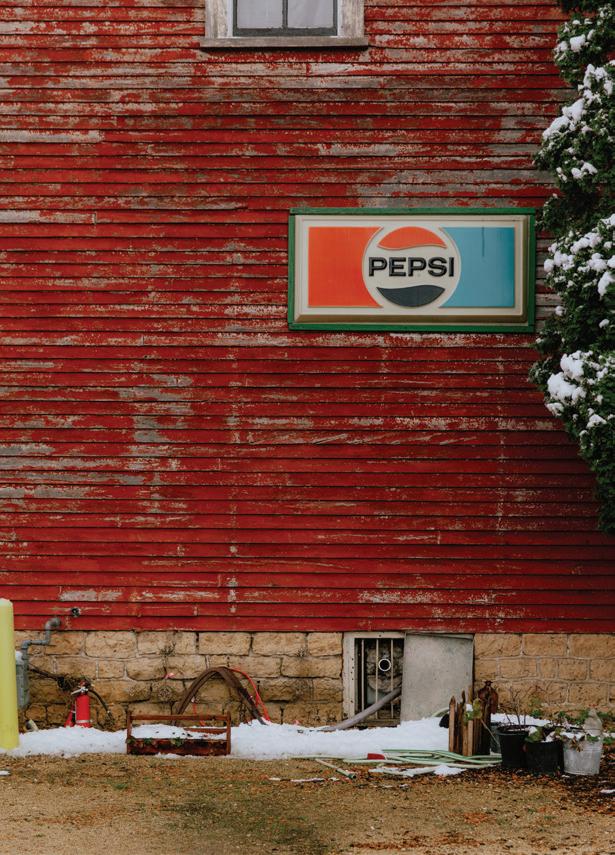
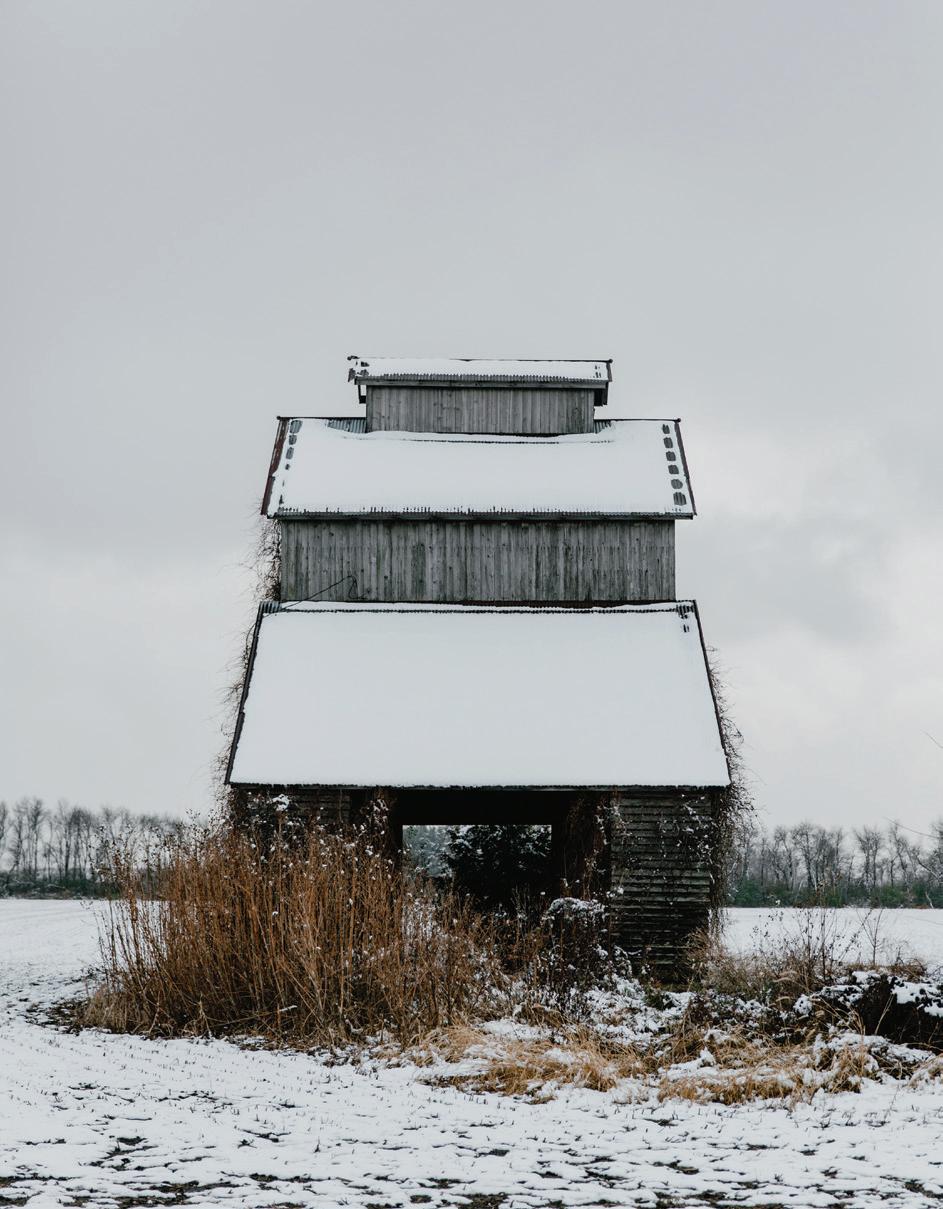
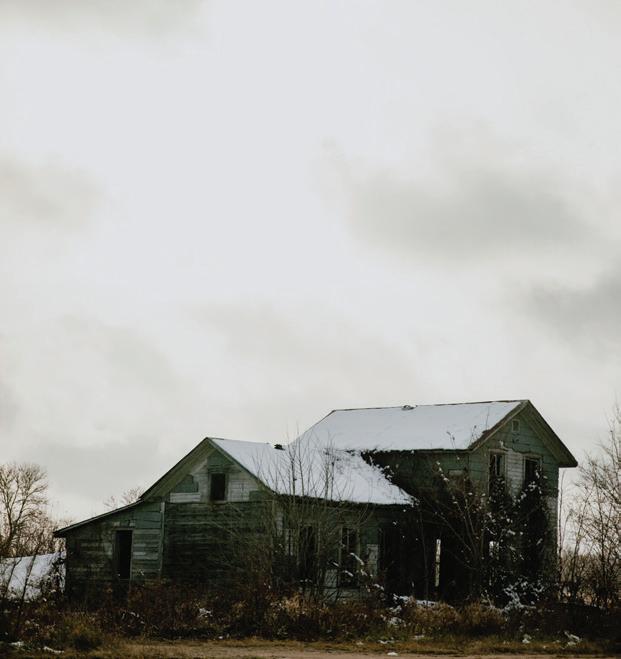
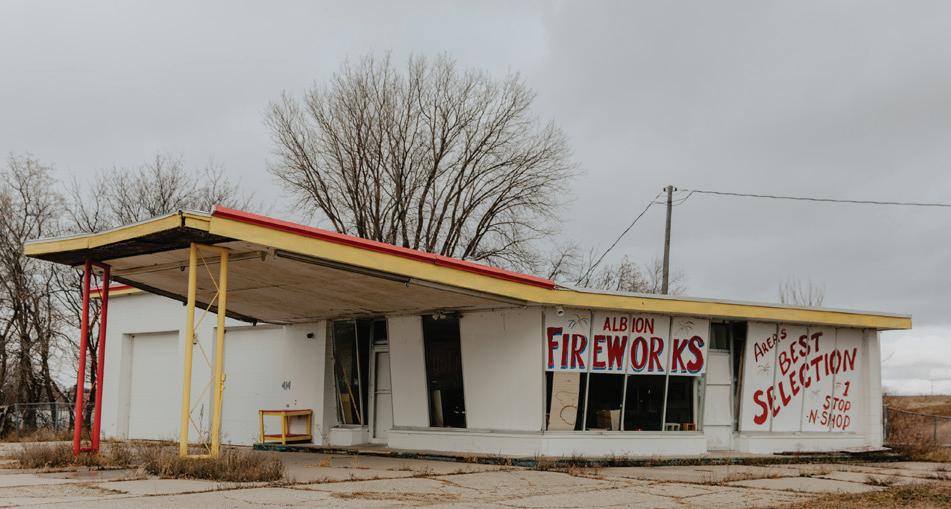

Houses similar in architec ture line the streets like a town straight out of a dys topian novel. The smells of a fresh meal fill every crevice of the hous es as the chatter and laughter from family, friends and neighbors echo from wall to wall. Cars parked in the driveways gather dust, as bikes are sprawled across the front yard.
As you drive through Madison’s Marshall Park neighborhood, three minutes away from the house-lined street is a park with a view from the swings that overlook the water as the sun sets and the orange-yellow rays disappear into the distance. Across town in the Greenbush neighbor hood, an elementary school is just blocks from a hospital.
Without having to leave the com forts of your neighborhood, it all seems right at your fingertips.

This is Madison, Wisconsin.
Madison is the Best – Officially
In 2022, WalletHub ranked Madi son the ninth best city to raise a fam ily in the U.S., based on the criteria of cost of family fun, health and safety, education and child care, affordabil ity and socioeconomics.
But seeing how Madison measures up reveals some hard truths about the community. In areas where stud ies are more likely to reveal gaps de pending on race and socioeconomic status, such as the quality of educa tion, affordability of child care and underemployment, Madison didn’t fare as well.
Milwaukee sees a similar pattern when it comes to measuring the quality of life, and it adds up to a Wisconsin paradox: While the state may be a great place for some fami lies, others, especially those who are
Black, see real differences in how life is lived here.
Really, there are two Wisconsins. This idea stems from the work of Sue Robinson, School of Journalism and Mass Communication professor at UW–Madison. Robinson wrote a book in 2018 called “Networked News, Racial Divides: How Pow er and Privilege Shape Public Dis course in Progressive Communities.”
In this book, she discussed the idea of “two Madisons.” While she raises her family in a neighborhood where there are a plethora of resourc es, Robinson recognizes her white ness and privilege and acknowledges that just a few blocks away, the situa tion may look different.
“There is another Madison, and in this one, all of these metrics that are so rosy for people who have white skin instead show huge disparities for Black and Brown people because of basic opportunity debts, because these systems were not built for them to succeed — from graduation rates to the school-to-prison pipeline to access to affordable health care to well-paying jobs,” Robinson says.
Michelle Hellrood has spent her entire life living in Madison, so choosing to raise her two kids here was a no-brainer.
“I love the Madison community and everything it has to offer ... from ... the Geology Museum and [the] Chazen and just walking around campus,” Hellrood says.
Madison’s activities and school systems were a draw for Hellrood and her husband. Working in child care, she recognizes the lack of high-quality services, but as kids en ter the school system, it improves.
Even as one of the best places in the nation to raise a family,
Wisconsin still has ground to cover
“I am a product of the Madison Metropolitan School District and UW–Madison, both my kids are,” Hellrood says. “I was super happy with my children’s experiences in both elementary, middle and high school here.”
Darcy Burke, mother of three girls and lifelong Wisconsin resident, feels the same way about education in Madison.
“I would say our kids did really, really well with all of their oppor tunities in Madison schools,” Burke says. “I would say that we had real ly positive educational experiences learning-wise and enjoyment-wise.”
Burke’s fondest childhood mem ories stem from her summer days at the Memorial Union Terrace with her sister and family, and a large rea son why she chose to raise her family in Wisconsin is because of the prox imity to her family.
“Having that community that I know and grew up with here in Wisconsin just sort of lent itself to bringing our kids up in Wisconsin and having that community neigh borhood,” she says.
Jada Young, a 21-year-old Black UW–Madison student from Milwau kee, looks back at her childhood and says she would “absolutely never” raise a child in Wisconsin.
“There are the high rates of segre gation in Milwaukee, and there are a lot of issues [there] that affect Black people,” Young says. “I would not
want to raise Black children in an environment where they don’t have the resources to succeed.”
When she thinks back on her childhood, the memory that always comes up is the look of fear in her sister’s eyes as they dove to lay on the floor to hide from gunshots outside of their duplex.
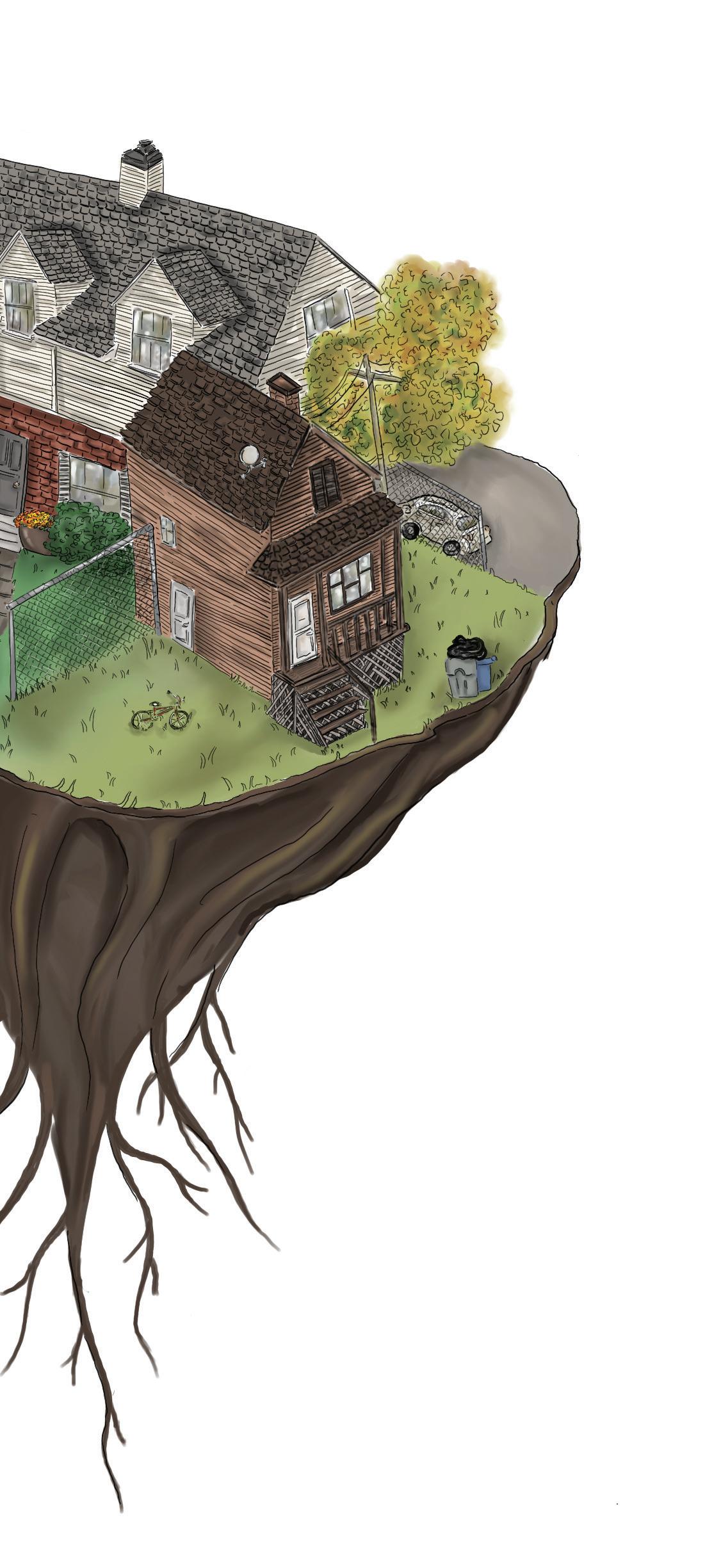
“They have a large amount of gun violence days in Milwaukee and plenty of other issues that I had to endure, and it would make me a ter rible parent to make my kids live it as well,” she says.
Marcellus Lawrence, a 20-yearold Black UW–Madison student who grew up in Milwaukee, echoed Young’s feelings of not wanting to raise a family in a city with such a prominent racial divide and segrega tion, even going so far as to refer to his hometown as “Killwaukee.”
In order for him to live a shielded life at a young age and to academi cally thrive, his parents had to out source his education.
“I felt like my worldview was al ways protected, so I never got a re ally accurate representation of what it was like early on,” Lawrence says. “After attending private and Cath olic schools, in some sense I was removed from the ins and outs of what was happening on the street, but I then went to school in a public setting during high school and I got to see like what the world was really like from a totally different stand point,
that is a community that I
and
just wouldn’t put kids in.”
“There is another Madison, and in this one, all of these metrics that are so rosy for people who have white skin instead show huge disparities for Black and Brown people because of basic opportunity debts, because these systems were not built for them to succeed.”
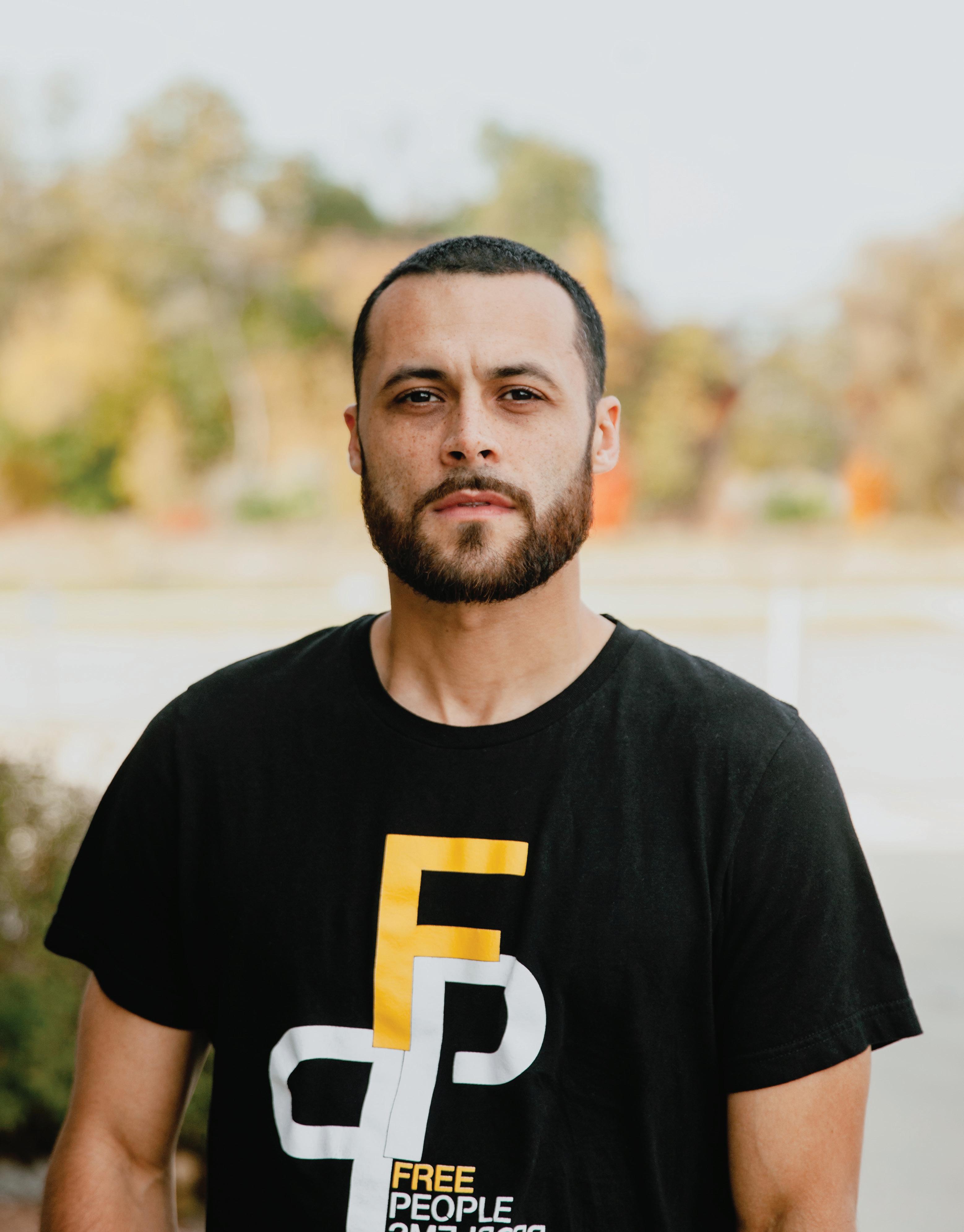 By Erin McGroarty
By Erin McGroarty
He spent 17 years behind bars — now, he’s determined to help those still inside prepare for release
Shannon Ross is executive director of the Milwaukeebased nonprofit, The Community, which focuses on providing information and resources to those in prison and about to leave incarceration. Ross spent 17 years in prison and was released in September 2020.
Some say time freezes when you go to prison. That the age you are when you go in lingers in a way when you get out.
Those close to Shannon Ross de scribe him as possessing the wisdom of an old man, but the drive of a 19-year-old.
That was the age Ross was when he began a 17-year prison sentence for a homicide conviction.
While inside, Ross read piles of books, completed his undergraduate degree in business administration and began a newsletter for other in carcerated people that would later become the successful reentry non profit he runs today.
“My time in prison was just a lot of focusing on my future and staying in society,” Ross says.
Ross’ determination was born of a resilience and passion he describes as core to his personality as a whole; a “natural personality” for which he credits his family.
The smooth reentry Ross experi enced is not the case for many leav ing the prison system, and society’s narrative of negativity and fear sur rounding formerly incarcerated peo ple only adds to the barriers they face upon reentry.
Ross was released from prison just over two years ago. Now, he’s push ing for the change he sees as vital in the ways society responds to people with criminal records.
Ross grew up in a part of North Milwaukee he jokingly describes as “hood adjacent.” On the corner block of North and 47th, he remem bers a good childhood, as the only child in a loving family.
But, coming from a biracial back ground and growing up in a largely Black neighborhood, Ross recalls getting made fun of a lot as a child.
“When I shave and I don’t have any facial hair, I look very young. And so especially when I was young er, and that was the case, I would get a lot of comments about being gay and a lot of jokes about that,” Ross says. “Growing up in the neighbor hood where I already was very fair skinned, I would get the white com
ments and the gay comments in a Black neighborhood, in a very hy per-masculine culture.”

The bullying contributed to Ross feeling a lack of belonging.
“I don’t think I’ve ever really felt a sense of belonging anywhere, but I’m very happy about that now be cause it allows me to belong every where,” he says.
Ross was imprisoned at nine dif ferent facilities across the Wisconsin Correctional System throughout his 17-year sentence.
The first six years, he was incarcer ated at Dodge Correctional Institu tion in Waupun, about an hour from Milwaukee and still close enough for family to visit. Ross saw his parents nearly every week during this time.
He was later transferred to Stanley Correctional Institution in Chippe wa County. This prison was much further away, and his parents weren’t able to travel the 250 miles more than once a year.
At that point, Ross had fostered a bond with his parents that could last the mileage and saw the time as a chance to focus on his goals.
While at Stanley, Ross complet ed distance education courses from UW–Platteville, which his cellmate, Jeremy Taylor, told him about.
These courses contributed to Ross earning his undergraduate degree from Adams State University while incarcerated at Oakhill Correctional Institution in 2017.

“He was driven and focused in all aspects of his life, even sports,” Tay lor says. “Which is one of the reasons why I think we got along so well, be cause we understood each other.”
Taylor, also originally from Mil waukee, now runs a machine shop in Florida — a dream he built while in prison alongside Ross.
When the two weren’t doing schoolwork or playing basketball to gether, they were making plans for what they would accomplish upon their release.
“He had plans that he would bounce off me with regard to The Community, and I’d bounce ideas off of him,” Taylor says.

25%
of formerly incarcerated people experience homelessness. This rate is 10 times that of the general public.
~2%
of formerly incarcerated people experience unemployment, compared to the 2020 COVID-19 unemployment peak of nearly 15% among the general public. STRIVE 35
27%
Ross began The Community — now a successful nonprofit aimed at easing the reentry process and pro viding resources for those recently released from prison — as a newslet ter while he was still in prison.
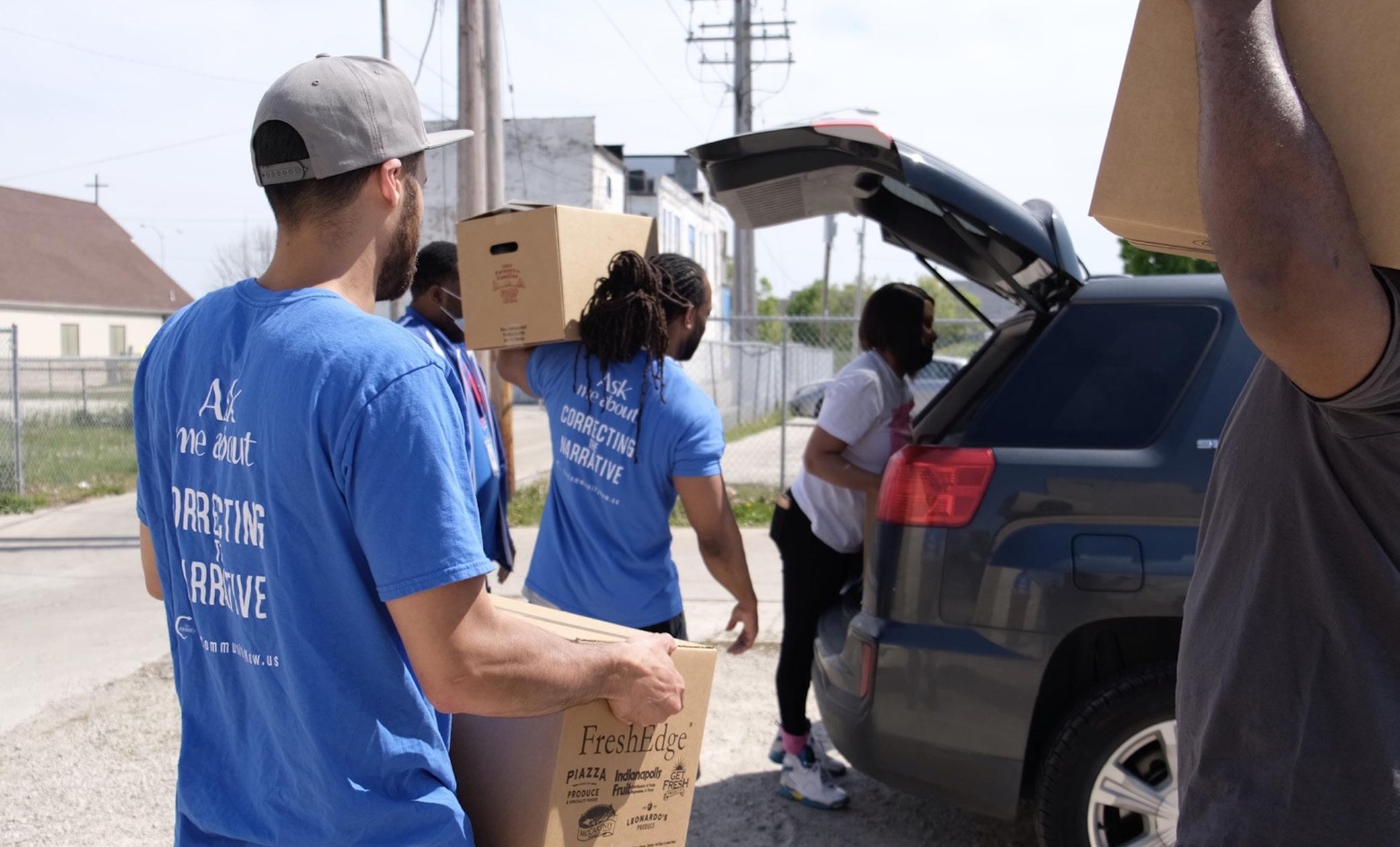
He wanted a way to share infor mation he was gathering on reentry with other incarcerated people.
“People were confused about a lot of myths that exist in prison,” Ross says. “I would readily go out of my way to share resources and get infor mation for people. It just seemed like a natural progression.”
The first issue was shared in De cember 2014 with the help of Ross’ mother, who previously worked in the newspaper world, along with a man Ross had met in prison who has since been released, was working in a copy shop, and could help with de sign and printing.
Ross produced the newsletter from within prison for six more years pri or to his release. The two-year anni versary of his release from prison fell the day after we spoke.
When Ross was released in Sep tember 2020, the newsletter had 8,000 readers. It is now widely read across the Wisconsin Prison System and accessed by thousands of other incarcerated people across the coun try, Ross says.
Another important aspect of Ross’ work and The Community centers around a campaign called Correcting the Narrative, made up of a series of video interviews with formerly incar cerated people sharing their stories of triumph, struggle and success.
“It’s simply showcasing the suc cesses, humanity and agency of peo ple with criminal records, to focus on that storytelling so people with records can know their own em powerment,” Ross says. “But also for people that don’t understand this demographic, so that they can then also have a different view – a more accurate view – of this demographic. So the whole story, the correct story, is known.”
Kaleigh Atkinson does the film work for the campaign. Atkinson met Ross about six months after his release while she was producing a podcast with her partner who was incarcerated in the state of Oregon.
Atkinson remembers feeling an in stant connecting with Ross.
“I think it’s imperative what he’s doing,” Atkinson says.
Atkinson began this work while her partner was still incarcerated, and she described the sense of com munity she felt finding other people who had been impacted, personally or vicariously, by incarceration.
Ross has dedicated his life to help ing those who are still in prison pre pare for the day they get out. This work is crucial in Ross’ mind, partic ularly because, as he sees it, the pris on system itself only widens the gap between those incarcerated and the rest of society.
“It’s made people rich who are al ready rich. It has made individuals that are in different parts of society and are already separated by things like class and race and religion even more separated,” Ross says.
The system, as it is currently run, preys on a thirst for punishment of those who have wronged us that is inherent to human nature. That isn’t a solution, though, Ross says.
For Ross, bringing about mean ingful change in the way incarcer ation is approached in this country will have to come from within.
“The system is absolutely a fail ure in pretty much every single way you can think of, but it also is very logical and human in the way it was developed and why it continues to exist,” Ross says. “And we need to ac knowledge that if we’re really going to address it instead of just thinking that it’s some evil people out there that are running it, because it’s us. It’s not other people that are running the system.”
The Correcting the Narrative campaign, launched after Ross was released from prison in 2020, is made up of a series of video interviews with formerly incarcerated people who share stories of success and resilience after release.Crab cakes made from hearts of palm and chickpeas. A succulent “turkey” roulade made from seitan and soy. A banh mi inspired sandwich with lemongrass ginger grilled tofu.
These are a few of the ways chefs in Wisconsin have created delectable vegan, vegetarian and plant-based dishes that live up to their more “tra ditional” counterparts.
While we have long accepted the notion that the energy we need to survive must be acquired through something with a heartbeat — cheese from cows or eggs from chickens, for example, chefs and individuals have begun to push back. There are so many alternatives without a pulse that give us the nutrients and protein we need to move forward.
Even in a state known for being one of the nation’s leading dairy producers, Wisconsin has grown in its number of plant-based and veg an restaurants. While some people choose to make the transition to a plant-based diet due to ethical con cerns, others make the switch for health concerns.
Through innovative techniques and unlikely combinations, chefs across the state prove that a plantbased diet doesn’t have to be boring.
From the Source Arielle Hawthorne felt alone and isolated when she first took the dive in a plant-based diet. In her journey to be more intentional about the food she was putting in her body, she
discovered the difficulty of finding places that catered to her diet.
“What I noticed was there were not a lot of options for people who don’t eat meat and dairy when you are out and about,” Hawthorne says.
In 2019, Hawthorne decided to start a food truck that would even tually grow to become what is now Twisted Plants, a full-fledged, plantbased restaurant located on the East Side of Milwaukee and in Cudahy, a suburb of Milwaukee.
“It was really important for my food to still be flavorful,” she says.
Jordan Short has worked as a chef for 28 years and has been an execu tive chef for 16 of those years. In his almost eight years as executive chef and two years as general manager at Cafe Manna in Brookfield, a Mil waukee suburb, one thing has kept him constantly inspired: tradition.
“When I go into creating menu items or specialties ... I know what sells,” Short says. “Just real typical items. I just make them vegan.”
Carrie Richardson from Heart land Farm Sanctuary in the Madison suburb of Verona began her journey toward a plant-based diet early on.
“Living plant-based was an ethical choice,” she says. “I valued animal life, and I realized I had a choice in whether or not to contribute to ani mal suffering in this way.”
While ethics and principle are a concern for some, others turn to veg anism for health reasons.
Hawthorne gave up meat in 2017 and dairy in 2018 when she learned that much of what she ate increased her chances of health complications.
“Upon doing some research [and] watching a few documentaries, I dis covered that a lot of what I was eat ing was not good for my body, and it was increasing my chances for dis eases, such as heart disease and dia betes,” Hawthorne says.
Robin Kasch, the founder and owner of Cafe Manna, struggled with health issues and opened the cafe in hopes of helping others in the area with similar problems. She wanted to provide a food establishment that would be free of potentially harmful ingredients.
Kanwal Singh has always strug gled with gluten intolerance, and the Kitchari — a mixture of rice, lentils and curry leaves tossed together in Indian spices to make a warm soup — at Bombay Sweets is one of her goto staples.
“It’s a blend of protein and carbs together and that makes it a healthy option,” she says. “You don’t feel any bloating. It’s very easy to digest.”
But it’s all about balance — and Richardson would have to agree.
“It’s not so much about physical health for me. It’s completely possi ble to eat an unhealthy plant-based diet,” she says. “I guess the biggest difference for me is feeling that my lifestyle and food choices became something bigger. I made this deci sion on a personal level and found myself part of a movement.”
Green Owl Cafe in Madison is one of many plantbased restaurants throughout the state that seeks to support the growing number of Wisconsinites adopting primarily plant-based diets.
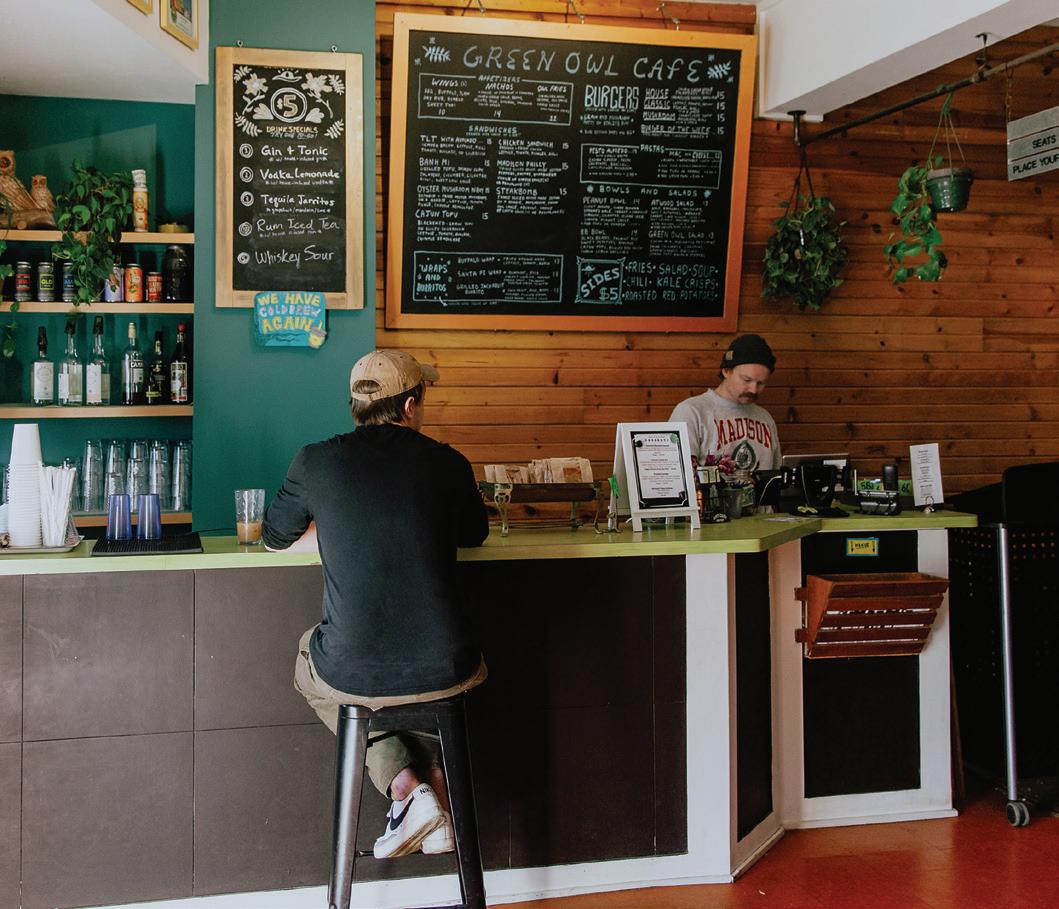
Two cows at Hinchley’s Dairy Farm stand alongside each other. To farmer Tina Hinchley, these cows are more than just animals — they’re family.
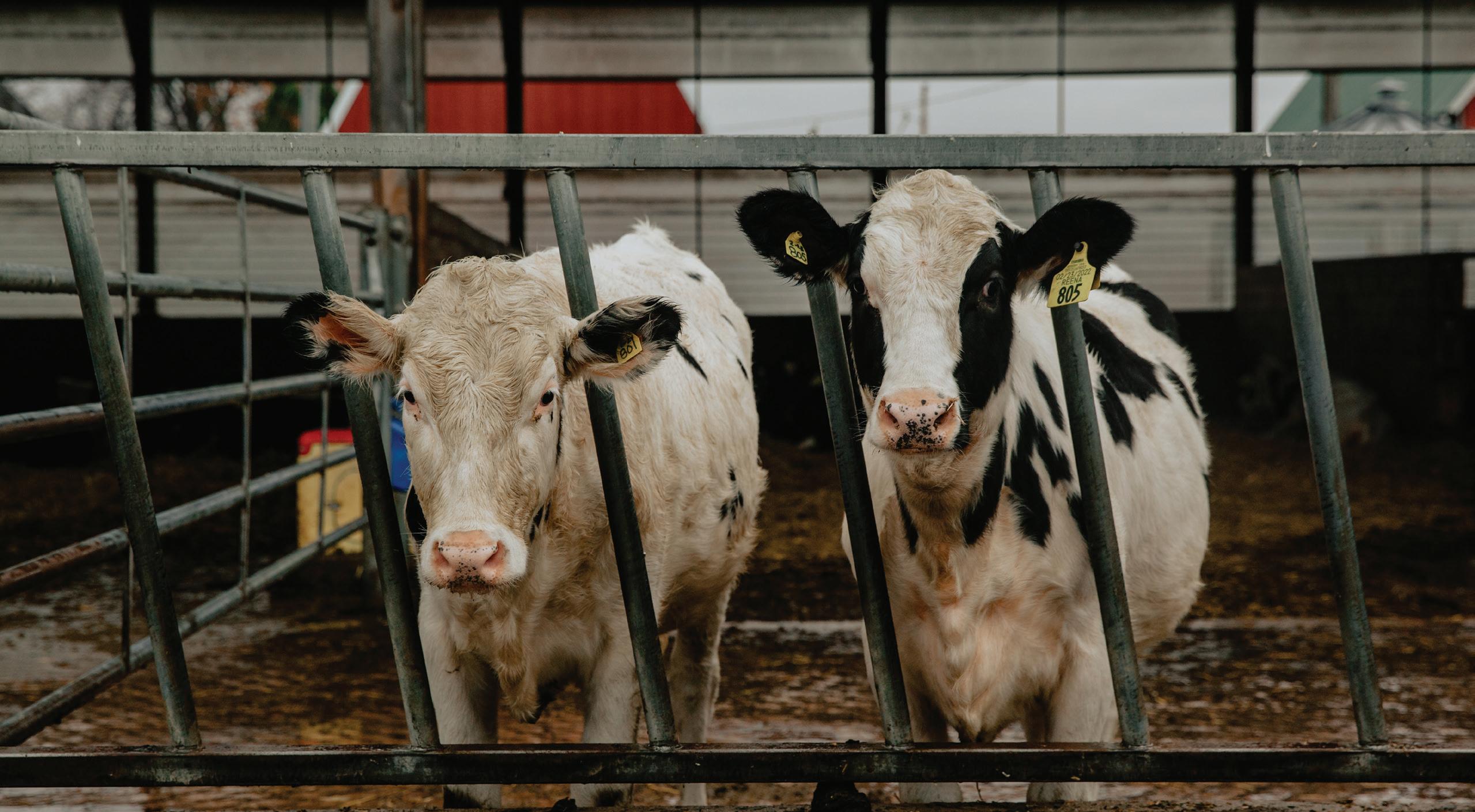
Wisconsin is home to 64,000 farms, but it’s more than just America’s Dairyland. Novel technologies and sustainable developments allow the state’s farms to cultivate family and community alongside their yields. Pulse dives into the past, present and future of agriculture across the state.
Cranberry bogs are flooded during harvest season to help farmers like Rochelle Biegel Hoffman, (right) a fifth-generation cranberry farmer and owner of Rooted In Red, pick the berries more efficiently.
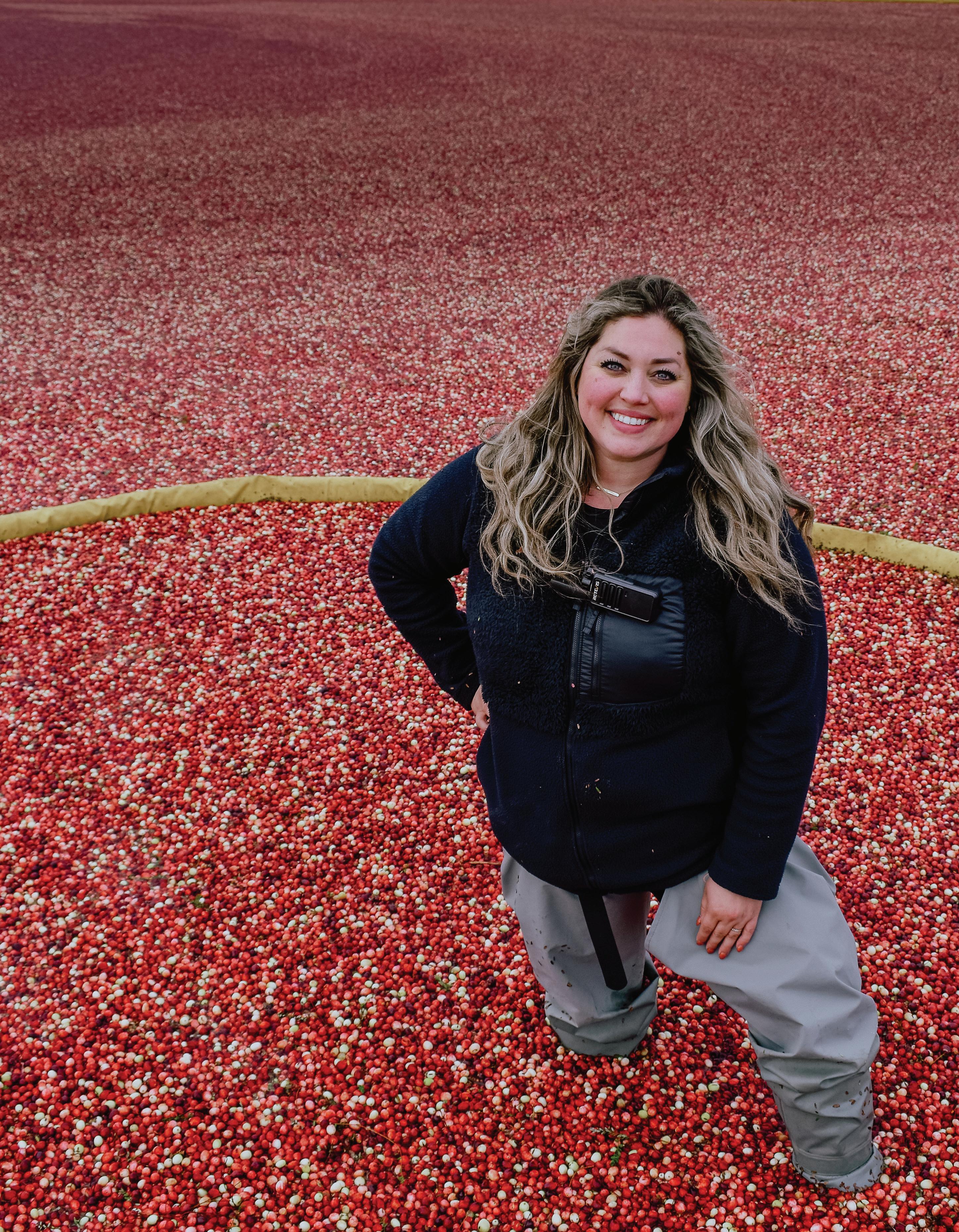 By Charlie Hildebrand
By Charlie Hildebrand
Amber Bristow remembers the moment she decided to work on her family’s cran berry farm.
With a degree in sports manage ment and a job working for a minor league baseball team in Iowa, Bri stow thought she knew the career path she wanted to take. But every time she left her family’s cranberry farm in Warrens — a village in the western part of Wisconsin — to drive back to Iowa, Bristow would break down in tears.
Something about her family’s op eration kept drawing her back.
“Why am I doing this? Why am I putting myself through this when I could just stay here and not have to cry every time I go back?” Bristow recalls asking herself years ago.
At this pivotal life moment, Bris tow decided to return to her roots. For nearly five years now, Bristow has worked alongside her family as a fifth-generation cranberry grower.
Bristow’s decision to follow in her family’s footsteps is not unusual in Wisconsin’s cranberry industry. Wis consin is home to numerous multi generational cranberry farms, some of which are more than 120 years old. Despite being overshadowed by other industries in the agricultur al sectors, these multigenerational cranberry growers continue to blos som year after year.
Wisconsin is the leading producer of the country’s cranberries, having surpassed its main competitor, Mas sachusetts, nearly three decades ago. The industry produces more than 60% of the country’s cranberries an nually. Tom Lochner, the executive director of the Wisconsin State Cran berry Growers Association, believes the industry’s success is tied to the state’s Indigenous history of harvest ing cranberries.
“They used them for food, they used them for dye, they believed they had medicinal qualities that they could use them for. They used them as trade items,” Lochner says. “They grew here in the wild, and
they evolved over eons to the climate in Wisconsin and to the environ ment that cranberries grow in.”
Cranberries grow on low shrubs and vines and are perennial crops, meaning they have a lifespan lon ger than two years. Amaya Atucha, an associate professor at UW–Mad ison’s Department of Horticulture and a fruit crop extension specialist with the UW–Madison Division of Extension, says cranberry plants are often over 100 years old.
“That’s very different from other crops that we grow here in Wiscon sin, like corn. You plant [corn] every year, it germinates, you harvest it and the plant dies,” Atucha says.
Cranberry vines break out of their dormancy period in the spring when temperatures rise. The vines typi cally bloom in June, signaling bees to begin pollination. The berries grow throughout the summer and are ready to be harvested when they turn red.
Atucha says the change in color is caused by dropping temperatures — the only indication that harvest sea son is beginning.
“What is really important for cranberry production is the color of the berries, because most of the fruit is going to go for processing,” Atucha says. “They have to be completely red because that is what the consum er wants.”
Cranberry vines are submerged in water, where equipment removes the berries from their vines. Once the berries are detached, growers use a pump to lift them out of the water. The berries are then transported to receiving stations and are typically turned into cranberry juice, dried cranberries or health supplements.
Lochner believes that Wisconsin’s cranberry growing success is in part due to the state’s existing agriculture industry. The state already maintains the infrastructure and the expertise to grow crops, which is reflected in the abundance of multigenerational cranberry farms.
Rochelle Biegel Hoffman, a
fifth-generation cranberry grower, believes the state’s sandy glacial de posits created the perfect natural ecology for native and agricultural cranberry cultivation.
“You can’t just grow a cranberry farm anywhere,” Hoffman says. “You have to have the right soil, you have to have access to water. There are a lot of variables that have to be in place before a cranberry farm can successfully grow.”
Hoffman says there “hasn’t been an overabundance or an underabun dance of cranberry farms,” an aspect she believes has contributed to farms being successfully passed on from generation to generation.
Hoffman now owns Rooted In Red, her family’s farm in Wisconsin
Rapids in the central part of the state. She says her family’s history in the industry started as an accident.
Around the turn of the 20th cen tury, Hoffman’s great-grandfather Charles Dempze began growing cranberries as a farmhand when he was 12. Dempze worked his way up to become the farm’s manager before owning it entirely. Dempze’s son, Gordon, began managing a second cranberry farm, Dempze Cranberry Co., when he returned from World War II. Today, Rooted in Red rests on the land that is Gordon’s legacy.
“It provides a really great life to grow up on and is a special, very generational style industry, which is kind of unique,” Hoffman says. “When it comes to farming, there is a lot of farming that is generational, but cranberry is a particularly gener ational farm.”
Bristow’s farm — Russell Rezin & Son — was founded by her greatgreat-great-grandfather in 1918. Bri stow’s father married into the fami ly business and, despite having no farming experience, learned how to grow cranberries solely by working alongside family members.
“You can’t just grow a cranberry farm anywhere.”BY CHARLIE HILDEBRAND
“You can’t really go to school to learn how to grow cranberries. It’s secondhand learning. You’re learn ing from others and learning as you go along the way,” Bristow says.
Despite working on the farm as a child, Bristow’s parents did not pres sure her to stay after high school and encouraged her to find her own path. It took going to college and working other jobs for Bristow to return to the farm.
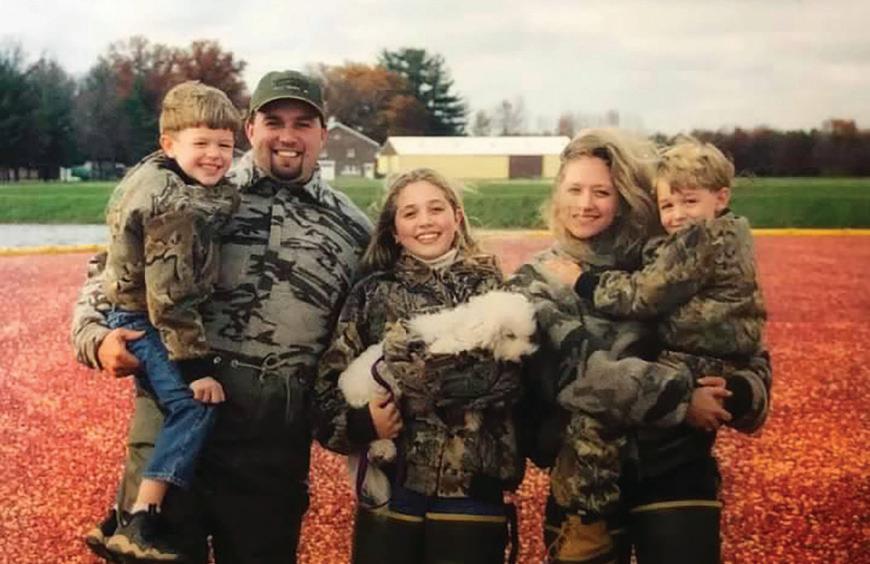

“It’s truly a crop that, once you get to know and understand it, it’s just so fascinating that it’s hard to be pulled away from,” Bristow says.
Although Wisconsin’s cranberry farms are rooted deeply in tradition, growers are making room for inno vation. Collaboration between grow ers and UW–Madison researchers allows farms to maximize the effi ciency and sustainability of their harvests. Atucha works with the Wis consin State Cranberry Growers As sociation to determine what aspects of harvesting need to be researched. Hoffman recognizes how valuable the researchers are when it comes to
developing methods to sustainably grow crops. The collaboration al lowed Hoffman to implement preci sion farming, a method to produce more cranberries with a smaller footprint. Rooted In Red recently started using sensors on the farm to determine whether irrigation is nec essary on a given day, allowing the farm to conserve water.
By pursuing a doctoral degree in education sustainability, Hoffman hopes to learn how to improve the sustainability of cranberry produc tion throughout the industry.
Hoffman is already making plans for her children to become sixth-generation cranberry growers. Rooted In Red’s family ownership allowed her kids to become involved at a young age: her 11- and 12-yearold daughters participate in the farm and help horticulture scientists per form nutrient and pest assessments in the summer.
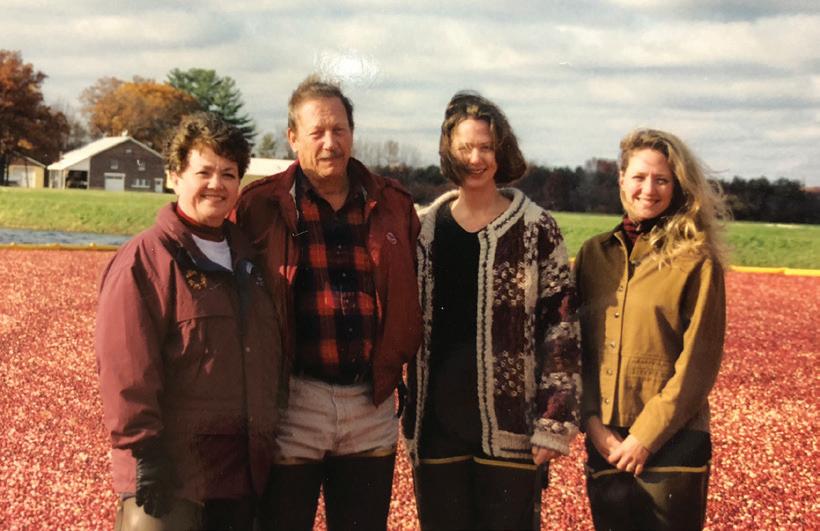
“My goal as a parent is to keep the business as healthy as it possibly can be,” Hoffman says. “So if my kids de cide and choose that they would like to be cranberry farmers in the future, they are able to do that.”
Generations One & Two Charles Dempze (left) and son Gordon
Generations Two & Three Gordon Dempze (middle) and sons Jim (left) and Gary (right)
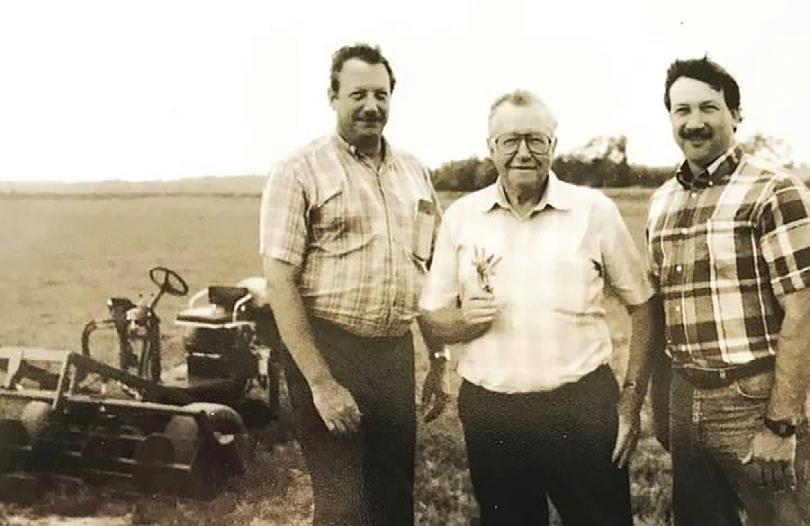
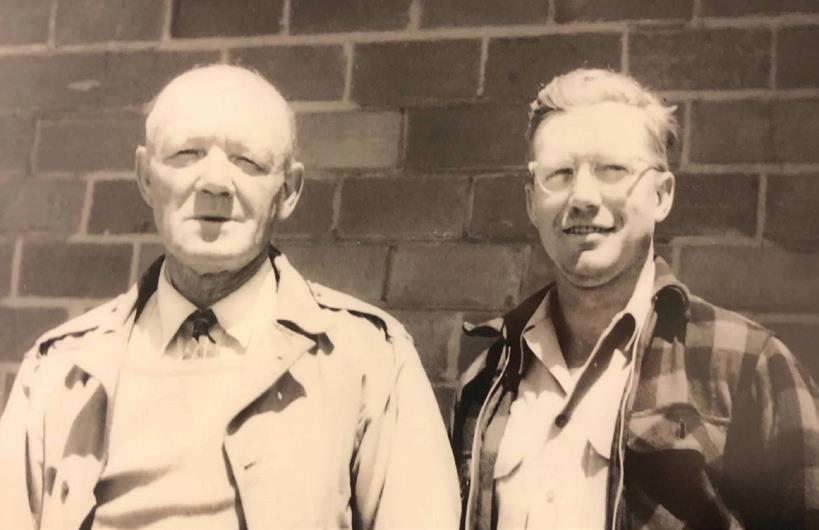
Generations Three & Four Jim Dempze and family, including daughter Jamie Biegel (right)
Generations Four & Five Jamie Biegel’s family, including daughter Rochelle Biegel Hoffman (middle)
PHOTOGRAPHY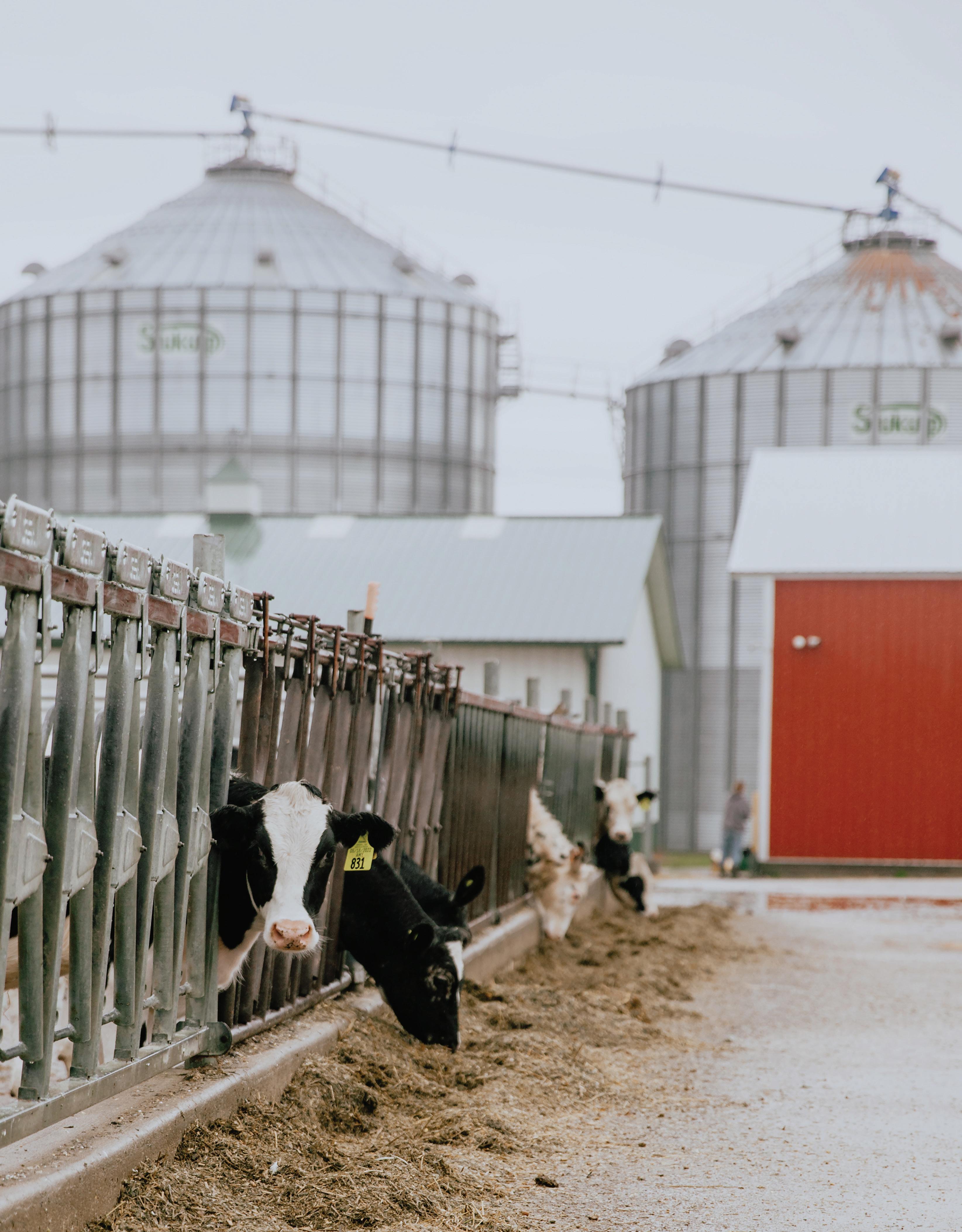
Stashed away in a quaint barn on Hinchley’s Dairy Farm, Tina Hinchley collects dozens of maps. From national maps to ones that solely feature the state of Wis consin, each colorful diagram is lit tered with markings. Notes in black Sharpie point to the hometowns of the hundreds of people who have traveled from all over the U.S. to visit the family-owned dairy farm located in Cambridge.
The number of markings becomes noticeably smaller after 2020. The onset of the COVID-19 pandemic forced the Hinchley family to re think the operations of their busi ness, located about 25 minutes east of downtown Madison.
“When COVID hit, all of that stopped, just like with everybody else,” Hinchley says. “It’s scary not being able to pay your bills and not knowing what COVID was going to bring with having no school reserva tions and everybody isolated.”
COVID-19 is the latest in a series of challenges to Wisconsin’s dairy in dustry, once the state’s lifeblood but now threatened by worker shortages and high production costs. To make ends meet, the current generation of dairy farmers consistently updates technology and diversifies their services to keep their smaller-sized farms alive for future generations.
The inability to host farm tours is not the only issue that has affect ed dairy farms in recent years. For farms of all sizes, other factors, such as a widespread labor shortage and the overall cost of dairy produc tion, causes challenges for farmers, according to Mark Stephenson, the director of dairy policy analysis at UW–Madison.
When Hinchley’s husband be gan farming in the 1980s, milk was priced at $18 per 100 weight (or 11.6 gallons of milk), she says. In 2020, the Hinchleys’ milk was priced at $9.40 — or half the price for the same amount of milk. Hinchley says the family had to dispose of 25% of their milk during the pandemic.
“So at that time, it was very stress ful on all of us because, you know, we’ve got all these cows,” Hinchley says. “They’re producing all this milk. Eventually, what we ended up doing is selling some cows, because it’s just heart-wrenching to see your hard work go down the drain.”
The labor shortage left many larg er-sized farms with fewer employ ees, Stephenson says. Among small er-sized farms, challenges related to workers leaving to pursue careers in other industries in addition to fewer people living in rural communities poses a challenge to the dairy indus try, according to Shelly Mayer, the executive director of the Professional Dairy Producers of Wisconsin.
Hinchley says their family has tried to instill in their daughter a desire to pursue dairy farming while also keeping their technology updat ed. For instance, the family now uses robotic milking machines, which au tomatically milk dairy cattle without using human labor, and rumination collars, which monitor cow health through sensors.
Their daughter recently graduated from UW–Madison with a degree in dairy science, which has helped improve the conditions and techno logical aspects of their farm. She now serves as the sixth-generation dairy farmer in the family.
“If you’re a family farm and you want your kids to stay, you have to keep going on and progressing for ward,” Hinchley says. “You have to get the new equipment, and you have to stay up to date on the tech nology. If you don’t do that, there’s nothing really for your kids to come to. As it is right now, the margins for farming are very, very tight.”
Despite the fact that many small dairy farms have shut down due to these challenges, milk production in the state is higher than ever — due to a larger trend of consolidation in the dairy industry, where larger farms acquire the land of smaller farms that can no longer sustain them selves, Stephenson says.
“The United States had close to 3.5 million dairy farmers back in the 1930s,” Stephenson says. “And today we’ve got less than 30,000. So that consolidation is just a continu ous strong trend. But our farms are getting bigger. We’re producing more milk than we ever have.”
According to Stephenson, while consolidation may cause controversy among operators of small farms, it isn’t necessarily a bad thing in terms of the overall success of the industry and the economy.
The fact that Wisconsin is home to both larger- and smaller-sized dairy farms is a reason why the dairy in dustry has been so successful in the state, according to Mayer.
“Wisconsin has remained a major world player and where the world turns to for dairy because we have such a diversity of dairy farms and we have a critical mass of different types of dairy farms,” Mayer says.
Mayer, who also runs a small er-sized dairy farm in southeast Wis consin, says she sees the abundance of large dairy farms in the state as an opportunity to increase the quality of her dairy products.
“As long as I have larger dairy farms in my area, there may be com petition for some resources, but as long as there’s larger dairy farms in the area, there’ll still be a milk truck that’s in my area that’s willing to pick up my milk. There will still be a dairy nutritionist — the best, not just any dairy nutritionist — but a really good one because there’s other farms like ly that are bigger than mine so that I don’t have to compromise just be cause we run a more boutique dairy. I don’t have to give up anything for that either. That quality is quality re gardless of size,” Mayer says.
Hinchley says the passion and love for both their animals and con sumers allow them to keep their farm going, despite the significant challenges they have faced.
“It’s the passion that we have for these animals, and it’s the love of dairy,” Hinchley says. “Knowing that
what we’re doing makes a difference to be able to provide healthy, nutri tious milk to families is almost life and it’s living our dreams.”
To keep their business alive, the Hinchleys have started to diversi fy their products by growing crops such as corn and soybeans. They also began pasteurizing their own milk during the pandemic.
“Even though our milk price was down and we had to dispose of 25% of our milk during COVID, it did come back. Consumers showed us that they love dairy,” Hinchley says.
Hinchley says they are slowly re gaining visitors to their farm, as they have scheduled more family tours and school visits for the fall.
In some ways, the closures of oth er small farms in the area have also allowed the Hinchley’s farm to suc ceed. When nearby farms perma nently closed down, the Hinchley’s
were able to purchase and acquire their land.
Mayer says their ability to think of new ways to diversify their farm is one way they keep their small er-sized farm going.
“My greatest competition needs to be my own ability to be able to be nimble and flexible and cre ative and seek new ways of doing things,” Mayer says. “Our family focuses on doing the best that we can do, not being bigger than our neighbor, but being better than what we were the year before.”
Hinchley says she hopes to see smaller farms continue to perse vere as they have worked hard to serve the state and future genera tions of farmers.
“It’s a love and a legacy,” Hinch ley says. “Making sure that we’re doing the best job we can so that future generations can do better.”
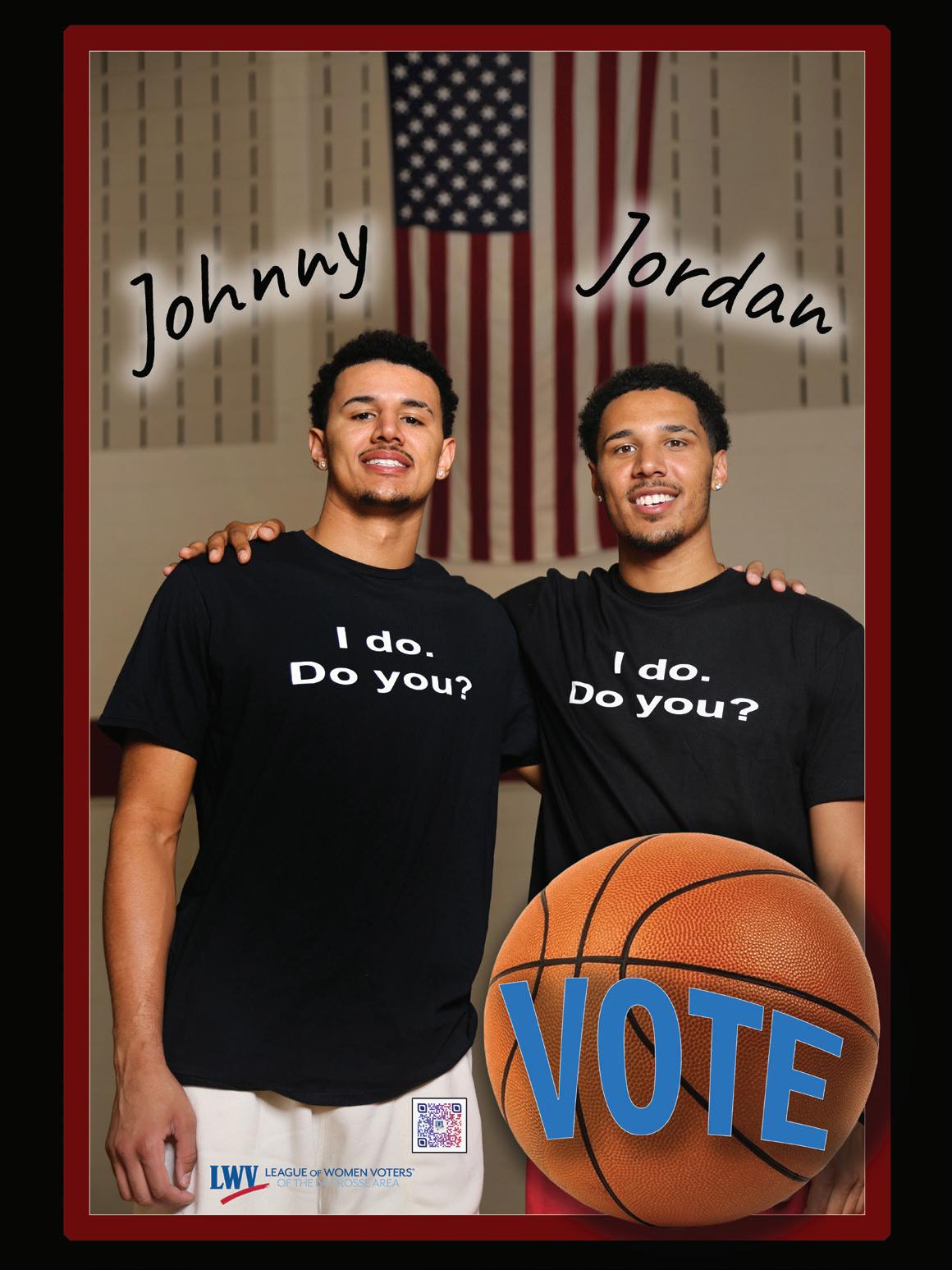
What started as a $300 investment in shelves, trays and seeds to use nutrients and grow plants in a spare bedroom ultimately trans formed into a community space and urban farm, now growing 19 tons of produce annually in Madison.
SuperCharge! Foods on Madison’s East Side is one of the many urban farming initiatives in the area working to propel efforts toward urban agriculture while devel oping community and promoting new sustainable farm ing practices.
SuperCharge!’s farming efforts started in 2009 when owner P.T. Bjerke and his partner wanted to explore their passion for nutrient-dense yet “holistic” foods.
“We started to think, ‘Wouldn’t it be great to not only be able to produce food that is good for giving the nu trition that you need, but it could also feed your psy chological self, your spiritual self, your emotional self,’” Bjerke says. “Those types of things — the entire person — the holistic approach to it.”
The farming initiative started as a grow space in Bjerke’s spare room and expanded into his attic before he eventually tore down his garage and built a green house in his backyard. In 2015, he seized an opportunity to revamp the then-retail and tattoo shop where Super Charge! now thrives.
“I strongly believe in community,” Bjerke says. “That’s why I originally got into this was the idea that we could actually nourish all levels of our community right from our own back door.”
P.T. Bjerke, the own er of SuperCharge! Foods, maintains the 700-foot grow room that cultivates sunflowers, pea shoots, wheatgrass, radish varieties, broccoli, kale, and a variety of other plants and herbs.

SuperCharge! Today
Today, SuperCharge! operates a nearly 700-square-foot grow room that cultivates sunflowers, pea shoots, wheatgrass, radish varieties, broccoli, kale, and various other plants and herbs.
“The food that we grow here — the microgreens — are actually, many of them, a complete food, so sunflow ers and pea shoots are what we start ed growing,” Bjerke says. “Within a few months, we were growing wheat grass as well, and those are three of the most nutrient dense plants that you can ingest.”
SuperCharge!’s aims are not only focused on cultivating holistically nutritional produce, but also on cul tivating a community that reflects the neighborhood in Madison.
The goal was to create a space where people from all walks of life could have accessibe and affordable produce in a place where the com munity comes together, Bjerke says.
Across town, young farmers are working on ways to engage a dif ferent Madison demographic in the community of urban farming — the UW–Madison campus community.
F.H. King: Students for Sustain able Agriculture, a student organi zation that supports tower gardens
on campus, aims to provide access to fresh vegetables and herbs grown in side two of the campus dining halls,
“We want to be able to have this food — this type of food be accessible and affordable for everyone.”
including Gordon’s Dining and Event Center and Four Lakes Market at Dejope Residence Hall.
“One of our big mantras is con necting food, land and the com munity,” says Eren Wolf, a UW–Madison senior who is serving as co-director of the student organiza tion’s urban agriculture initiative this year with fellow senior Marion McK inney. “We do that by sharing food with students, obviously, but also working to bring them to the land, if possible, to get involved in the sys tem in a more personal way.”
The tower gardens, which reach just under 7 feet tall and 3 feet wide, use a water tank with nutrients that filter through the tower to mimic the growing conditions normally pro vided to plants through soil.
“The appeal of a tower garden is that you’re using less space, you’re
optimizing with that vertical build, and it also doesn’t require any soil,” Wolf says.
McKinney and Wolf maintain the tower gardens, which support the growth of lettuce, edible flowers and bok choy.
“The goal is for people and stu dents to go and clip them and eat them ... If you clip them, more shoots will sprout and will continue to grow,” McKinney says. “So that’s ac tually a healthier way for the plants to grow.”

McKinney and Wolf are grateful that groups in Madison facilitate conversations surrounding urban agriculture and bring in community members who do not have access to large-scale farming efforts.
“Even in Madison, there’s a good amount of food deserts in the area,” McKinney says. “So I think urban agriculture has a huge role in our lo cal community, and I’d love for this passion that a lot of people have for it to expand and to populate through out the community.”
Ultimately, McKinney and Wolf are motivated by the excitement and energy moving sustainable and ur ban agriculture efforts forward.
“I hope that this inspires people to look for ways they can have weird stuff growing in their kitchen,” Wolf says. “That would be great.”

Madison: SuperCharge! Foods
SuperCharge! cultivates sunflowers, wheatgrass, pea shoots, radish varieties, broccoli, kale and other plants in its nearly 700-square-foot grow room.
Ripon: Ernessi Farms
Ernessi Farms in Ripon — just southwest of Oshkosh — harvests basil, microgreens, mushrooms and cat grass using hydroponics. Its aim is to grow produce without soil while maximizing their nutrients.
Milwaukee: Hundred Acre Hundred Acre combats food insecurity by growing a variety of greens and vegetables in its 5,000-square-foot controlled growing environment.
Kenosha’s Square Roots farm has the ability to grow over 2.4 million packages of produce each year. The farm produces herbs and salad mixes.
River Falls: Kairos Indoor Agriculture
Kairos Indoor Agriculture in River Falls uses 44 vertical growing systems to grow leafy greens and herbs.
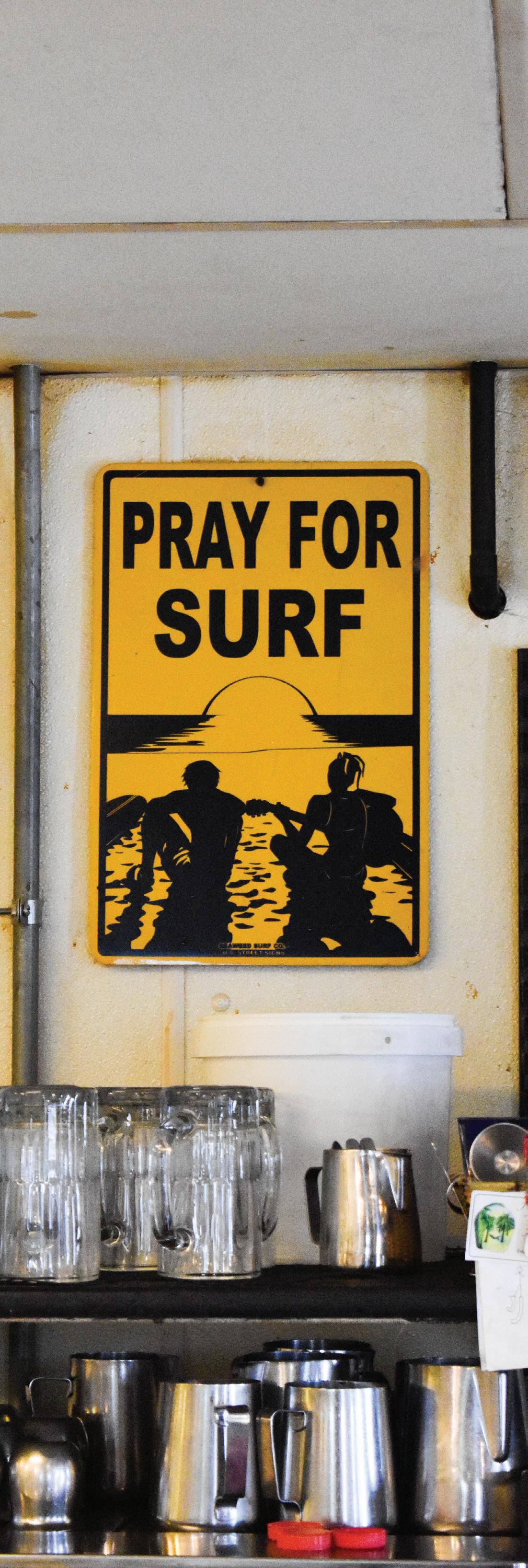
Freezing cold air, warm waters and just the right winds com ing from the north or south, combined with a small city that juts out into Lake Michigan.
It’s the perfect recipe for Great Lakes surfing.
Welcome to Sheboygan, Wiscon sin, the “Malibu of the Midwest,” a term coined by Larry Williams, who was one of the first to bring mainstream surfing to the area.
Since the late 1960s, Sheboygan has grown into a small but nota ble surfing community. Despite the cold air temperatures, the best time to surf the area is in the fall and winter months with popular spots like North Point, which includes a bend known as “The Elbow.”
Sheboygan surfers thrive, even in below freezing temperatures, riding the waves ignites their adrenaline response and gives them a sense of being alive.
The Williams twins, Larry and Lee, got their surfing start in the 1960s. Growing up two blocks away from Lake Michigan, they spent ev ery season near the water and even tually grew curious enough to try surfing for themselves.
Larry and Lee now have wide spread recognition, not only in town, but among other surfers for their influence on the Sheboygan surfing community. The Williams brothers have been featured in books like “Some Like it Cold,” and documentaries like “Unsalted” and “Step into Liquid.”
The Weather Center Cafe — a surfthemed coffee shop in Sheboygan — is a popular spot in the surfing community.
The Future of Sheboygan Surfing John Vallo, a 21-year-old from the Sheboygan area, first heard of surfing in Sheboygan from the 2007 animat ed movie, “Surf’s Up.”
Chicken Joe, a character based on Larry Williams, proudly announces in the film that he learned to surf in the Midwest.
“In Sheboygan when I was first out there, everyone was just excit ed to meet me and wanting to help me out,” Vallo says. “It’s kind of a combination of the Midwest being super friendly and also, just like [surfing’s] not a big thing, but also the more people that get into it, the cooler that is.”
Sheboygan: A Surfing Community EOS Surf Shop, located in down town Sheboygan, has been one of Wisconsin’s primary surf shops since 2004. Offering lessons, win tertime equipment and communi ty support, the shop is a crutch for many surfers in the area.
“There’s always some of us out there willing to give you some tips or whatever, but he’s got to do it,” says Mike Miller, owner of EOS Surf Shop. “You’ve got to be ready for it. And like I said, you gotta be a little bit more committed to be a lake surfer.”
There is an uplifting community surrounding surfing in Sheboygan — unlike the coasts where surfing in the ocean can feel competitive.
“[Great Lakes surfers] are the friendliest surfers on the planet, and I’ve been told that many, many, many times,” Larry Williams says.
PHOTOGRAPHY
It’s loud. It’s noisy. And it’s excit ing. It’s the library.
Meadowridge Library, which is within walking distance from Akira Toki Middle School, is home to af ter-school programs, gaming com puters and rooms for socializing.
For many kids in the surrounding community, it’s the best place to be after school.
On Fridays, the kids who complet ed their reading goal for the week are rewarded with a Get Down party, where they can play video games and use virtual reality equipment. They also receive a warm meal.
As the library supervisor, Yesianne Ramirez-Madera watches the library come alive each afternoon. As the socializing room fills with conversa tion and board game competitions, and the computers are powered up by tweens, Meadowridge Library becomes a hub for community and youth engagement.
“They feel loved and cared for, and we want to create that kind of envi ronment for them,” Ramirez-Made
ra says. “The majority of the staff knows the names of our kiddos here, and we know their troubles and worries.”
Meadowridge Library’s impact on the community is not an excep tion — it’s the standard for librar ies in Wisconsin. Across the state, libraries support the people in their communities by helping them overcome obstacles without barri ers. From resources in housing and health care, to refugee and immi grant services and creative learning programs for court-involved teens, the services libraries offer go well beyond books to provide accessible resources and a thriving sense of connection in their communities.
“I think that the library is one of the last places that people can go and feel welcome and feel like they’re not being judged for going,” says Kristin Wick, the director of public services at the Madison Pub lic Library. “I also think there are a lot of people that come to the library just because they’re kind of isolat
ed. So, whether it’s giving someone the right book at the right time or just being that personal connection, I think there’s a lot of different ways that we can impact the community.”
Within the Madison Public Li brary system, a variety of services focus on different issues within the community. The We Read/Nosotros Leemos program aims to foster a love for reading in all ages, and the Dream Bus, a mobile library where visitors can apply for library cards and check out books, supports this love of reading by making the library and its books more accessible.
Beyond books, the Madison Pub lic Library engages its community through services such as the Teen Bubbler Program, which aims to support “teens who struggle in the traditional classroom or identify as non-learners” by connecting them to local artists and experts.
The Making Justice program, which is part of The Bubbler, con
Along with a diverse selection of books, Meadowridge Library has computers, games and other activities for kids and teens to use. The library also offers unique resources for all ages, including health care assistance and mental wellness workshops.
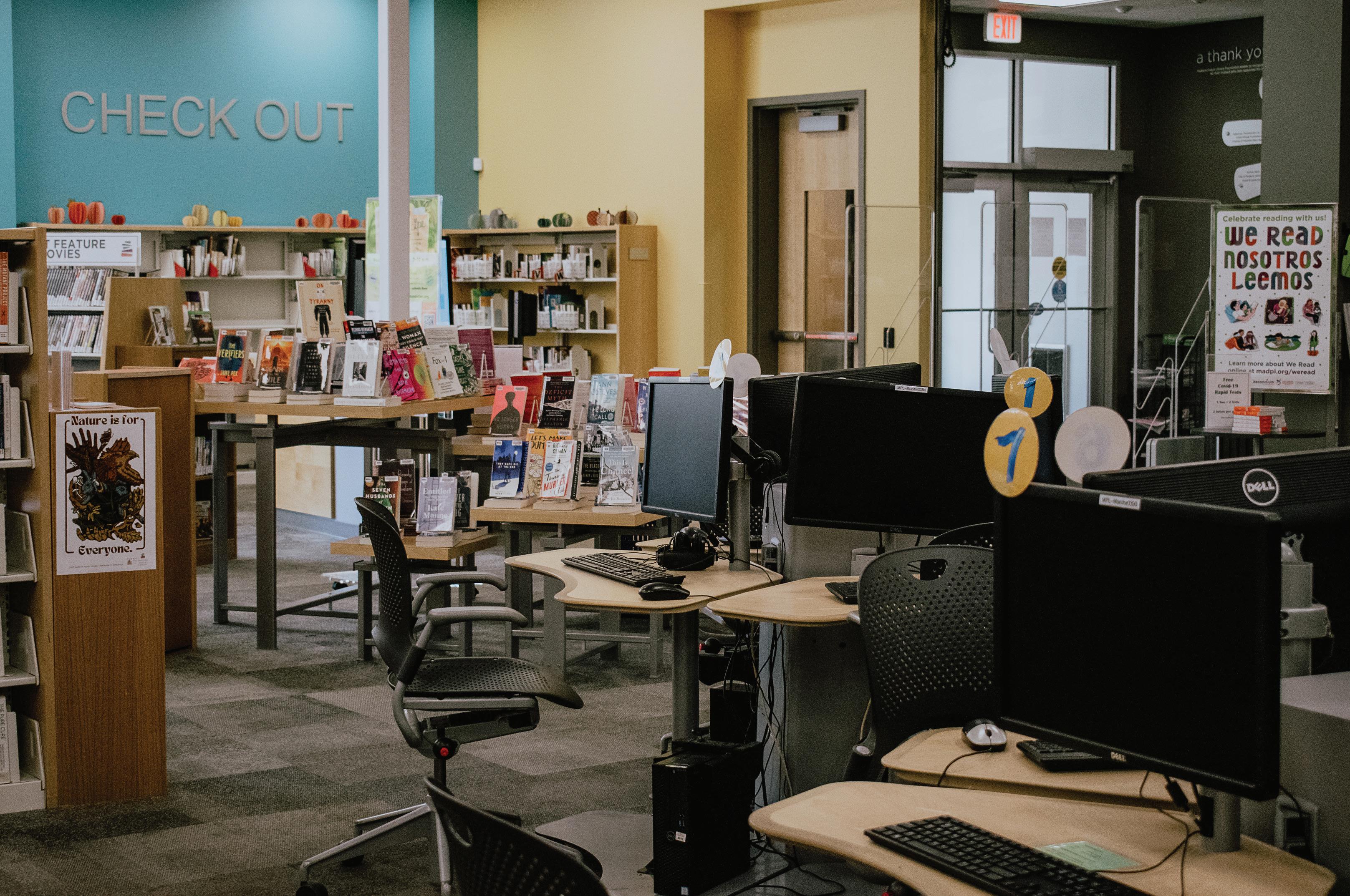
Wisconsin’s libraries provide patrons with accessible resources and a sense of community
nects at-risk and court-involved teens with an artist-in-residence, and fosters relationships while giving them opportunities to create projects such as video game design, podcasts and classroom mixtapes.
The program also holds weekly workshops at the Dane County Ju venile Shelter Home, a temporary living facility for juveniles awaiting court activity, where students can fo cus on a project led by an artist while connecting with program leaders.
Jesse Vieau, a teen services librar ian and project manager for the pro gram, says the goal of these work shops is to encourage conversation and connection.
“[The students] are focusing on some project that can be completed in an hour and a half, while we’re all focused on conversation and build ing them up and learning about the past without bringing out trauma, but also addressing it when it comes up,” he says. “It’s the best day of the week because every little win is big ger than the big losses.”
In Milwaukee, the public library system has made a significant effort to provide resources for refugees and immigrants. At the English Read ing Hour and English Conversa tion Hour, which are held virtually once a week through the Milwaukee Public Library system, participants can practice reading and speaking English in a free, safe environment. At the library’s job literacy class, non-English speakers can acquire cultural knowledge and job vocabu lary that will help them be successful in their job search.
Eric Johnson, a librarian and pro gram coordinator of adult literacy and refugee services at the Milwau kee Public Library, says these ser vices are a response to the increasing requests for education in English as a second language. Through commu nity outreach, Johnson has grown the program, which teaches English and other skills to speakers of other languages including French, Arabic and Rohingya.
“The foundation of what we do here at MPL for refugee and im
migrant services is breaking down walls and going into the communi ty,” Johnson says. “The focus has to be going out to where people are and not just assuming they’ll come in these doors.”
Creating Connections Outreach has been an essential part of Libby Richter’s job as well.
As the first library social worker in Wisconsin, Richter, who works at the L.E. Phillips Memorial Public Li brary in Eau Claire, has worked with library staff in order to make them more trauma informed by teaching them how to recognize signs of trau ma and respond accordingly. In turn, she has been able to take library ser vices one step further.
“I could stand outside the library all I wanted to with a sign that said there’s a social worker here, but un less someone’s actually catching a person in a moment of distress and letting them know about these ser vices, then that’s just another person that they’re gonna have to wait and see,” Richter says.
At her library, Richter provides free and confidential social work ser vices and referrals for issues such as mental health, substance abuse and parenting. However, she says the number one issue that she helps peo ple with is housing.
“It’s how to navigate a system where you have a very low income and all of the rent is extremely high and people are being discriminated against because of records or lack of history or credit or whatever else is going on and how to move through that,” Richter says.

In other areas of the library, Rich ter is looking to fill in gaps and meet the needs of the community. One way she’s doing this is by expand ing the tangible resources that the library can provide. In an effort to expand what she calls the “Library of Things,” Richter and the L.E. Phil lips Memorial Public Library have created kits that community mem bers can check out to explore new resources that go beyond books.
“Let’s not just think of librar ies as books and DVDs and things like that. It’s wellness, it’s getting to
explore new things,” Richter says. “These kits can be things like ro bots, but they can also be things like a meditation kit or a kit of sensory items ... It’s just all about reimagining what services we can have here, and that is the community’s living room, right? It’s a place to live, it’s a place to connect, have fun and grow.”
The “Library of Things” concept is present at Meadowridge Library as well, where a seed library encour ages community members to grow native prairie plants at home, and a large selection of diapers in every size are available for those in need to take home.
“Libraries are powerful,” RamirezMadera says. “They’re just a vital place in the community that en hances the quality of life overall, and also they can be fun. It is a place that if you need information on how to have fun, just come to the library! We’ll help you with that.”
Mandi Jacquinot runs an average of seven miles a day, logging 50 miles a week. A sunny day on the Rountree Branch Trail in Platteville gave her a break from her usual treadmill runs.
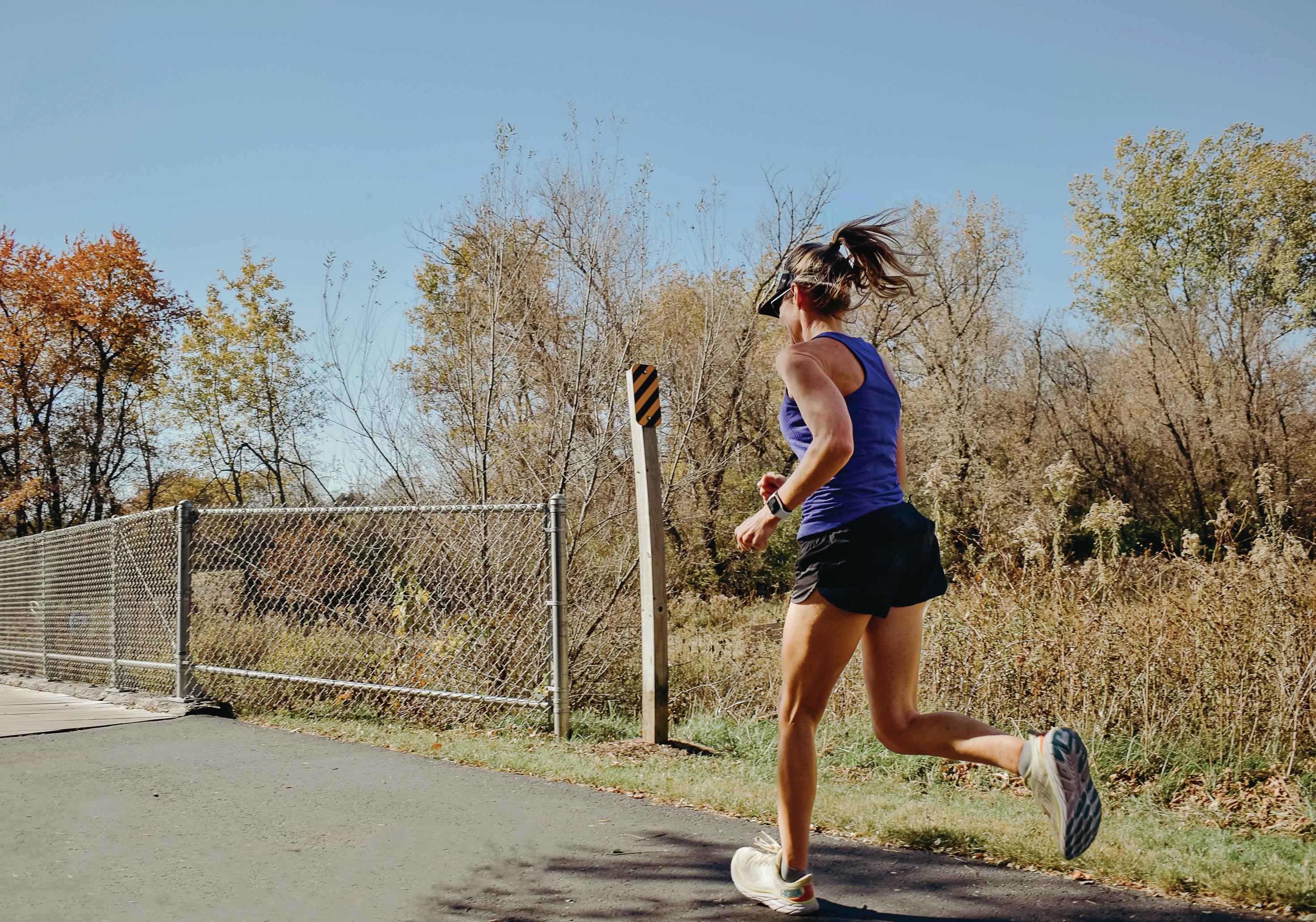
After two decades of contin uous workouts, three kids and running a business with her husband, Mandi Jacquinot knows something about time man agement and motivation.
“I’m almost always doing some thing I probably have some difficul ty relaxing. It’s not my forte,” Mandi says as she works toward her goal of completing a marathon in ev ery state and making it to the Kona Ironman World Championships.
To most, Mandi is a superwom an. To Mandi, she’s just a regular person making time for the things she loves most. Exercising, in any amount she has time for, is what makes her feel alive.
She picked up jogging while in college, but soon found herself wanting to complete a marathon, which she did at age 23. “After that, I tried to do a marathon a year,” Mandi says.
Mandi’s husband, Joe, is also a marathon runner, and their love for endurance and extreme fitness is something they’ve been able to share over their 17-year-long mar riage. The couple moved to south western Platteville in 2009, where
they started a dental practice and had their second child all in the same week. A team in marriage and business, Joe works on people’s teeth while Mandi runs the practice behind the scenes.
Mandi, wanting a challenge out side of marathons, competed in her first half Ironman in 2011. She then spent the next few years competing in half Ironmans and marathons across the country.
Then, in 2014, Mandi hit a busy point in her life. Her family was liv ing with Joe’s parents as they built a new house, and she became preg nant with her youngest, but that wasn’t going to stop her. She went on to train for her first full Ironman while pregnant and competed in it just months after giving birth.
“That turned out to be a great race,” Mandi says. She attributes her success to how well she trained for it. “I would get babysitters, and I would just work out the whole time, like a five-hour bike followed by an hour run.”
Mandi thinks of herself as the En ergizer Bunny. “For me, I’m built for doing this type of racing, where it’s just long and steady,” Mandi says,
but she acknowledges this extreme hobby of hers is time consuming with an already busy schedule. “I just know myself, and I know that I need to work out every day to make me feel happy.”
Mandi prioritizes taking care of her three kids and running the den tal practice with Joe but says we all need to make time in our lives for the things that bring us joy.
“If I can’t make an hour out of the day for myself, something’s wrong,” Mandi says. For her, exercising is what relaxes her. Joe often coaxes Mandi into a run when it looks like she’s getting stressed out.
“What’s interesting, and maybe most inspirational, is her positive attitude all the time,” Joe says. “I feel like when I work out too much, I hit gravity. And when she doesn’t get a workout in, she’s crabby.”
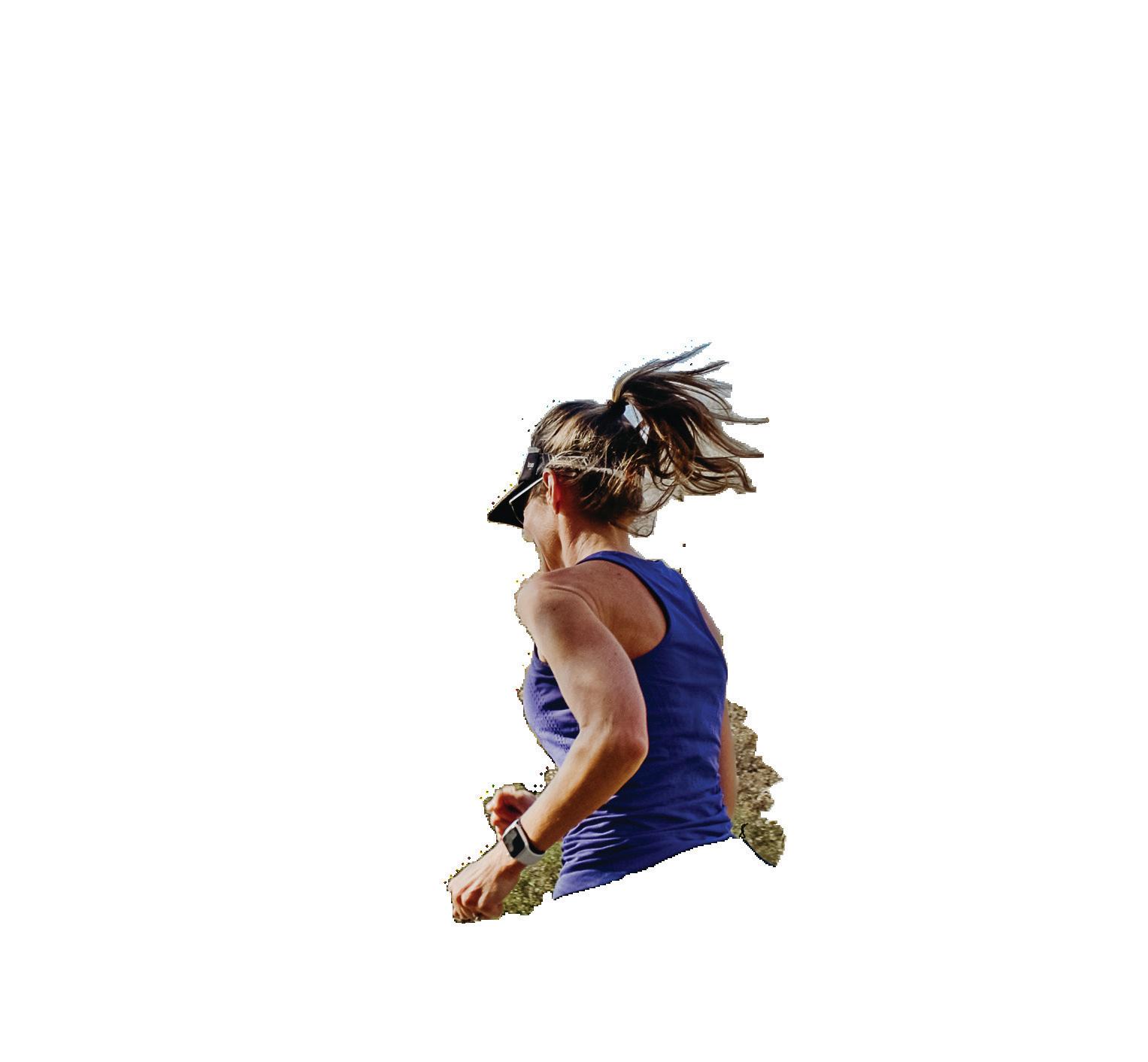
Mandi hopes to pass her motiva tion and work ethic to her kids by leading by example. She also stress es that what she’s doing isn’t special.
“I think people don’t always un derstand what they’re capable of doing. I’m just a normal person with three kids and a job,” Mandi says. “If I can do it, you can do it.”
Nearly 10,000 years ago, the southwestern corner of Wis consin went untouched by glaciers. In turn came its recogniz able name: the Driftless Area.
Its distinctive terrain is filled with carved bluffs, rolling hills and nu merous river valleys across more than 24,000 square miles. However, the real story of the Driftless Area can be told by the people who live there. Locals contribute to their small communities with remark able drive, creating prosperous businesses in the heart of their homeland. Understanding their endurance unravels the true heart beat of an often forgotten area of the state. It explores the raw, human narrative of the perseverance and sentiment that locals have for the place they call home.
Nestled beneath the bluffs in the Upper Mississippi River Basin, Pier 4 Cafe sits quietly along the river in Alma. The bright red building is hard to miss. It was exactly this charm that drew Elizabeth Walker to Pier 4 Cafe. She, along with her husband and two daughters, de cided to purchase the restaurant in April 2020 — in the middle of the coronavirus pandemic.
“We’re like, let’s take the plunge!” Walker says. “It was trial and er ror the first year and you know, it’s been really well. The hardest part, of course, is your staffing.”
The town of nearly 700 is locat
ed on the Great River Road which draws in tourists from around the country who come to see its breath taking views of the Mississippi Riv er Valley. The town is most popu lar in the summer months, which leaves locals to struggle when the tourists disappear.
“We’re going on our third win ter, and people still don’t know that we’re open all winter,” Walker says. “It’s blood, sweat and tears, and you just hope and pray that your locals will support you.”
Despite its slight population, Walker has learned throughout the years just how resilient her com munity is. Supporting the small businesses in Alma is what keeps it alive, she says.

“The locals, they understand,” she says. “You know, tourists come in and they don’t care what a cup of coffee or a steak dinner costs. But the locals are the ones that
we’re trying to keep the costs low enough so they will come.”
That vibrant spirit and support is what keeps Alma on the map.
“How many times do you get to sit at a table and have a train drive by?” Walker says. “They thrive and love that like they’re little kids. Ev erybody just loves coming to Alma because everybody is so nice.”
For the past 52 years, Janet Er schen dedicated her life to what she loves most: her family, her home town and flowers.
In 1970, Janet and her husband, John, started Erschen’s Florist after one of their daughters expressed in terest in the craft. They began the small business in the basement of their family home, with eight chil dren to fill the space.
The business quickly expanded into a larger commercial space in the heart of their hometown. Work began to pick up, and although Er schen was overjoyed, she struggled.
“When we first opened, people just did not pay their bills. Then I had all the kids at home,” Erschen says. “It was a hard time. On my breaks, I would go in the bathrooms and say a novena. Just so people would pay their bills.”
Days were filled with hard work and long hours. Erschen and her husband had a small staff but main ly relied on one another to get through each day, sometimes deliv ering the flowers themselves.
Despite numerous hardships, Erschen’s Florist prevailed and has
It’s hard to miss Pier 4 Cafe’s distinct red flair, which captures travelers’ attention as they travel down the Wisconsin Great River Road.
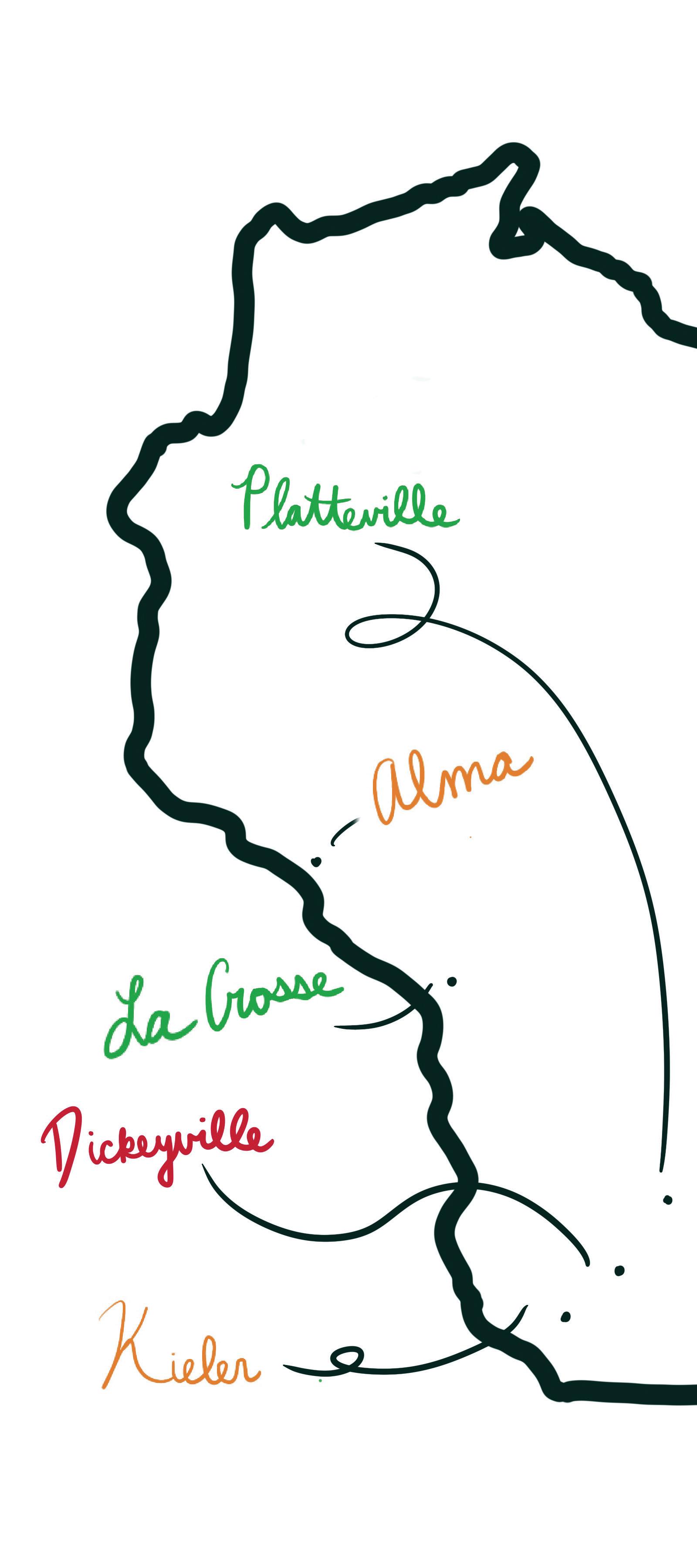
This scenic river town is stocked with a variety of activities to enjoy all year long. Stroll down Main Street to enjoy 16 galleries and shops as well as a number of area museums. The Great Alma Fishing Float hosts fishing lovers from early spring to Halloween weekend, and Buena Vista Park has incredible views of the Mississippi River Valley.
This bustling city is filled with spectacular views of the Mississippi River, including the signature sight on top of Grandad Bluff. The downtown district is filled with regional culinary delights and an active nightlife.
Located 10 miles from Dubuque, Iowa, Dickeyville is set in the rolling hills of America’s Dairyland. Mustsee area attractions include the famous Dickeyville Grotto, a beautiful structure filled with stone, motor and bright-colored objects collected from all over the world.
Platteville is nestled in Grant County along U.S. Highway 151. Local biking and hiking trails are open year round to the public, and the community market supports local businesses in both the summer and winter seasons. Be sure to stop at the world’s largest “M” — an iconic symbol of the mining tradition and history of the town.
The community of Kieler can be described in three words: small but mighty! Looking for the “best pizza in downtown Kieler”? Head to locally owned Gooch’s Greenhouse. Across the road you’ll find Jamestown Park, which has a number of playgrounds and softball fields for people of all ages to enjoy. Head to the Kieler Mall for a bite to eat and meet the neighbors from right down the street.
170 miles of scenery, eats and finds in the Driftless
brought decades of joy to Grant County. Erschen’s daughter and her husband now own and operate the company, including a second shop located in Platteville. Howev er, 81-year-old Erschen continues to work weekends in the original Dickeyville shop.
“It’s a fun and joyous vocation,” Erschen says. “Working with flow ers... you make people happy.”
Lavon Heinricy, a part-time worker at Erschen’s, has dealt with an array of emotions that come with working in the profession.
“You might get someone walk ing in here one day that’s just over joyed because they just got a new grandbaby,” he says. “Then the next day you’ll have a husband coming in, and he wants flowers for his wife because his wife is fighting cancer.”
“My husband used to tell me all the time, ‘This should have not been a flower shop. It should have been a guidance, counseling service for people,’” Erschen says.
Going on its fifth decade, Er schen’s Florist is a true testament to the value of hard work, sacrifice and hope. The shop represents more to the community than a place to sim ply purchase fresh flowers — it’s a place to connect and remember what matters most.
“This morning, the first customer I had said, ‘I am so grateful that you are still here,’” Erschen says. “They appreciate us here yet.”
Corey Kaiser always knew he loved the state of Wisconsin. Grow ing up in Kieler, an unincorporated town in the far southwestern cor ner of the state, he learned to ap preciate the unique features of his hometown — from the simplicity of privacy to the comfort of knowing everyone in town.
In his final year at UW-Platteville, Kaiser discovered that he wasn’t the only one who felt this way: People loved Wisconsin, and they wanted to show it.
“I just knew that there was a mar ket for people that for one, love the state as much as I do and that didn’t want to break the bank trying to

buy clothes for them and their fam ily,” Kaiser says.
Kaiser began the608 in 2018 and rebranded to Wisconsin Clothing Company in 2021. The brand cre ates high-quality clothing that is tailored to telling the unique story of Wisconsin — from its unincor porated villages to its largest cities.
“People are going to talk about it if they have nice clothes,” Kai ser says. “You want people to wear it and be proud to be a part of the small community that we have.”
Through trial and error, Kai ser exponentially grew Wisconsin Clothing Company’s reach. Social media has played an extensive role, with its total number of followers surpassing 50,000 across TikTok, Instagram, Facebook and YouTube.
“You know, it’s like a puzzle. It’s like, you finally figure out where the last piece goes, so it’s definitely been a journey,” Kaiser says.
Running a small business isn’t easy, and Kaiser finds himself doing most of the work behind the scenes. However, when situations become stressful or difficult, he remembers the reason why he started in the first place: to show his love and appreci ation of his hometown.
“When we first started, they’re the ones who were buying the clothes and just supporting what I’m trying to do,” he says. “Without that, we’d probably be done.”
“I always feel like it’s crazy that people give it such a bad rap, like if people don’t leave their town where they grew up. Some people don’t have to. Some people kind of find what they need and what they want right in their hometown.”
“You want people to wear it and be proud to be a part of the small community that we have.”BY THOMAS HILL ILLUSTRATION

On a sunlit fall day in Fitch burg’s Gunflint Trail Park, upward of two dozen ath letes stand in two distinct, tight-knit huddles discussing final prepara tions for their championship game.
As the clock strikes 12:10 p.m., both teams break from their hud dles and take to the field. Or, more correctly, one team takes to the field. The other sends only two bats men to the center of the pitch, each wielding wide, flat wooden bats.
The Madison Cricket Association final is about to begin.
“Cricket is everything for us,” says Dax Patel, a batsman for Patidar 11.
Patidar 11 is one of the two teams competing in this season’s final. Pa tel chats and explains both the game of cricket and how Madison’s crick et community operates.
“We grew up together, and we used to meet up here and there and play,” Patel says. “They spread the word around like, ‘Hey, there’s a cricket game going on’ They come to watch, and if they’re interested they obviously join the different teams here.”
While Patel speaks casually about the team coming together, what he fails to properly emphasize is how committed he and his teammates are to the game. While a majority of Patidar 11’s roster comes from the Madison area, many commute each weekend from of Iowa to compete in the Madison Cricket Association.
“So me, the player who’s bowl ing right now, the guy who was just
able to [stop] the ball from hitting the four. That one — the one in the back? We are coming together from Iowa, three hours away,” Pa tel says.
While for most it’s hard to imag ine traveling upward of three hours to attend or even play in a recreational sportting event, for members of the Madison Cricket Association, it’s more or less the norm. Patel talks about another team, composed mostly of hotel owners who travel more than four hours on weekends just to play in the league.
Community drives this loyalty and commitment to what is a rec reational sport for its players.
“Cricket brings you huge circles [of friends],” says Akash Shakuna la, who came to the U.S. to obtain his masters degree at Rutgers Uni versity in New Jersey 10 years ago. “They bring all the families to gether, so even [outside] of cricket we have gatherings. All the wives or partners of players are friends now, the kids are friends now. It becomes a huge community.”
This sense of community and relationship seems to be the over whelming theme of the day. Recre ational sports may offer residents a chance to stay in shape, make a few friends and play a sport they enjoy — but for this community of cricketers, it’s about much more. Cricket not only provides them a sport, but it gives them a commu nity away from home.
Agenre born out of the dol drums of the dying days of disco, electronic dance mu sic emerged in the Badger State in the 1990s. In October 1992, more than 1,000 music fans were arrested at a rave in Milwaukee’s Historic Third Ward, thrusting the music scene into a negative limelight.
With Wisconsin media pushing the narrative of a genre hampered by drug use and unsafe venues, elec tronic music was forced to find its way underground.
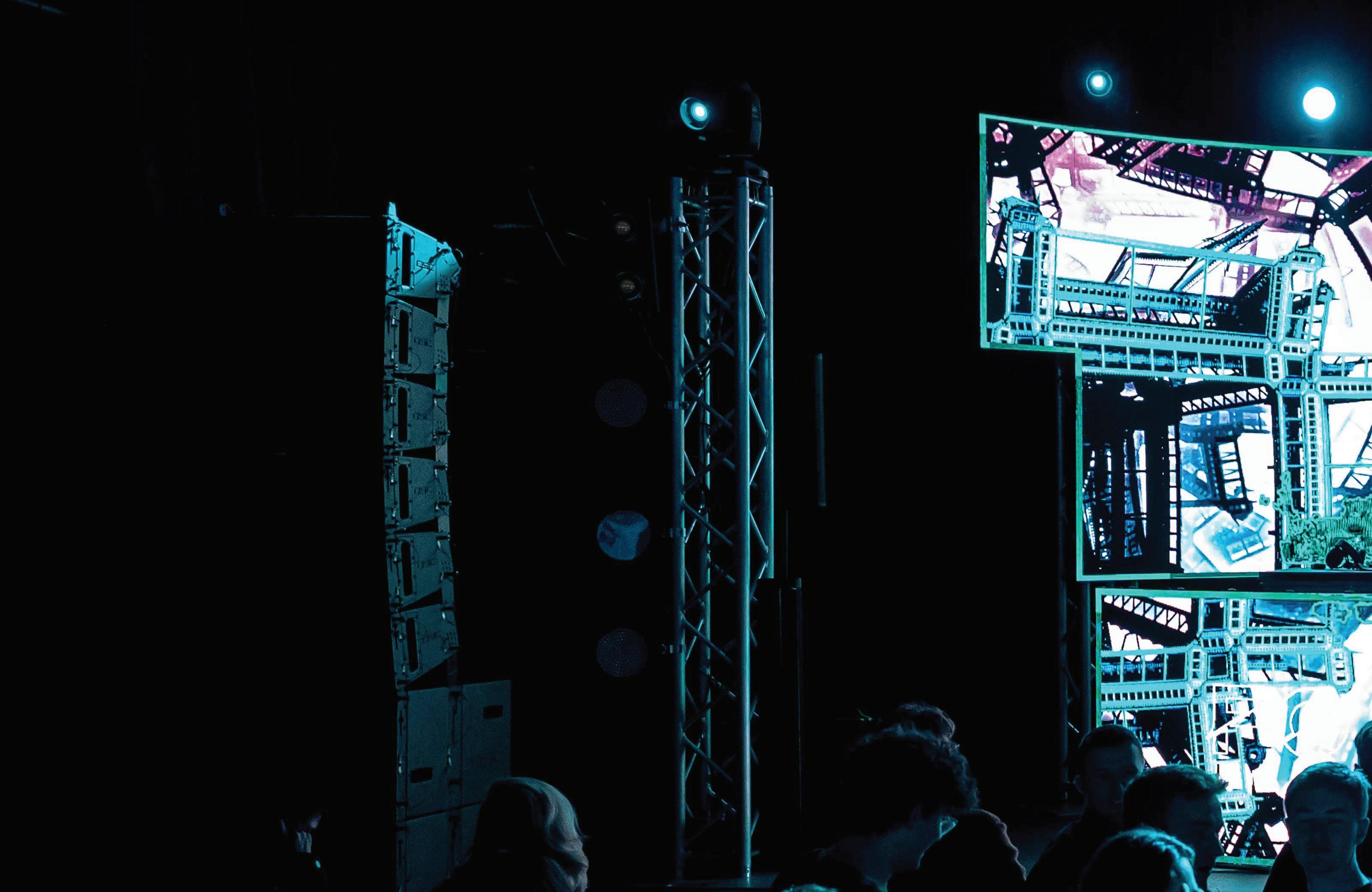
Not anymore.
Electronic music became one of the largest genres in the state, bring ing head-numbing bass, blissful tre ble melodies and bright lights to ven ues. However, more important than the music itself is the community it brings along with it — a shared spirit championing inclusivity and inno vation. The culture of EDM in Wis consin is on the pulse of something greater than it could have ever imag ined — a cultural renaissance.
For Josh Hietpas, a DJ and talent booker at The LED Room in Apple ton, the world of electronic music is a family affair. As the son of two wedding DJs, Josh remembers when his parents first exposed him to elec tronic music nearly a quarter of a century ago.
“Back in like 1997, [my dad] used to cruise us around,” he says. “He would get off work at 12 o’clock, and we would cruise around Appleton.”
Those late night drives introduced Hietpas to EDM and now, 25 years later, he hits the decks regularly. He performs under the stage name DJ YARSH, and is often joined by the very man who first got him interest ed in the genre — his father.
“He’s been going to shows with me now since 2011,” Hieptas says. “He went to my first EDM show with me, not as a guardian or like a supervisor or anything. He’s like, ‘I want to go.’ And so it was right around when we first started DJing [together].”
A prior fan of the genre because of his discovery of artists such as dead mau5, Porter Robinson and Skrillex on iTunes, Ross Rautmann saw an advertisement for the Playstation video game DJ Hero and immedi ately bought it. As he started to play through the stages, his intrigue in the genre grew.
From that day forward, he was hooked, determined to make a path for himself within the genre.
“I wanted to start making my own music, so I began to teach myself through YouTube tutorials,” he says. “I’ve been going steady ever since!”
After attending his first concert in Milwaukee, Rautmann was de termined to perform live. That de termination would end up paying off sooner rather than later, through his concept of “dry nights” (shows without alcohol that are accessible to individuals of all ages) emerging as a recurring show in the Appleton music scene.
“Me and a few close friends made up a DJ trio and began throwing teen dry nights at a local nightclub in Ap pleton while we were in high school,” Rautmann says.
When Riley Gasiorowski first attended a show at Segredo (now Liquid) almost a decade ago in Mad ison, the standard show format was far different than it is now.
“The space was operating a little bit more as a dance club,” he says. “It’d be one [little-known] DJ all night, and folks would come out to party and dance. We weren’t doing nearly as many big shows.”
At the time, Gasiorowski was a UW–Madison sophomore working as a show technician at the venue.
“As we tried to pivot more towards ... a hard ticket room, we wanted to focus less on being a dance club and more on being a proper music venue, even though we do focus and specialize in EDM,” he says.
Since the pivot, Liquid has become a huge hit in southern Wisconsin. Liquid’s true strong suit, however, is not the large acts that have per formed on its stage or its status as a leader of the EDM scene. Instead, its success is due to its impact on young DJs. Through its DJ Summit series, Liquid has given independent upand-coming DJs a platform to show case their skills.
After going to Electric Forest, Claire DeRosa knew she was des tined to run the decks on her own, and taught herself how to DJ.
By the end of 2019, DeRosa be came the president of the Society of Professional Disc Jockeys, the resi dent DJ club at UW–Madison. She became a regular at local Madison venues, performing under the stage name Clur. Now a four-year veteran of the EDM club scene, DeRosa sees the good and bad that EDM offers.
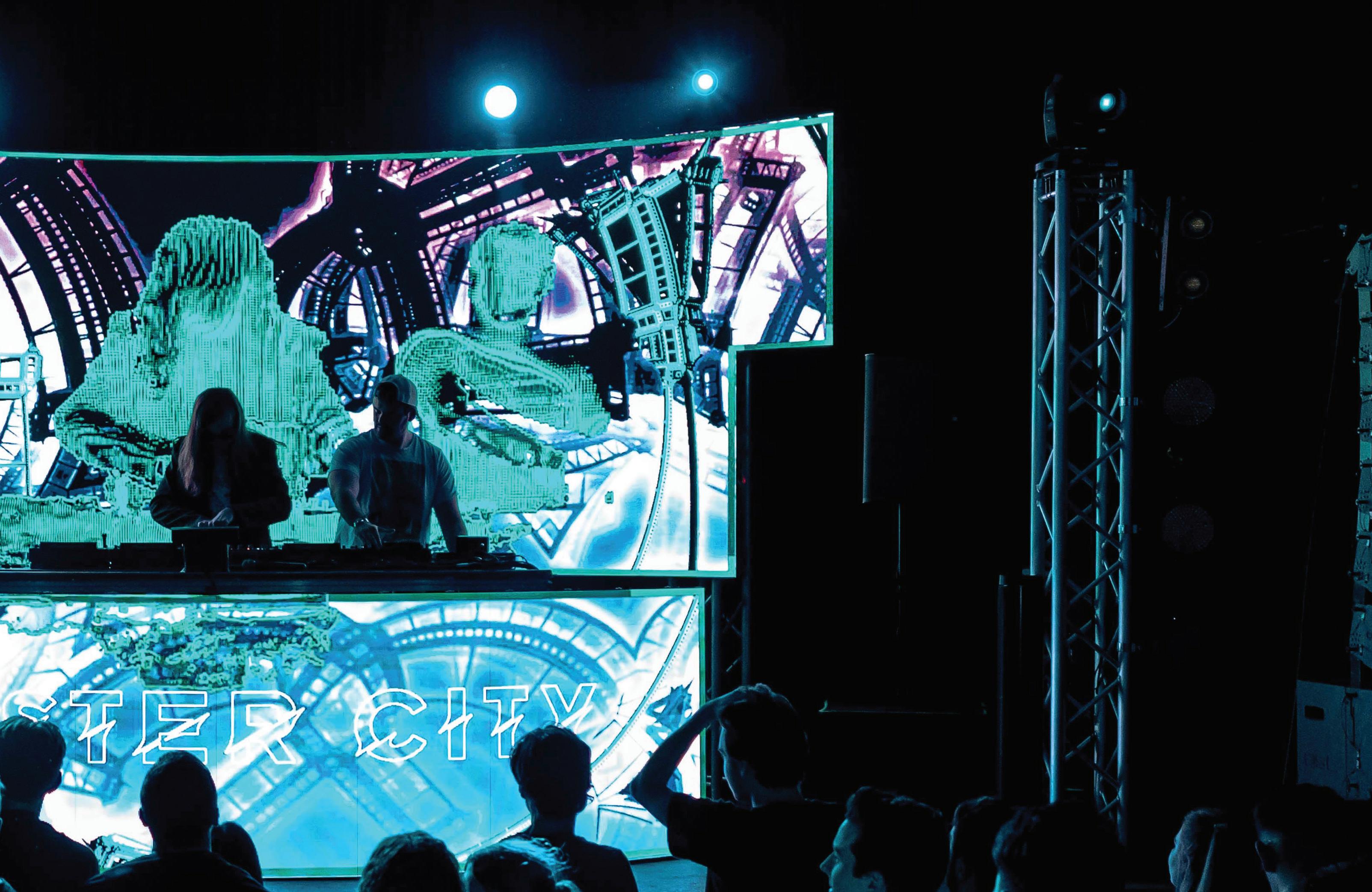
As a female artist in a male-dom
inated genre, DeRosa has faced nu merous sexist stereotypes since her debut, with a good amount of said biases present during the gig-book ing phase throughout both Wiscon sin and Illinois.
“Often I see women getting booked for tokenist gigs like ‘Pussy Riot’ or a ‘Fight for Our Rights: Roe v. Wade’ gig when those same venues won’t book them as openers for big headliners,” she says.
However, DeRosa does foresee a way to break down these sexist walls — and it starts with the next genera tion of talent.
“If you have resources available to help women learn how to use these softwares and tools, there will hopefully be more women taking up DJing,” DeRosa says.
DJ Mercury (Hunter Glassford) and Foster City (Matt Blaustein, Curb Multimedia Producer) perform for the crowd at Liquid in Madison.In June, Steffi Thiem found out she is pregnant with her fourth child, a baby girl due in March.
There was once a time when Thiem and her younger sister, Cas si Oshefsky, thought they may never have children at all.
These two women would not be where they are today without life-changing care from creative doc tors who strive to keep their patients’ hearts in good hands.
Fourteen years ago, Thiem, then 17 and living in the family’s home town of Luxemberg, near Green Bay, went to the doctor for what she thought would be a normal checkup. There, her doctor discovered that she had the same heart defect her younger sister, Oshefsky, was diag
nosed with when she was born.
“I always felt really bad for [Cas si] because she had to go to all these checkups and worry about overdo ing it in sports and stuff, and it hon estly never crossed my mind that it could happen to me,” Thiem says.
This heart condition is called a bicuspid aortic valve. A typical aortic valve is meant to have three leaflets, which Thiem compares to the Mercedes-Benz emblem. Thiem and Oshefksy instead have a genetic condition where two of those three leaflets are fused. Because the heart is forced to work extra hard, those affected run the risk of their valve becoming too tight or too leaky.
The condition impacted the sis ters’ lives in completely different ways, but they agree that it fostered their special bond.
Four years after Thiem’s diagnosis, she went in for a routine visit with her cardiologist who noticed that her valve looked enlarged. Thiem found out she would need valve-replace ment surgery just two weeks later.
“It was a shock that you would go in for these checkups every year and you never thought you were gonna be told you had to have the surgery, so it was very overwhelming and scary,” Thiem says.
Oshefsky remembers Thiem’s strength, which helped Oshefsky get through her own procedure shortly after that.
“When [Steffi was diagnosed], she had such a short period of time that she thought about it before getting the surgery, whereas I had a full 18 years of going to all those appoint
Steffi Thiem, featured here with her family, and her younger sister, Cassi Oshefsky, share a heart condition that could have prevented them from having children, but doctors at Froedtert & Medical College of Wisconsin helped them treat it.
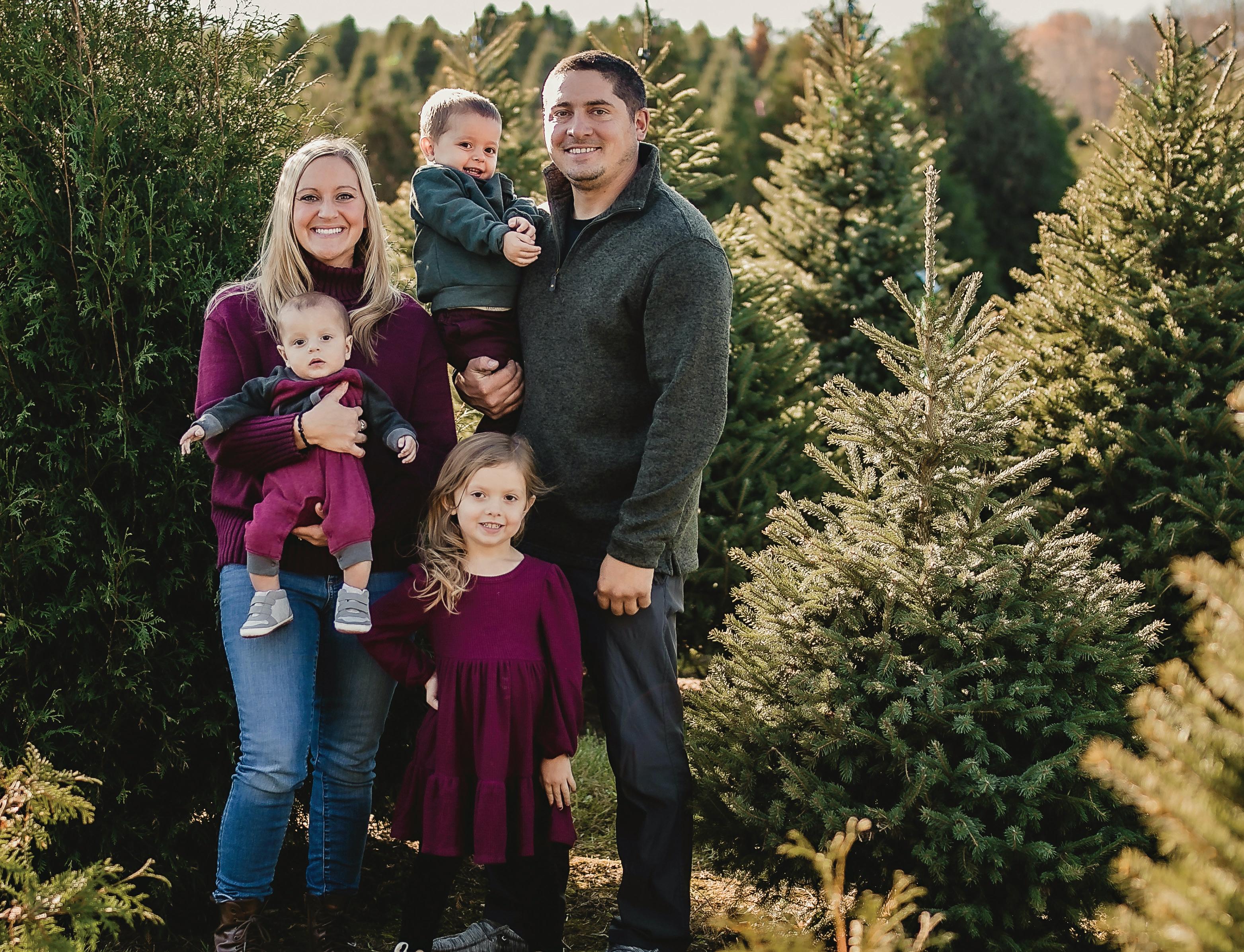
ments and meeting with the cardiol ogist,” Oshefsky says.
Oshefsky says it took time before the reality set in that she would even tually need surgery — a procedure that inspired her career as a licensed practical nurse.
The sisters made the difficult deci sion to replace their bicuspid aortic valves with mechanical ones rather than the alternative: pig valves that often need replacement within 5-to10 years.
“At that time, it was like 2008 ... they didn’t know if you could even have kids with the mechanical valve,” Thiem says. “ ... it was so emotional trying to decide what to do because a pig valve doesn’t last forever.”
But at 21 years old, having chil dren still felt a long way off.
The sisters once believed they may never safely have kids, but that changed five years ago when Oshef sky found out she was pregnant with her oldest daughter, Aubrey.
Oshefsky’s doctor referred her to the Froedtert & Medical College of Wisconsin Heart Disease in Preg nancy Program in Milwaukee, co-di rected by heart specialist Dr. Scott Cohen and maternal fetal medicine specialist Dr. Meredith Cruz.
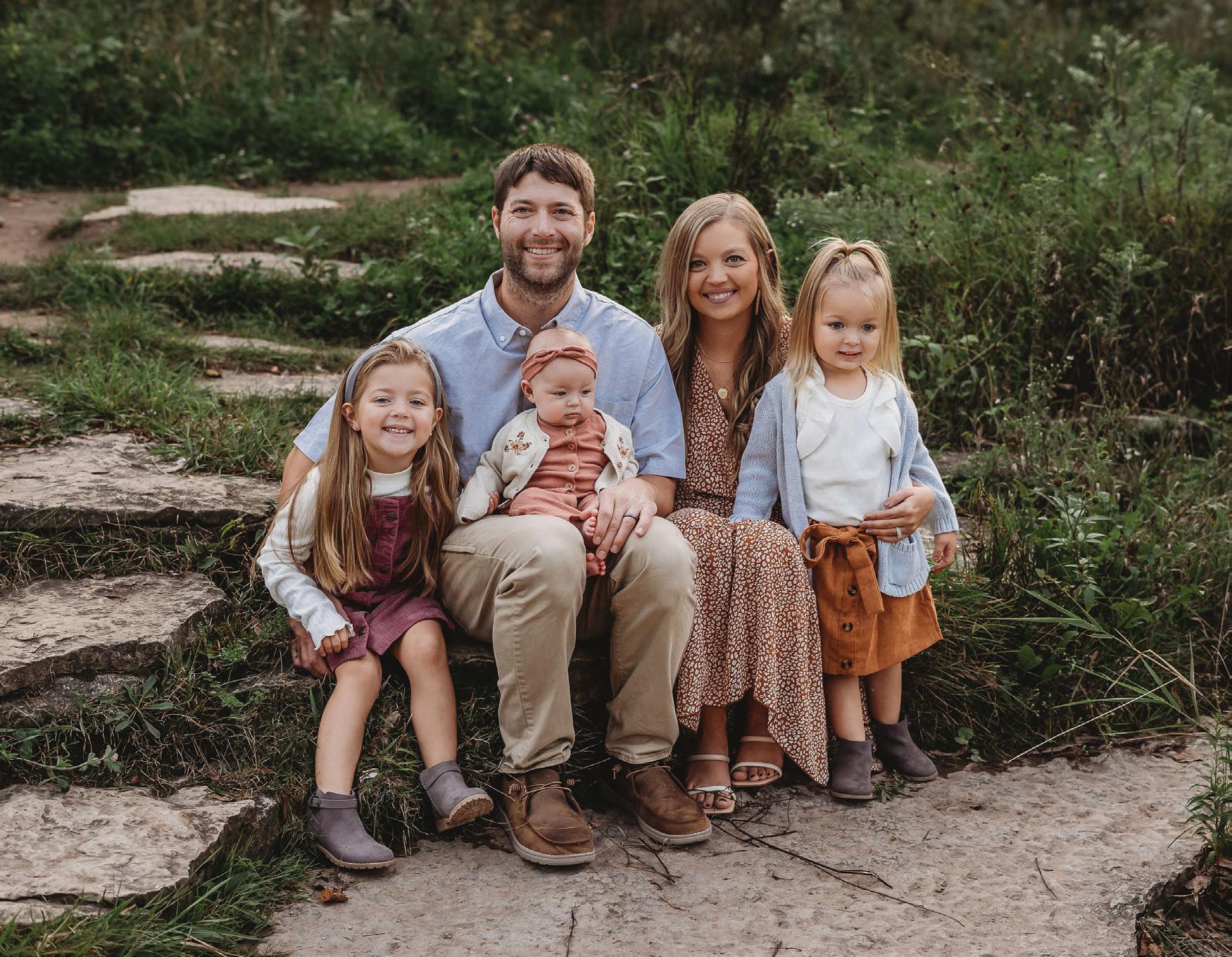
Cohen says they designed the pro gram in 2016 knowing women born with congenital heart disease are living into childbearing years, and heart disease may put them at risk during pregnancy. Before the pro gram started, he says he remembers a handful of times when patients’ and their mothers’ jaws dropped at the news that they could safely carry out pregnancy with the right care.
“It takes us talking as a group in the same room to come up with a comprehensive delivery plan to keep these patients safe,” Cruz says.
Two months after Oshefsky found out that she was pregnant, Thiem also discovered she was expecting her first child, beginning the sisters’ shared, ongoing journey with Froed tert. Both sisters developed a close relationship with their team of doc tors amid unknowns and nerves.
“Each time [we deliver with
Froedtert], it’s gotten a little less nerve-wracking and scary ... I mean it’s still childbirth and anything can happen, but it’s nice to know what we’re in for going [to Froedtert],” Thiem says. “A lot of times when I go down there, and my sister as well, we have a lot of the same nurses which is really fun to know someone who remembers your name.”
Oshefsky says Cruz keeps up a strong relationship with her family and reaches out often.
“It’s super rewarding to work with patients like Cassi and Steffi because they come back to us with all of their future pregnancies, so you know they trust us, and it’s super reward ing to be part of that journey with them — to be able to have children and keep them safe at the same time,” Cruz says.
Because Oshefsky and Thiem’s condition is genetic, Cohen says his team conducted fetal echocar diograms on each of their babies at around 20 weeks. Although bicuspid aortic valves are the most common type of congenital heart disease, he says they are extremely hard to catch before babies are born.
Thiem says the moment she found out her son Cole had the same heart condition is one she will never forget.
She felt connected with her mother who has supported the sisters every step of the way.
“I’m happy I can be there for [Cole] because I’ve been through it all,” Thiem says. “I feel like I have a really special bond with him.”
Today, the sisters don’t just share a congenital heart defect, but they also share the experience of motherhood. Their first daughters were born two months apart, and each sister had two more children while Steffi awaits her fourth’s arrival.
Thiem says the sisters’ experience watching their children grow up to gether is indescribable. Their bond grows through a mutual understand ing of what it is like to have anxieties about their hearts as they care for their children.
Thiem says she is eternally grateful for the doctors and staff at Froedtert who helped her and Oshefsky get to where they are today. She cannot imagine her life without their beau tiful, growing family.
“It’s almost shocking that we’re having a fourth child, but we have so much trust in the doctors and the team at Froedtert,” Thiem says. “I’m not scared.”
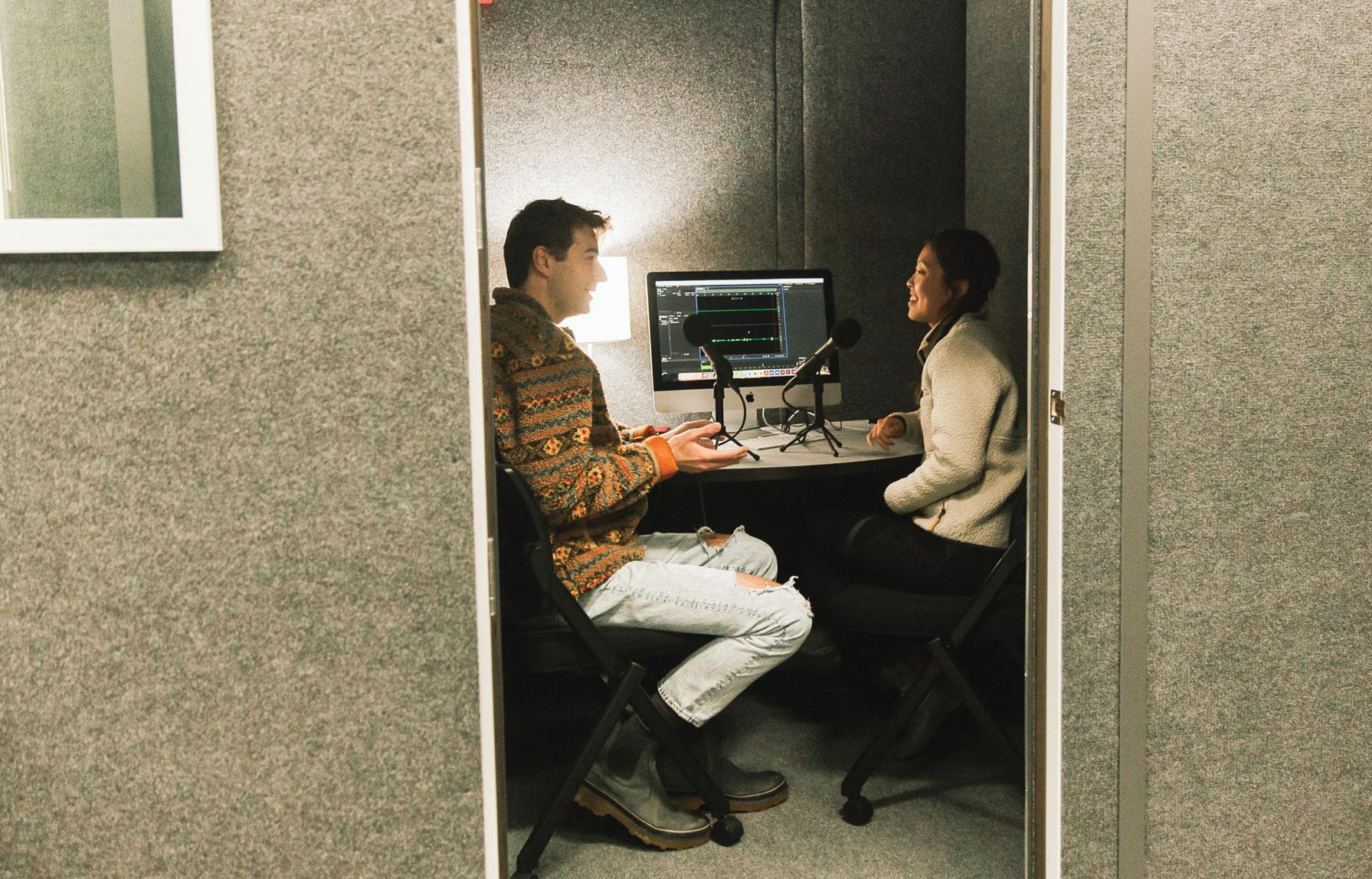

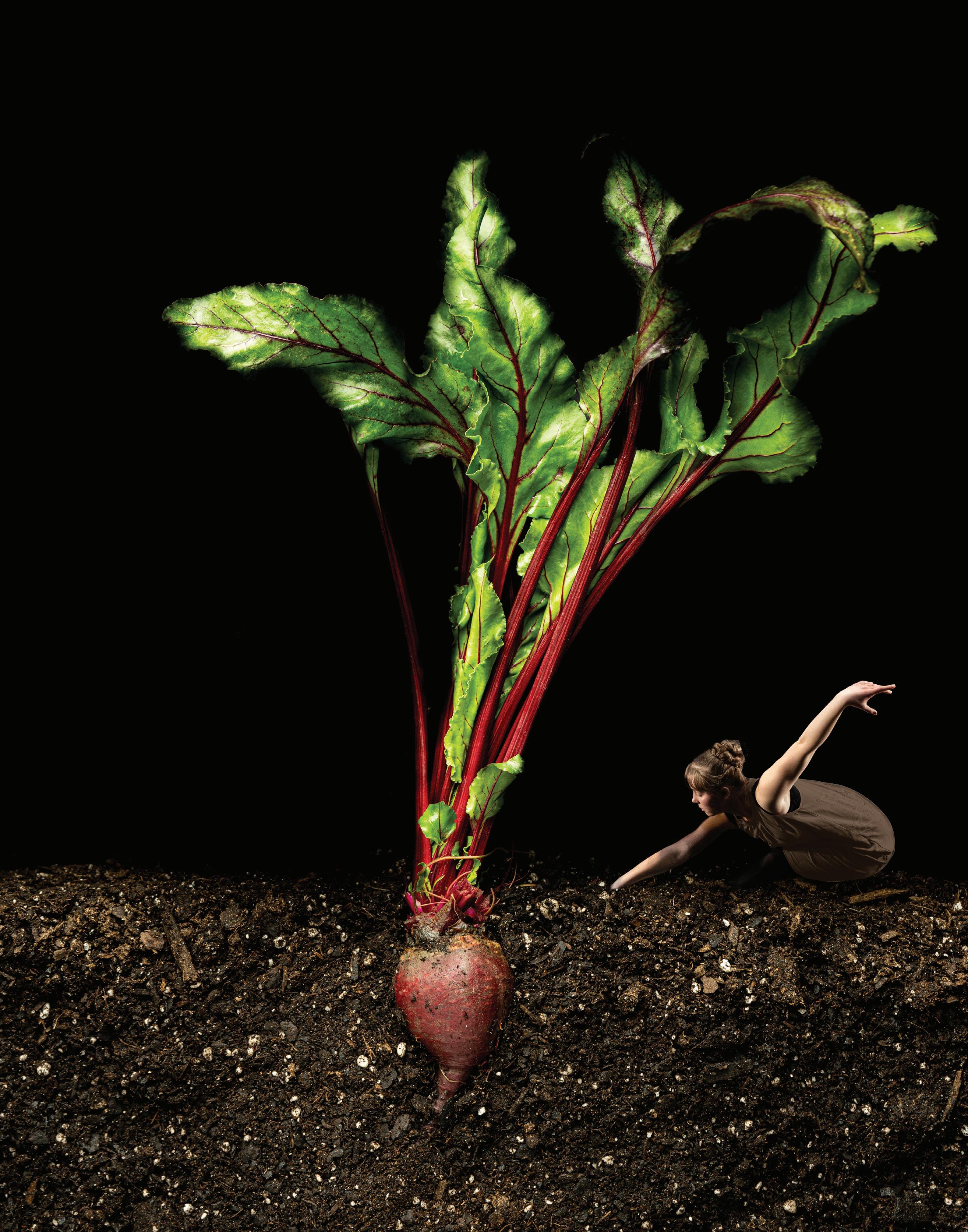
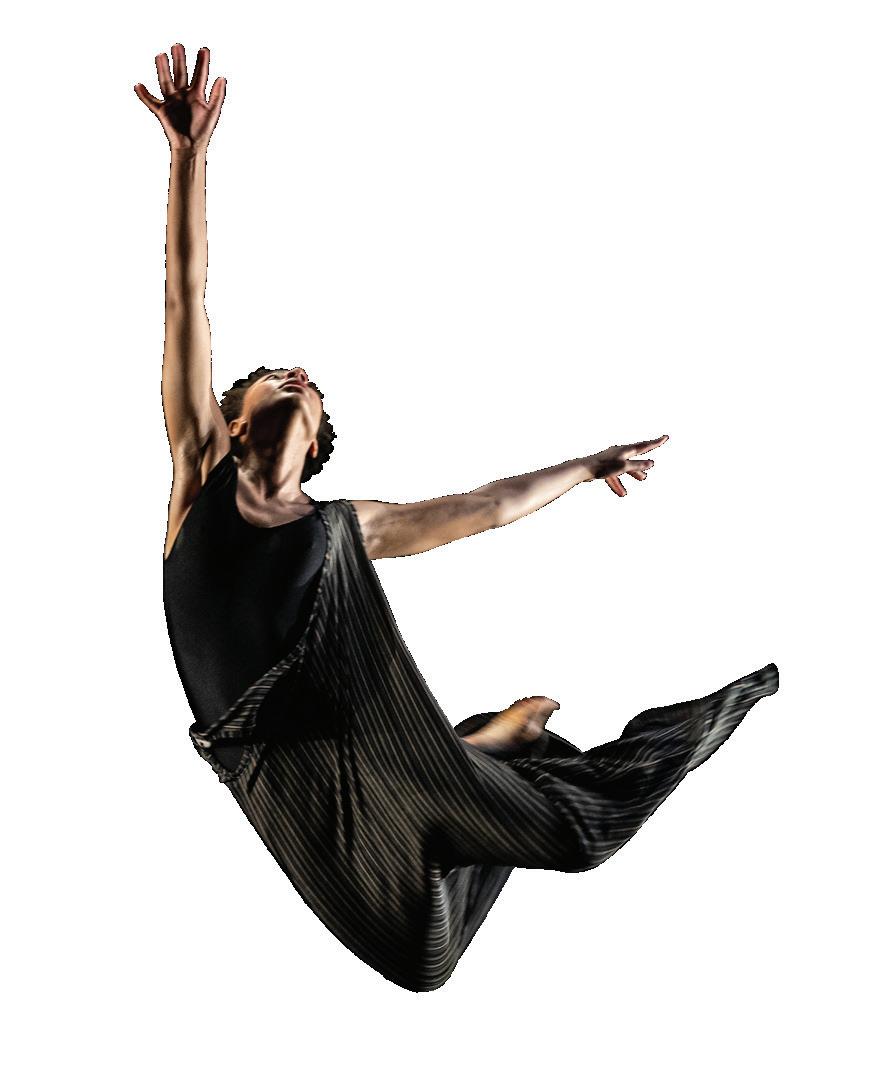
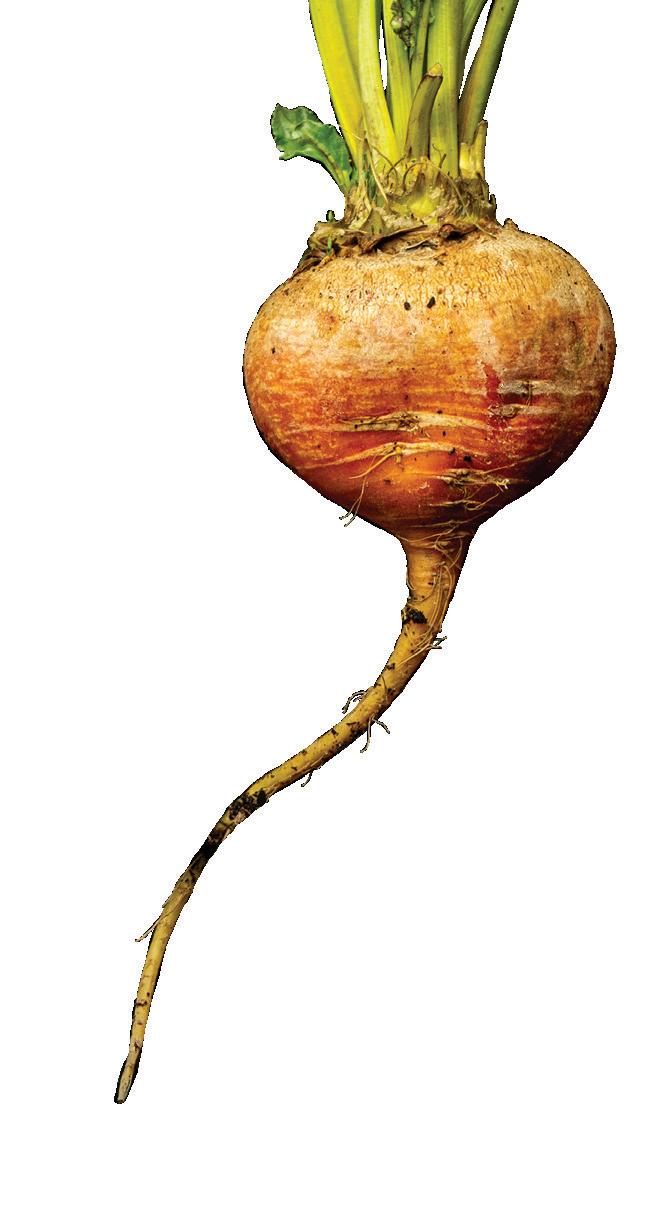

5115 Vilas Hall
821 University Ave. Madison, Wisconsin 53706
Curb is produced and published every fall by a class of UW–Madison School of Journalism and Mass Communication students, and complimentary copies are distributed to thousands of alumni across the state.


Alumni and friends: SJMC is looking to cultivate connections with you to further our mission of providing a world-class, hands-on education. Consider mentoring students, opening doors through career opportunities or providing financial gifts. Email Pam Garcia-Rivera at pgarciariver@wisc.edu to learn how you can get involved.
School of Journalism and Mass Communication Board of Visitors